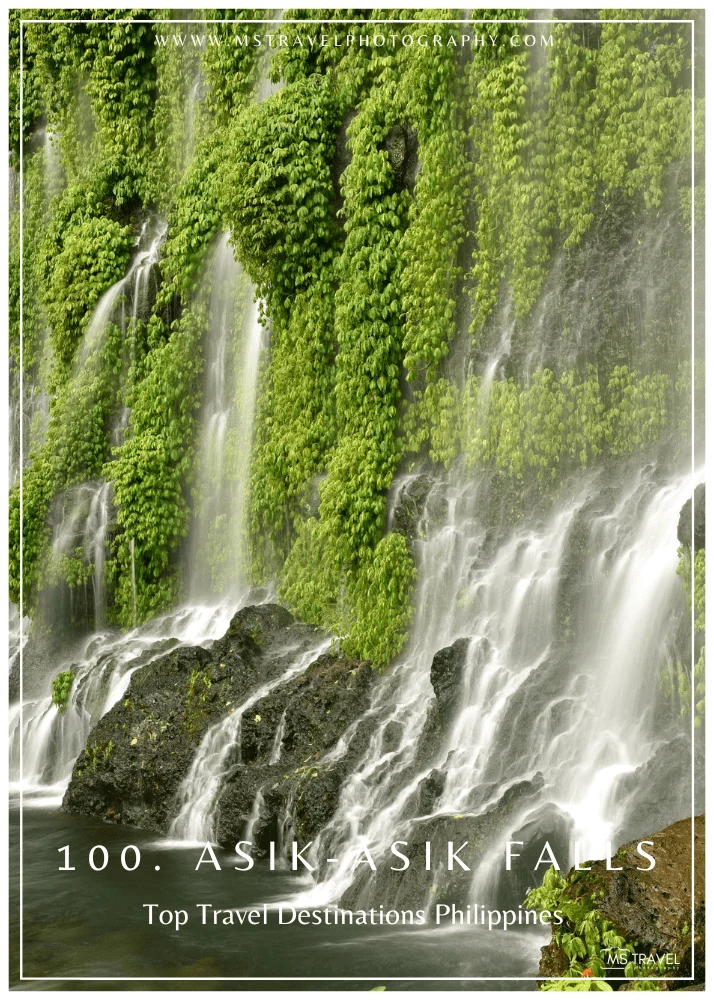Numerous places, each providing its own piece of paradise, await the interested tourist throughout the broad and colorful archipelago of the Philippines. I have traveled around its islands for more than ten years, and I have used a combination of my own experience and extensive research to compile the “Top 100 Top Travel Destinations in the Philippines: Ultimate Guide for 2024”. I can personally attest to the unmatched beauty of the shorelines, peaks, and hidden jewels that are featured in this guide, having visited many of them. Regardless of your level of travel experience, this book will show you the Philippines in all its amazing glory and make sure your 2024 is full of life-changing experiences.
The list is sorted according to popularity, please be aware that local development projects, accessibility issues, and tourism trends can all affect how popular certain places become over time. When making travel plans, always make sure to check for the most recent information and any cautions.
1. Boracay Island
The White Beach in Boracay is well-known around the globe for its blue seas and fine white sand. The island is a hive of activity beyond the beach, with many of pubs and restaurants along the shore. It serves as a center for water sports including diving, kitesurfing, and parasailing. After being restored in 2018, Boracay has become a more environmentally friendly travel destination that successfully combines tourism and business.
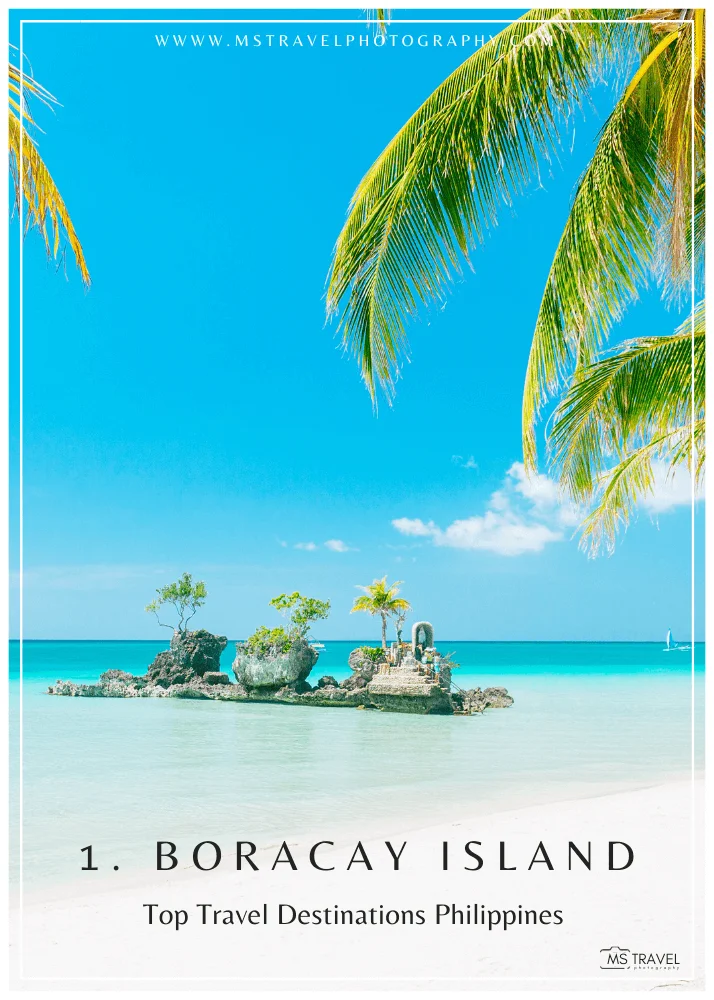
2. El Nido and Coron
Palawan, sometimes called the “Last Frontier of the Philippines,” is known for its immaculate beaches, glistening lagoons, and jaw-dropping limestone cliffs. Particularly El Nido and Coron provide unmatched chances for island hopping and underwater exploration. In addition, these places are marine protection zones with thriving marine life. Because of its unspoiled beauty and peace, Palawan is a popular choice for tourists looking for a true island experience.
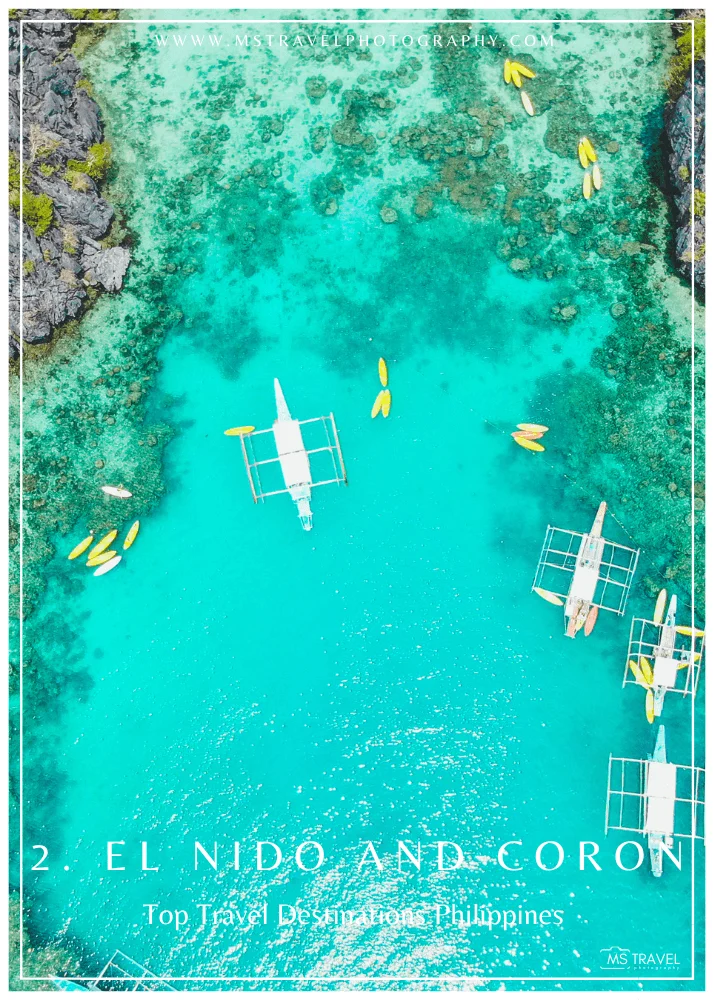
3. Manila
The vibrant Philippine metropolis, Manila, is a fusion of the ancient and the modern. It provides historical locations including Fort Santiago, Rizal Park, and Intramuros, which provide visitors a taste of the rich legacy and colonial past of the nation. While seeing the historic churches and strolling around Intramuros’ walls, visitors may also take in modern Manila’s museums, galleries, and entertainment options.
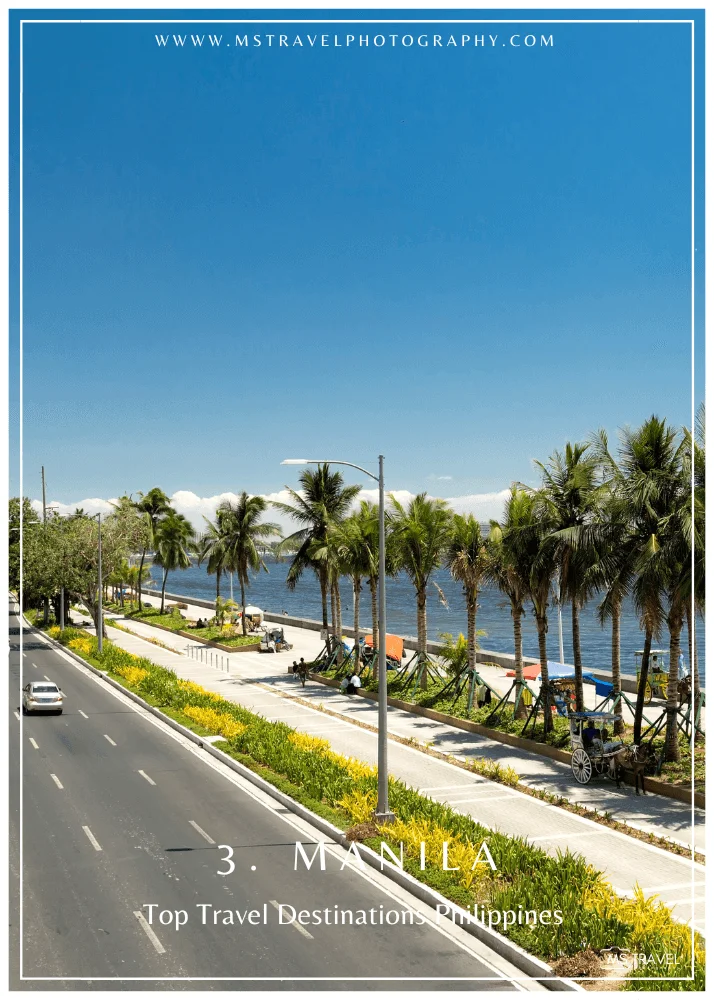
4. Cebu
A historical province, Cebu serves as a starting point for seeing some of the most stunning islands in the nation. Historic sites like the Basilica Minore del Santo Niño and Magellan’s Cross may be found in the city itself. Cebu’s surrounding regions provide gorgeous waterfalls, white sand beaches, and diving locations. Island hopping enthusiasts can start from Cebu and explore neighboring islands that have their own distinct charms.
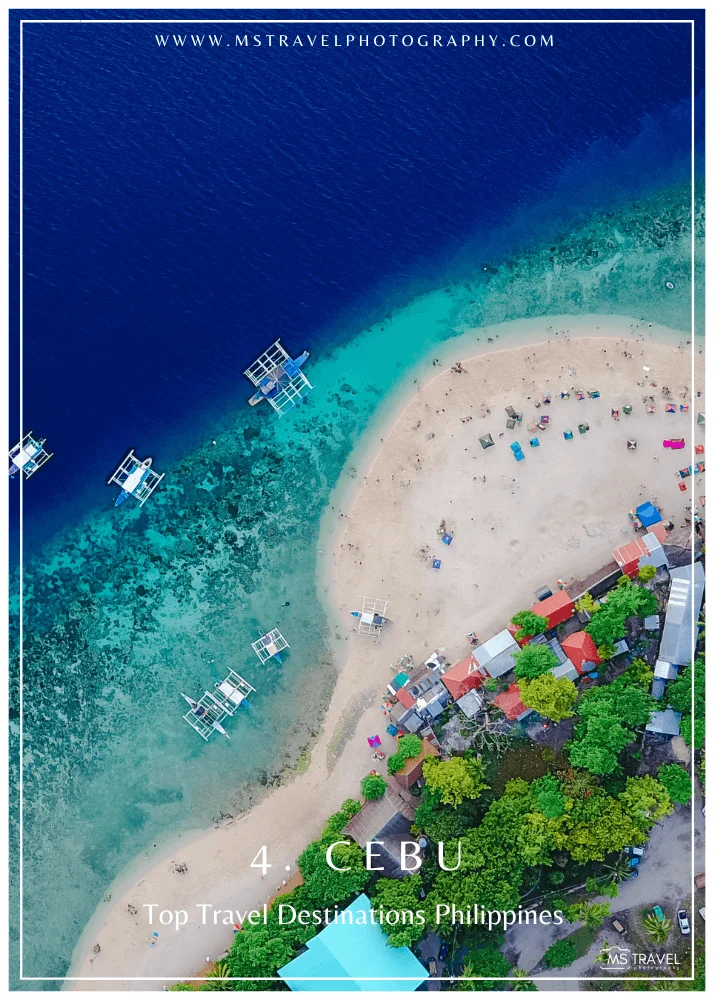
5. Bohol
Bohol is a treasure trove of natural and cultural marvels. The island is well-known for the 1,268 precisely cone-shaped hills known as the Chocolate Hills. It is also home to the little Tarsiers, which are among the tiniest monkeys in the world. Beyond there, Panglao Island lures tourists with its immaculate beaches and dive opportunities, while the Loboc River provides tranquil excursions. Bohol has the historical distinction of being among the first places in the archipelago where Spaniards set foot.
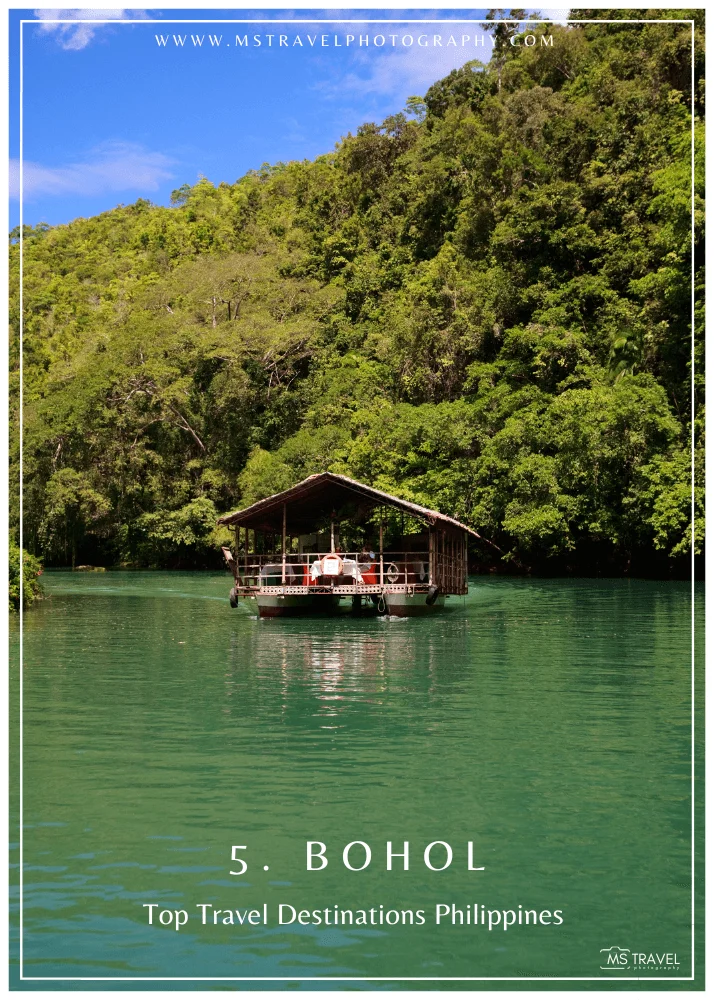
6. Siargao
This island, shaped like a teardrop, is referred to as the Philippines’ Surfing Capital. Siargao has made a name for itself in the global surfing community because to its waves, which draw riders from all over the world. Beyond the surf, though, the island is home to enormous mangroves, pristine lagoons, and undiscovered nooks. Siargao’s natural beauty and laid-back island feel make it an enticing travel destination for thrill-seekers and relaxation lovers alike.
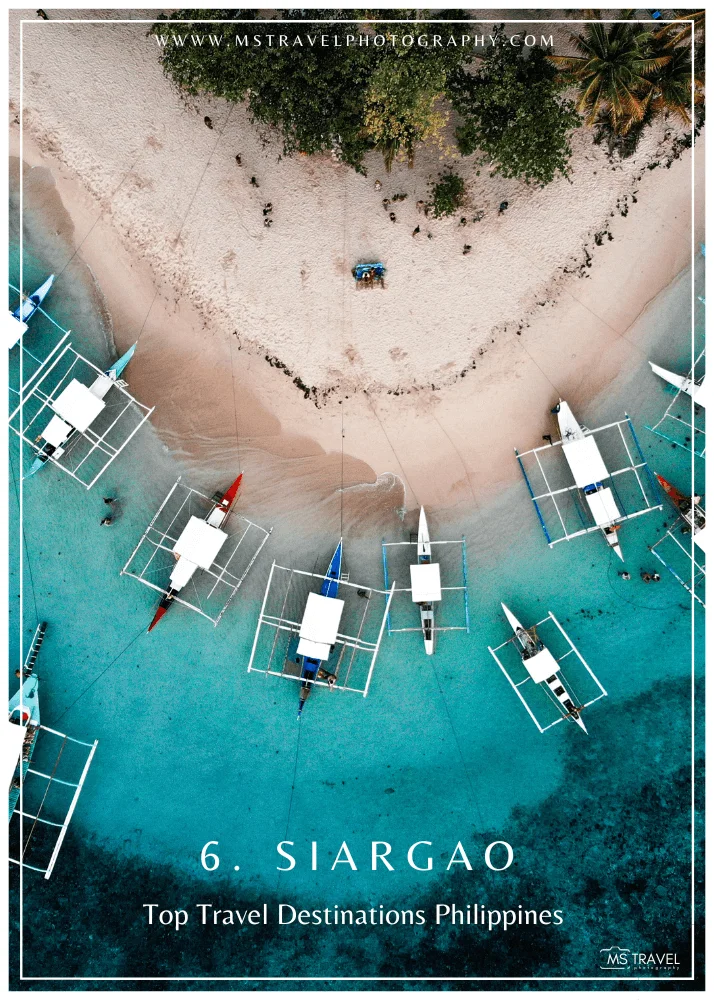
7. Vigan
Vigan, a UNESCO World Heritage Site, provides evidence of the rich history of Spanish colonization in the Philippines. With its cobblestone streets and well maintained Spanish-era buildings, the city takes tourists on a trip through time. “Kalesas,” or horse-drawn carriages, provide trips throughout the city so visitors may take in the charming atmosphere of the past. Vigan is renowned for its distinctive regional cuisine, which reflects its influences from the past.
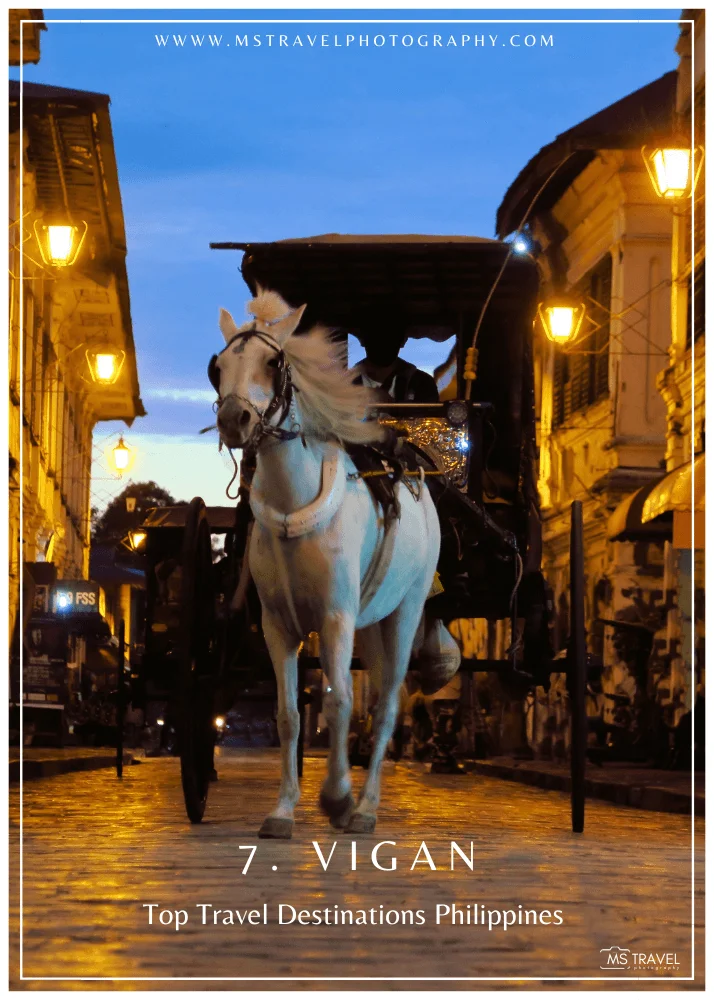
8. Banaue and Batad Rice Terraces
These terraces, which the indigenous inhabitants of Ifugao carved into the mountains, are sometimes referred to as the “Eighth Wonder of the World.” They symbolize the balance between nature and humanity in addition to being a striking sight. Many people are in awe of the expansive views of these historic rice terraces, especially around morning. Additionally, tourists may learn about the traditional Ifugao way of life at the adjacent cultural villages.
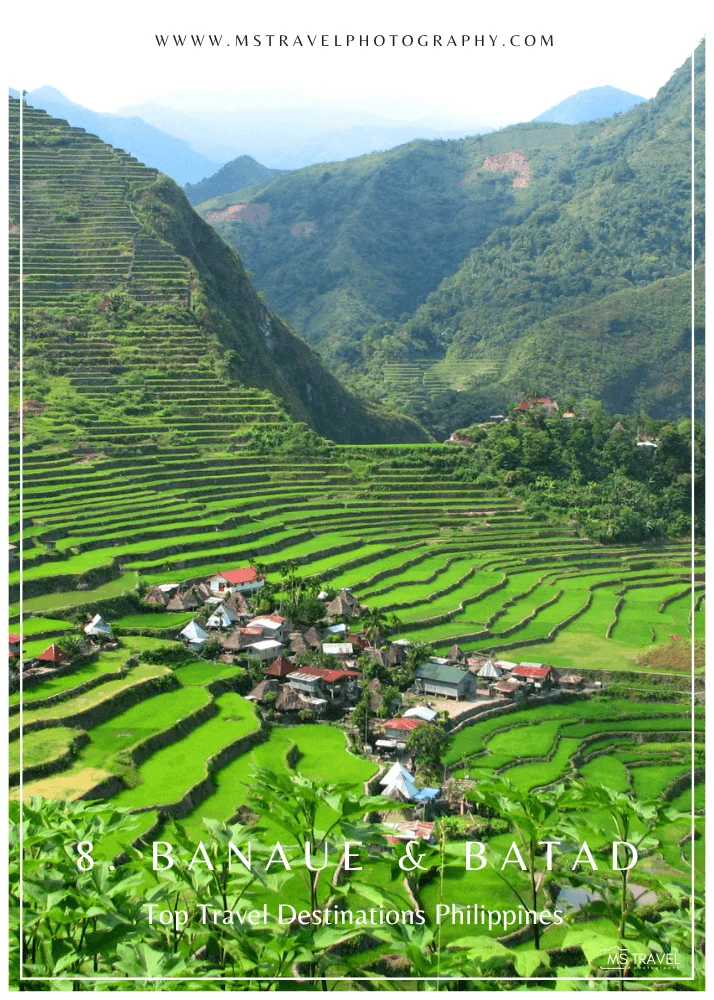
9. Davao City
Situated in the southern region of the nation, Davao City offers a unique combination of natural and urban attractions. Nestled in the city lies the Philippine Eagle, an endangered species, and environmental preservation is highly valued. With the Davao Gulf at its front and Mount Apo, the highest peak in the nation, as its backdrop, the city provides a range of activities, from beachcombing to mountain climbing. Davao is an even more charming city because of its kind population and rich cultural heritage.
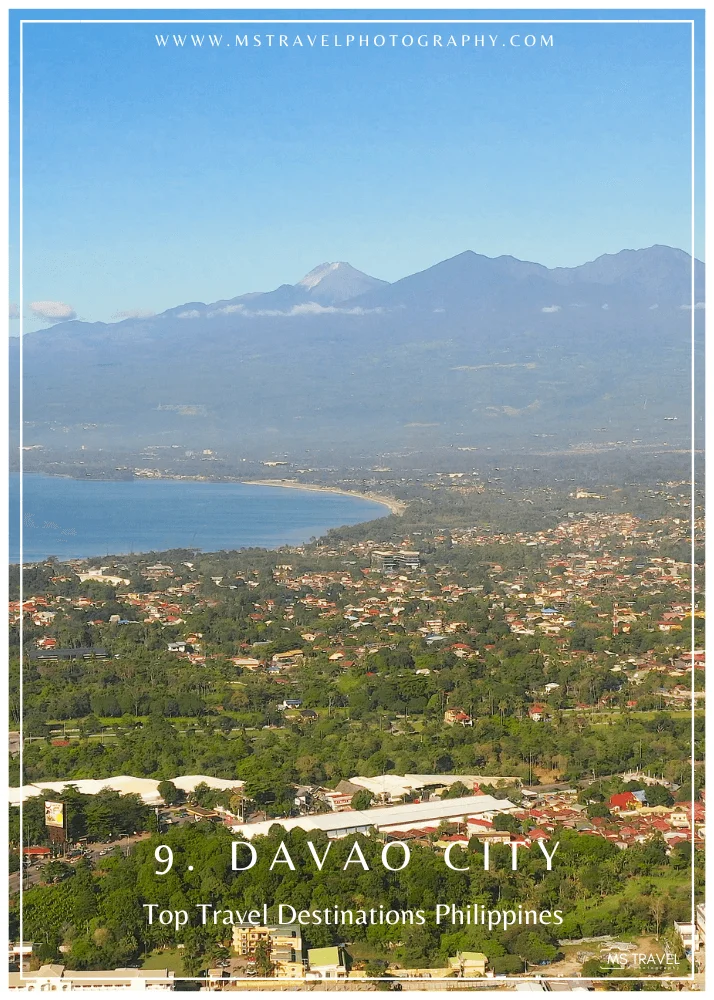
10.Pagsanjan Falls
Known as “Cavinti Falls” or Pagsanjan Falls, these are among the most well-known waterfalls in the nation and are situated in the province of Laguna. A exciting boat trip over the river that winds through mossy greenery and large stones brings guests to this magnificent waterfall. The cold waters of the cascade and the lush surroundings offer a welcome diversion from the heat of the tropics.
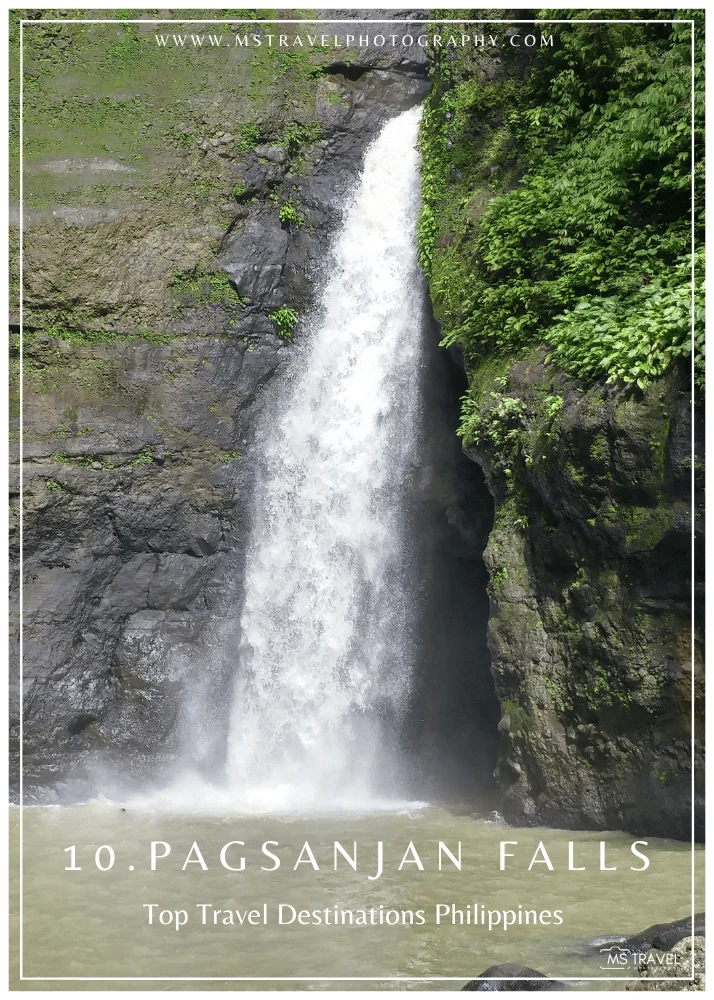
11. Oslob
Oslob, a city in southern Cebu, is well-known across the world for its whale shark contact cruises. Swimmers get the exceptional chance to swim next to these kind giants in their natural environment. Although the main attraction is the whale sharks, Oslob also has stunning waterfalls and heritage monuments that offer a unique combination of the natural world and extensive history.
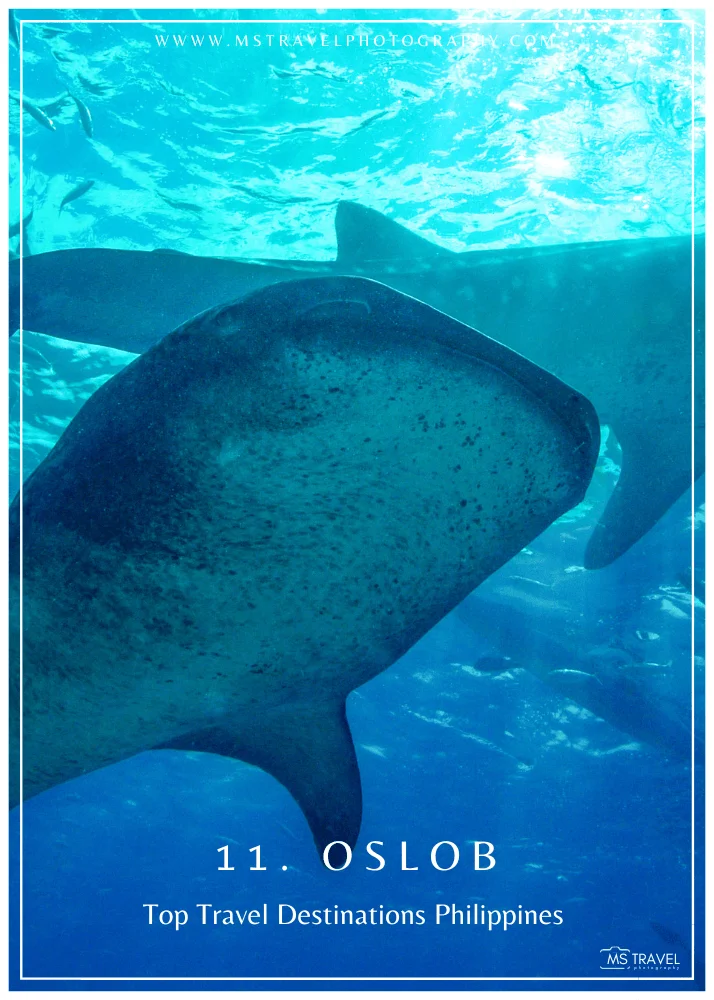
12. Camiguin
With its gorgeous waterfalls, white sand beaches, and natural hot springs, this pear-shaped volcanic island is a genuine jewel. A prominent feature that bears witness to the island’s volcanic beginnings is the Sunken Cemetery, denoted by a large cross situated above the ocean. The island is a snorkeler’s and diver’s paradise because of its abundant marine life.
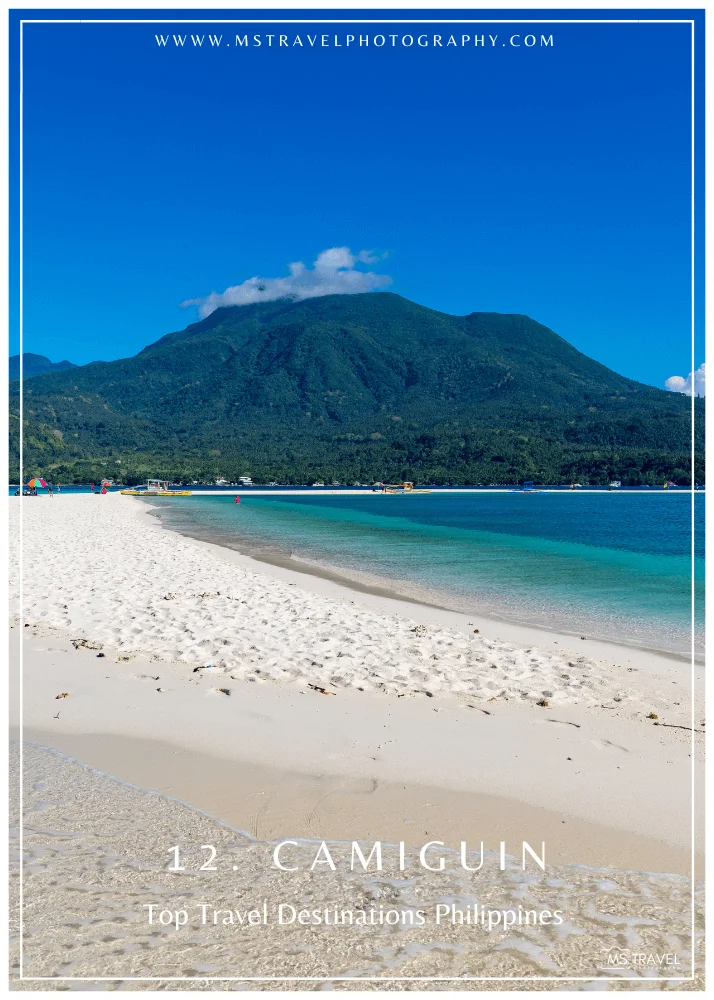
13. Baguio
Known as the “Summer Capital of the Philippines,” Baguio’s altitude provides a refreshing break from the tropical heat of the nation. The city is well-known for its stunning vistas, which include Mines View Park and Burnham Park. Though the city’s appeal is evident all year round with its lively markets and local arts scene, the Panagbenga or Flower Festival, which features a parade of floats covered with flowers, draws thousands of visitors each year.

14. Siquijor
Siquijor is a magical island that is frequently connected to mysticism and mythology. The island has a magical atmosphere with its charming waterfalls, old balete trees, and beautiful beaches. Beyond the myths, Siquijor is a popular spot for contemplation and relaxation since it provides a tranquil setting for anyone looking to get away from the bustle.
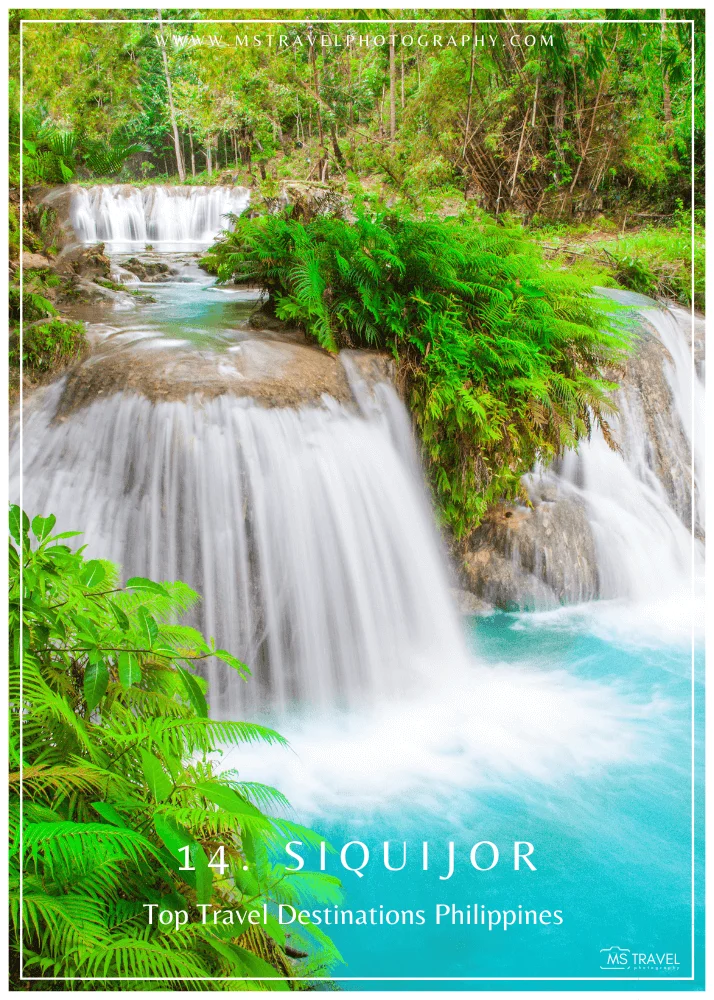
15. Tagaytay
With views of the tranquil Taal Lake and the dramatic Taal Volcano, Tagaytay offers pleasant weather and stunning sights. A popular weekend escape for many Manila locals, the city has a variety of places to relax, eat, and engage in recreational activities. It is a very remarkable sight to see the tiniest volcano on Earth within a lake that is part of a larger lake.
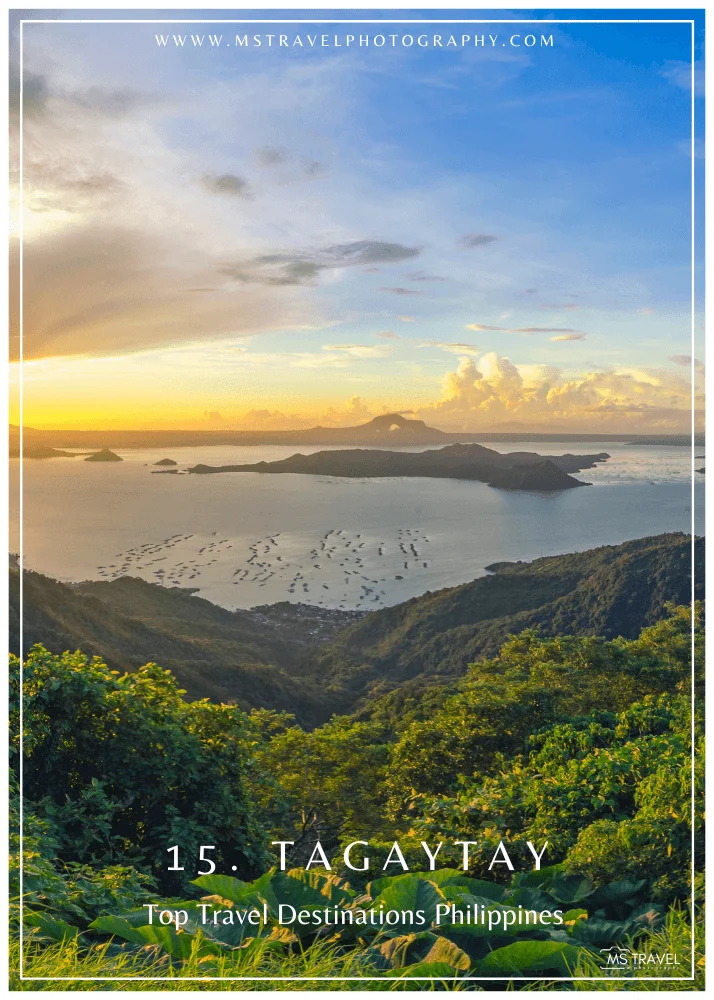
16. Tubbataha Reef
Situated in the Sulu Sea, Tubbataha is a diver’s paradise and a UNESCO World Heritage Site. Numerous coral types and a broad range of marine life, including as sharks, turtles, and manta rays, may be found in this marine sanctuary. It is among the greatest diving locations in the world because of its clear waters and diverse underwater environment.
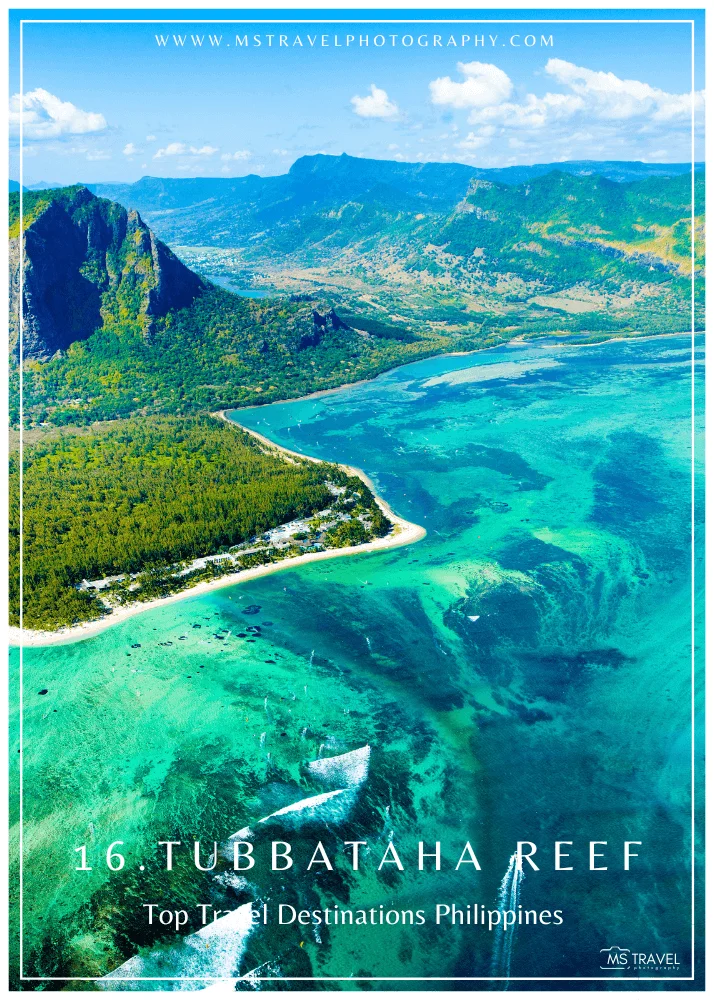
17. Subic Bay
Subic Bay, formerly a US Naval Base, is now a thriving business and leisure destination. It provides visitors with a wide range of activities thanks to its beaches, entertainment parks, and well-preserved rainforests. In addition, the bay is well-known for its shipwreck diving locations, which serve as a reminder of its importance in World War II history.
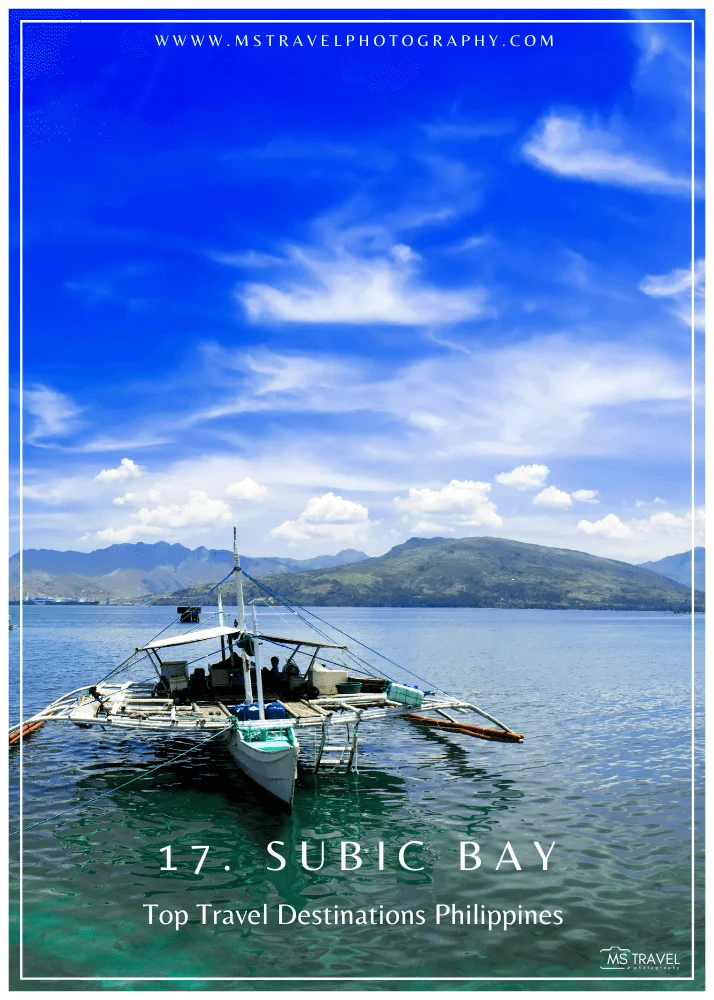
18. Hundred Islands
The Hundred Islands National Park, a group of 124 islands and islets with individual charms, is situated in Pangasinan. Divers and snorkelers alike may enjoy cliff diving, cave exploring, and snorkeling at this park. The majority of the region maintains its natural beauty since just a small number of the islands have been developed for tourism.
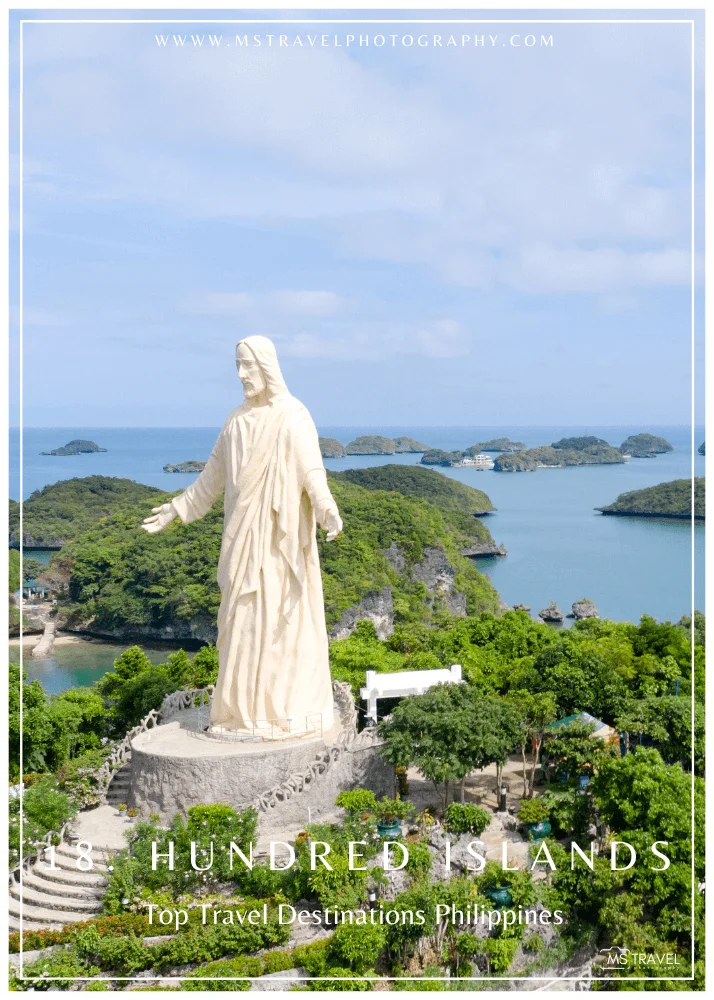
19. Pandan Island, Mindoro
The privately owned resort and refuge of Pandan Island is located just a short boat ride from Sablayan, Occidental Mindoro. It’s a great place to dive and snorkel because of its colorful coral gardens.
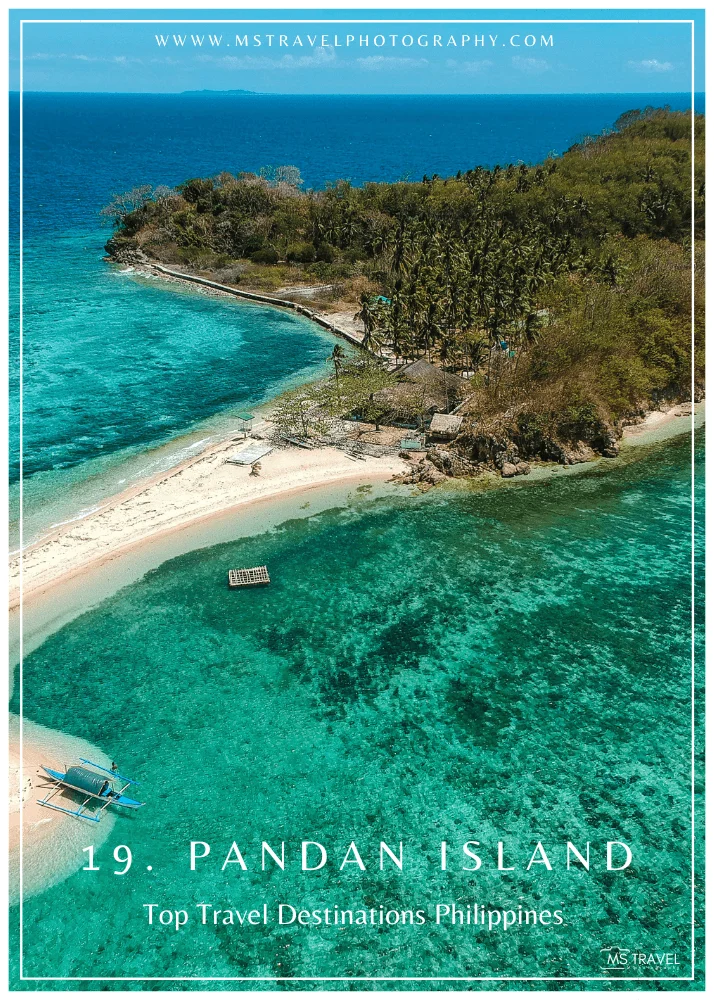
20. Samar and Leyte
These nearby Visayan islands provide a unique combination of natural beauties, adventure, and history. The longest bridge in the nation and a feat of architecture is the San Juanico Bridge, which spans the two islands. These islands are a sanctuary for nature lovers and explorers alike because of their vast cave systems, immaculate beaches, and waterfalls.
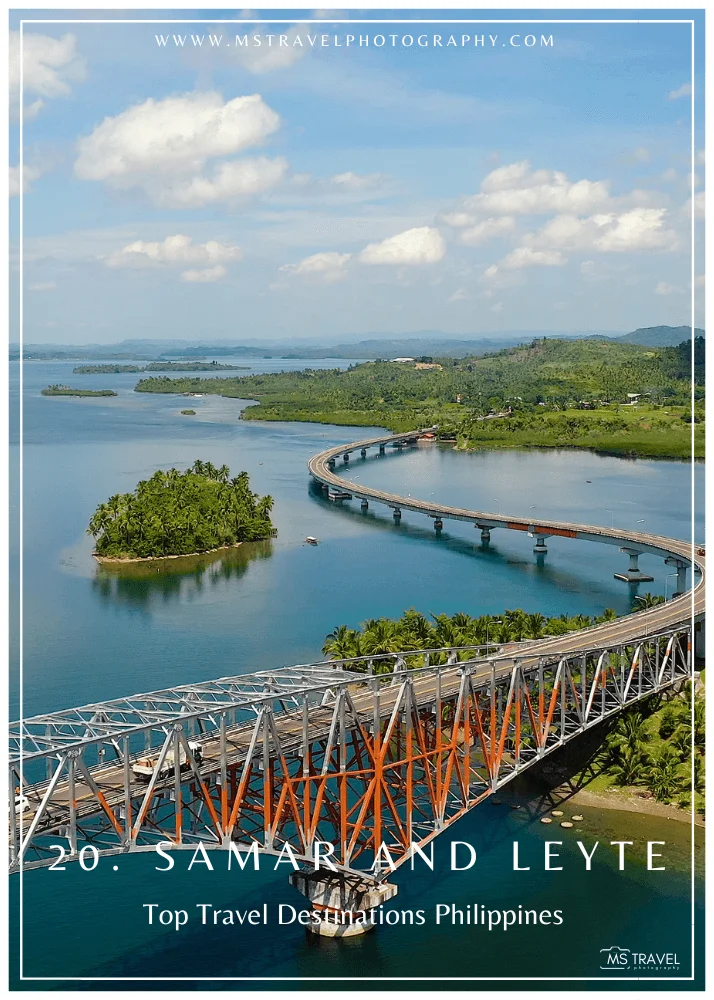
21. Iloilo
Known as the “City of Love,” Iloilo has a blend of churches from the Spanish era, contemporary facilities, and delicious food. Despite being a celebration, the Dinagyang celebration showcases the city’s rich history and culture and is an essential element of its character. Iloilo boasts stunning islands and coastal regions outside of the city, such the Gigantes Islands, which are ideal for seafood lovers and beach combing.
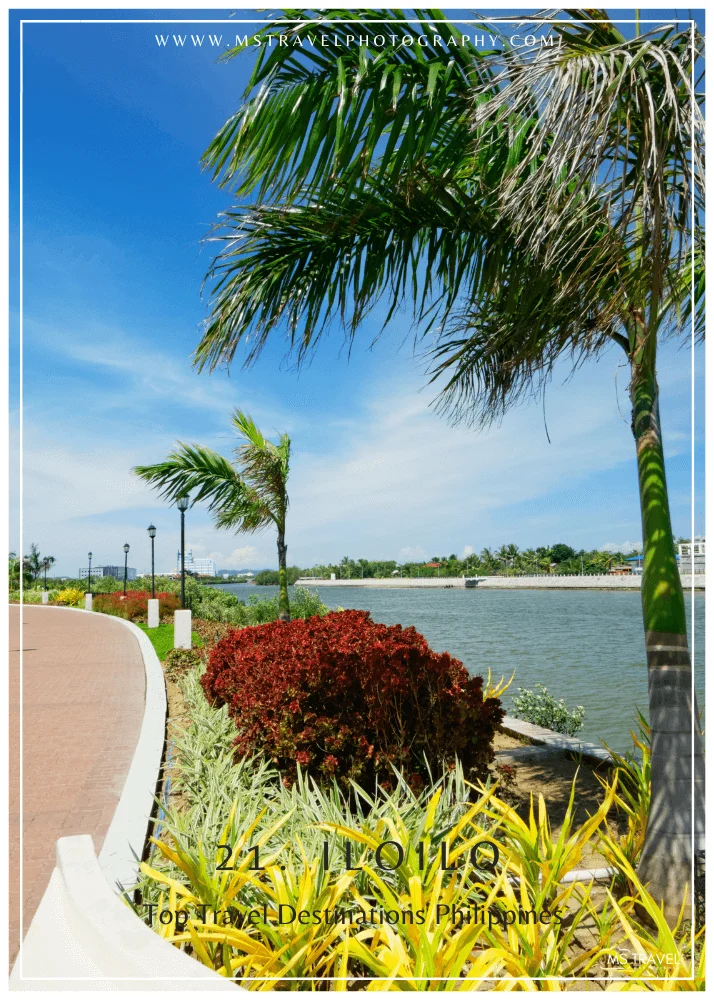
22. Rizal
Rizal, near Manila, is a haven for lovers of the arts and outdoors. The province is home to the expansive Pinto Art Museum, which features indigenous and modern artwork in a setting with Mediterranean influences. In addition, Rizal is well-known for its mountains, caves, and waterfalls, which provide city people seeking a quick escape into nature with easy access.
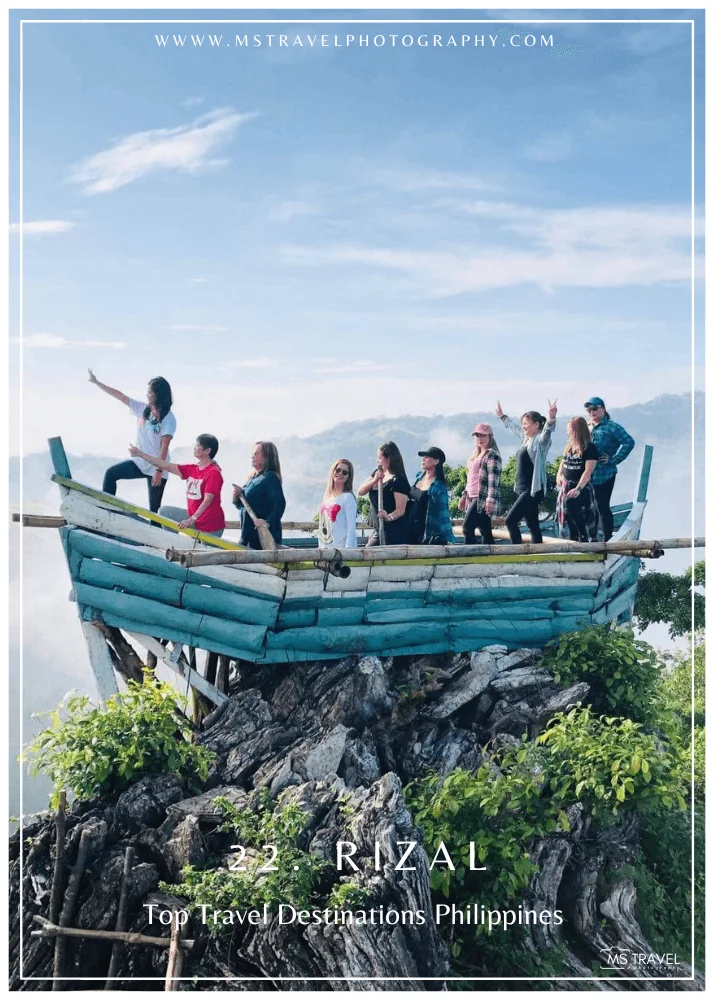
23. Mactan
Mactan, which is close to Cebu City, is well-known for its opulent resorts and diving locations. In addition to being rich in history, it is the location of the great statue that honors the Portuguese explorer Ferdinand Magellan’s death at the hands of the native chieftain Lapu-Lapu.
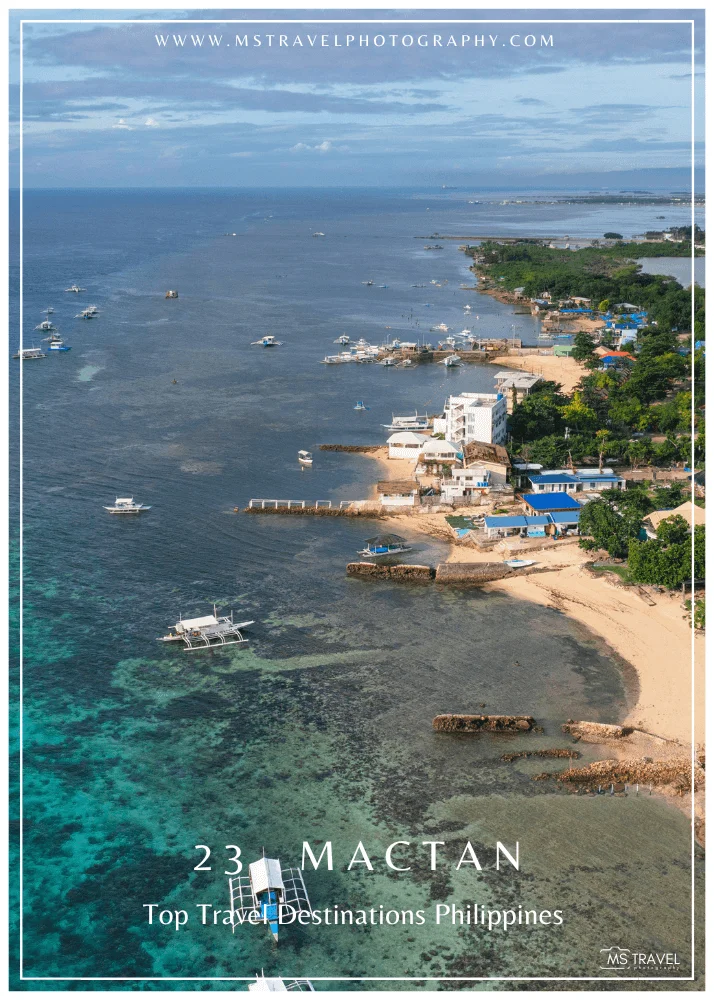
24. Zamboanga City
Because of its Spanish-influenced Chavacano language, Zamboanga is known as “Asia’s Latin City” and provides a distinctive fusion of Spanish and Filipino traditions. The city is a location rich in natural beauties and history, with the stunning pink sand beach of Sta. Cruz Island and the ancient Fort Pilar.
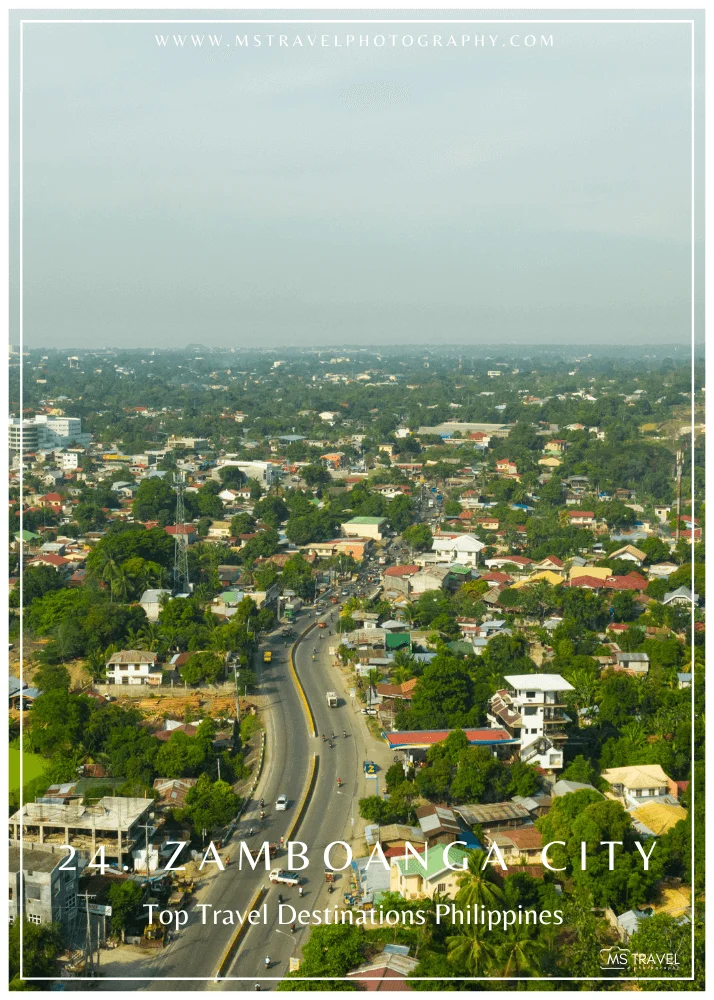
25. Negros Island
This island, which is divided between the provinces of Negros Oriental and Negros Occidental, is home to a wide range of attractions, including the calm beaches of Sipalay and the vibrant Bacolod City, which is well-known for its MassKara Festival and delicious chicken inasal.
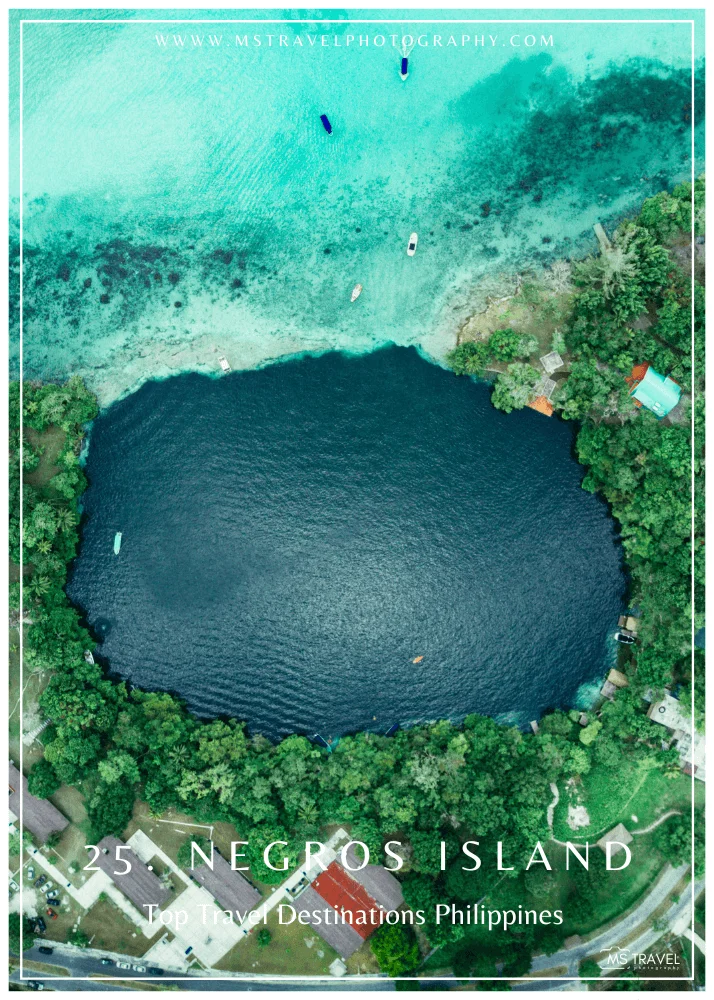
26. Batanes
Batanes, the Philippines’ northernmost province, is sometimes referred to as the nation’s “Scotland” because of its rugged terrain and undulating hills. The indigenous Ivatans have continued to live in peace with the natural world and keep their ancient stone homes.
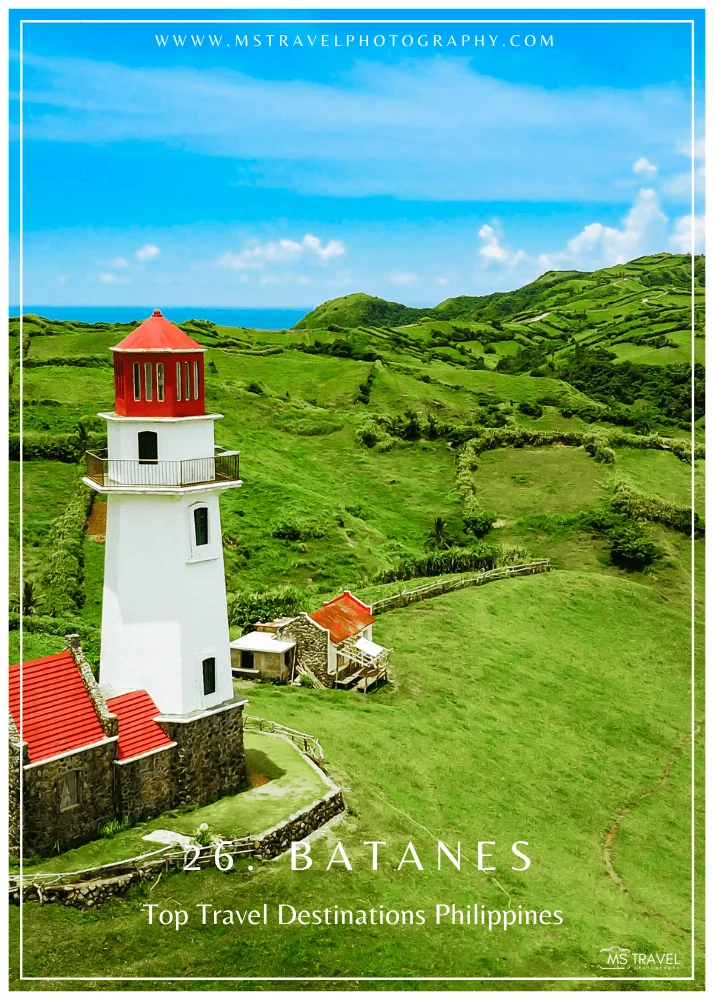
27. Donsol
It is this location that made the Philippines known as the “Whale Shark Capital of the World.” Donsol promotes sustainable tourism by providing an environmentally beneficial means of interacting with these gentle giants. Observing fireflies along the Donsol River is as equally captivating as swimming with whale sharks.
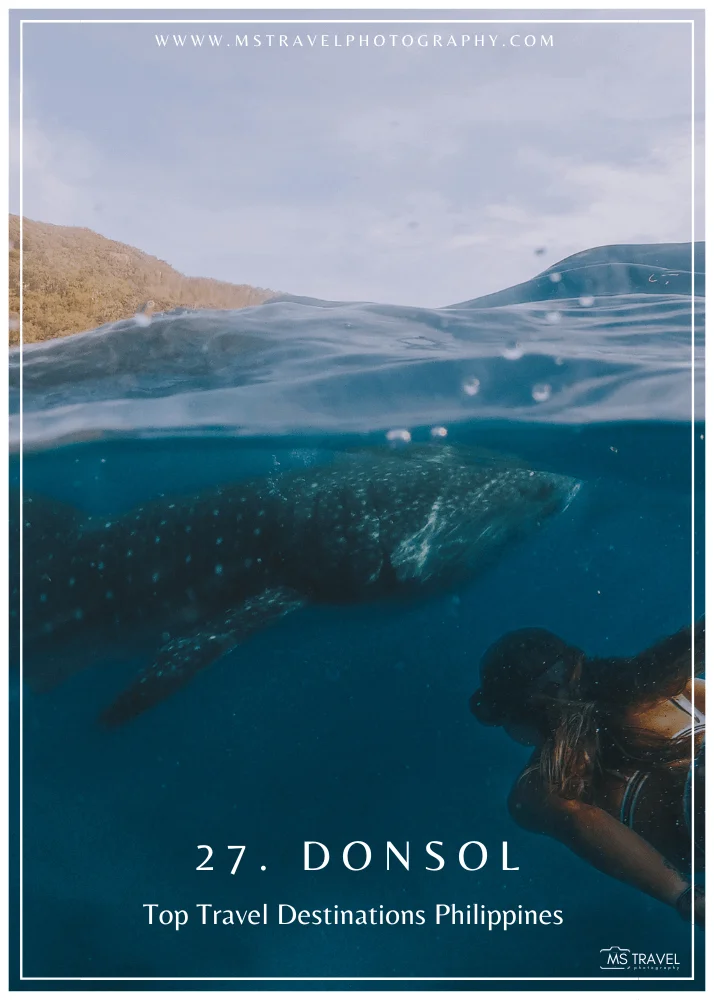
28. Camotes Islands
Situated in the Camotes Sea, this collection of islands is renowned for its pristine white sand beaches, glistening seas, and tranquil surroundings. Camotes is a lesser-known treasure that provides the peace and quiet of an island living away from popular tourist destinations.
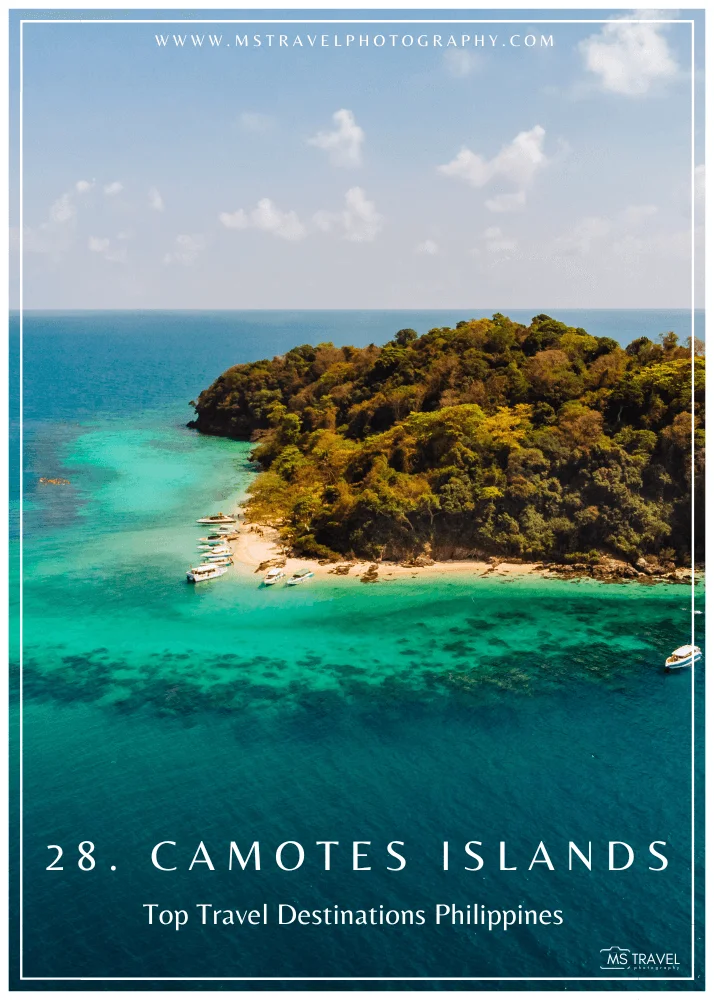
29. Apo Island
Popular for diving and snorkeling, Apo Island is located off the southeast corner of Negros. The marine sanctuary on the island is a refuge for those who enjoy diving since it is home to a wide variety of marine life and vibrant corals.
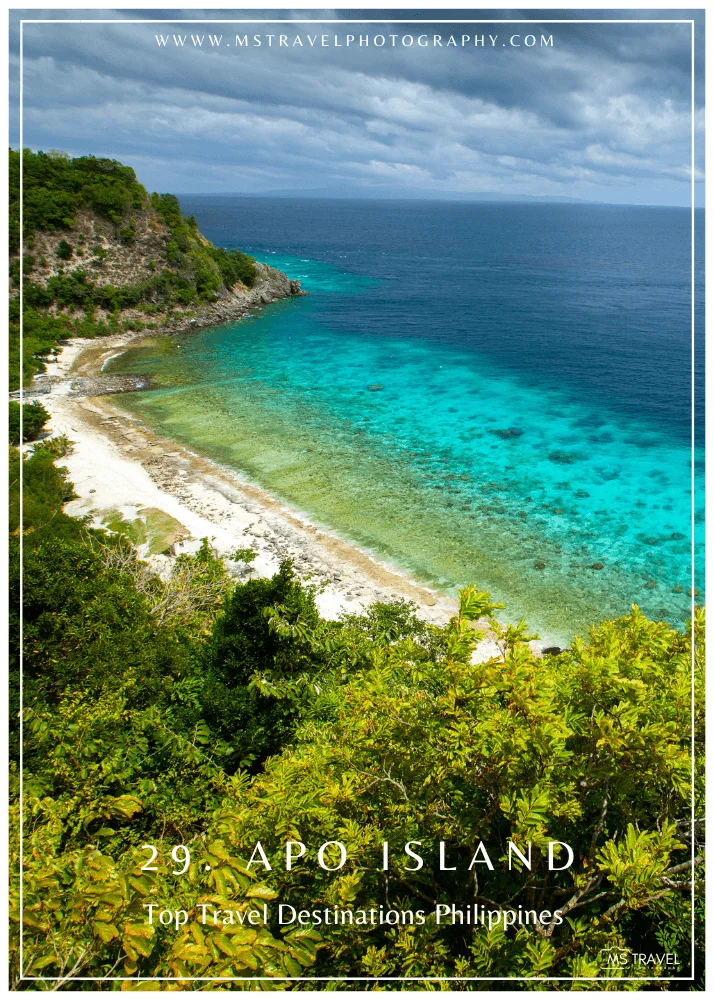
30. Bucas Grande & Sohoton Cove
Above Siargao, Surigao del Norte offers tranquil Sohoton Cove on the Bucas Grande islands. Recognized for its haven for jellyfish, captivating caverns, and lagoons, it offers visitors an experience apart from the typical tourist route.
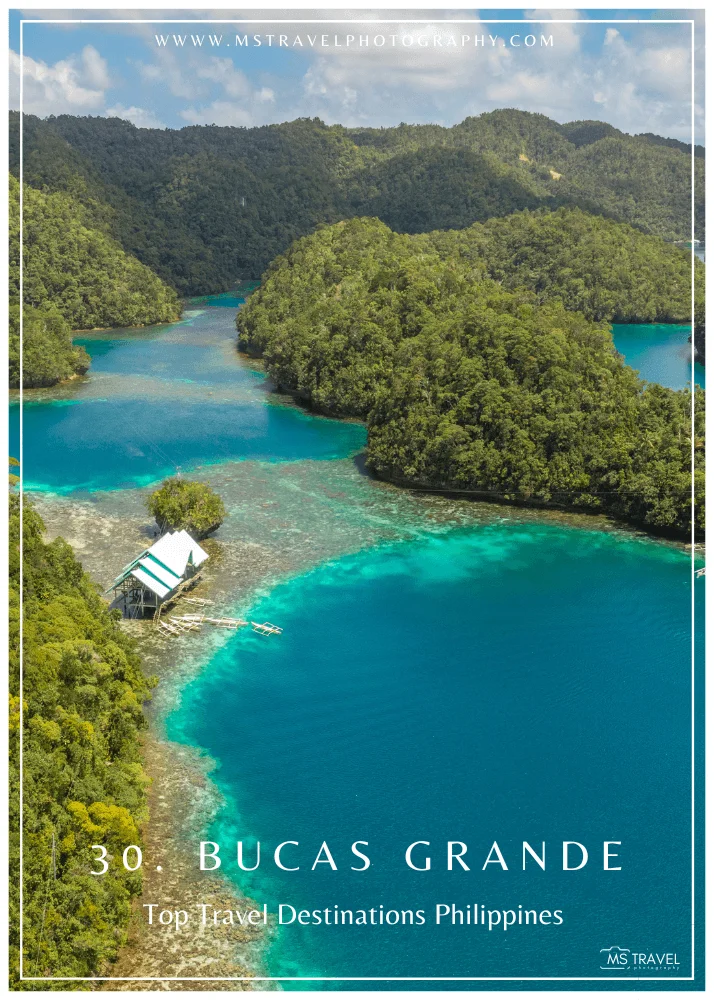
31. Corregidor Island
Corregidor is a historically significant place that saw intense fighting between Japanese and American-Filipino forces during World War II while serving as a stronghold. Today, it serves as a location where tourists may learn about the history of the Philippines during World War II while exploring ruins, tunnels, and artifacts.
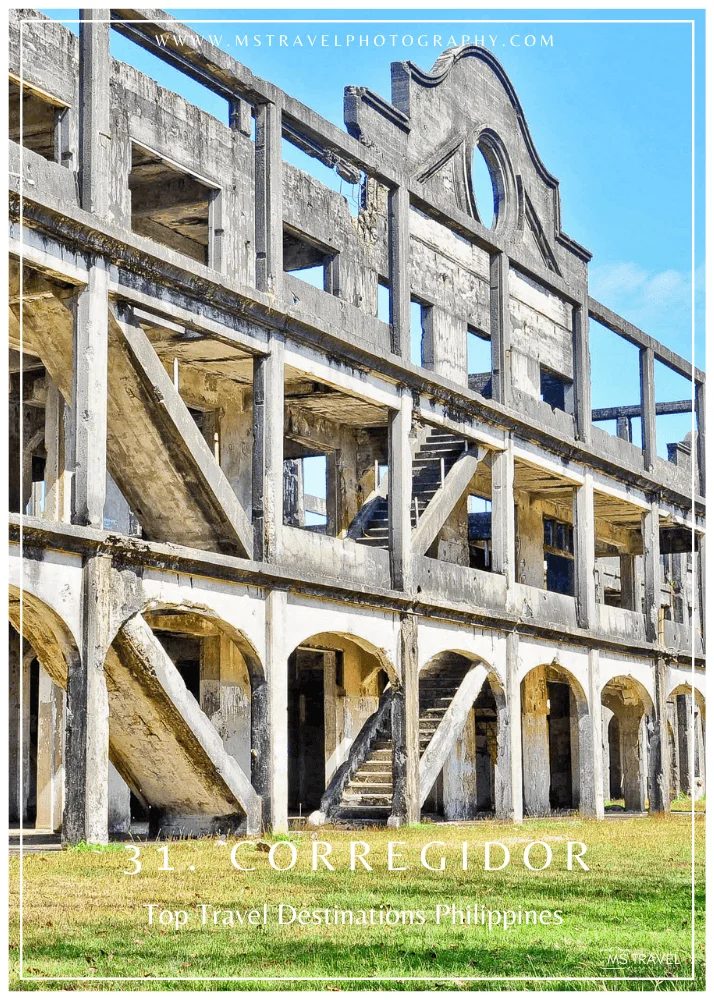
32. Angeles City
Known as the “Culinary Capital of the Philippines,” Pampanga—especially Angeles City—offers a wide range of traditional Filipino cuisine. In addition to its delicious food, the city offers access to the yearly hot air balloon festival and exhibits a rich past through its old buildings and churches.
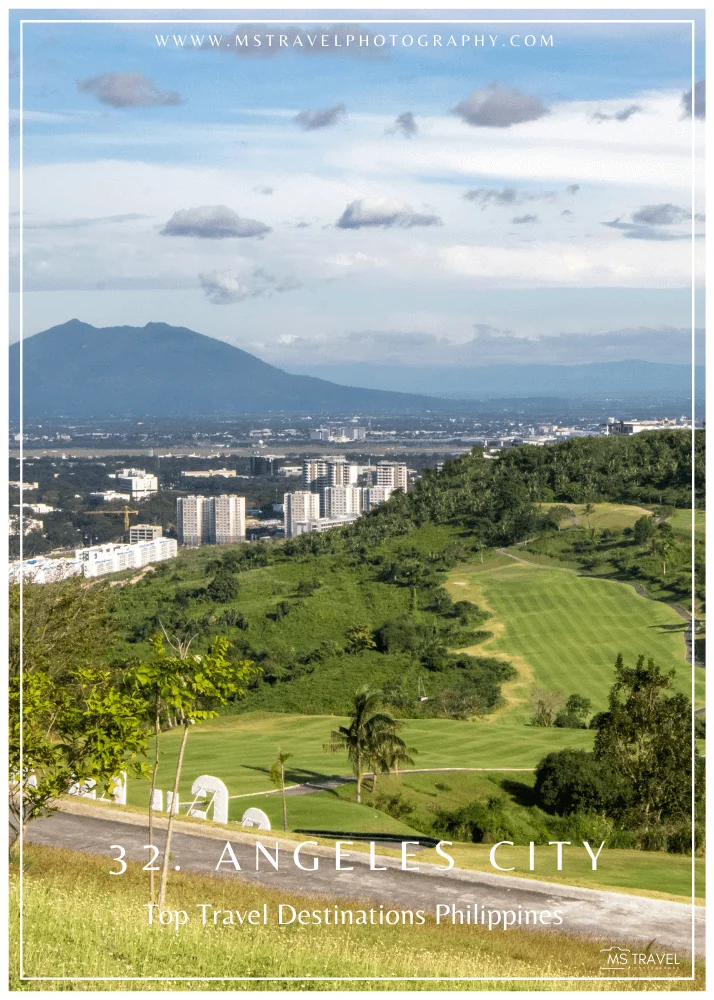
33. Caramoan Peninsula
Caramoan is a remote region in the Bicol Region that is home to breathtaking beaches, limestone cliffs, and crystal-clear seas. It is located in Camarines Sur. It is now well-known around the world for being the site of several “Survivor” TV series filmings.
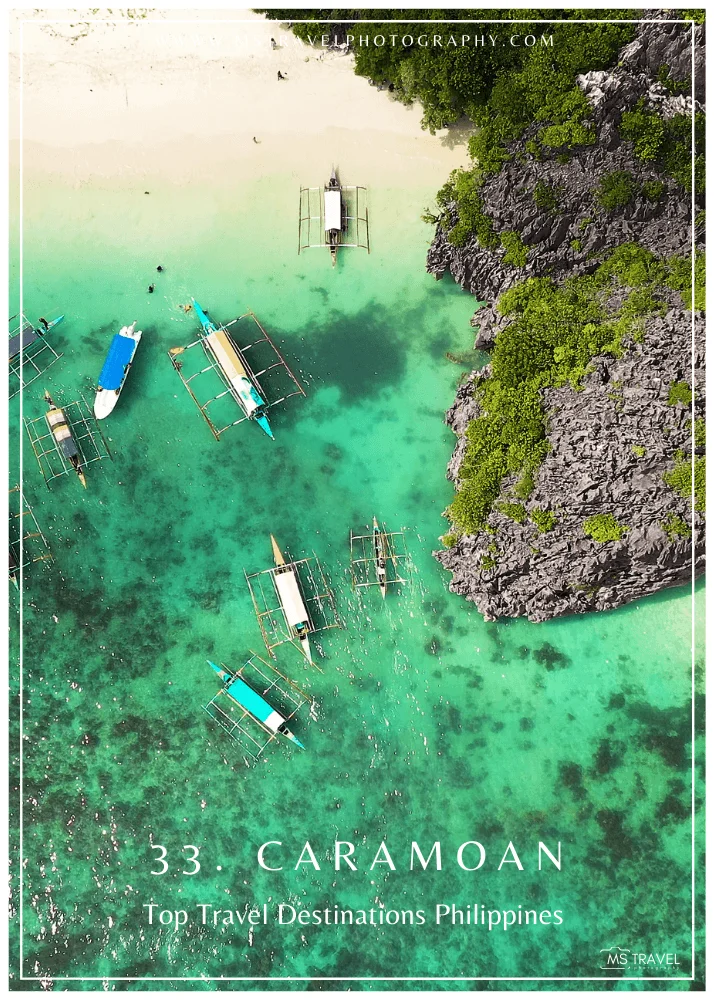
34. Catanduanes
Catanduanes, known as the “Land of the Howling Winds” due to its frequent typhoons, has pristine beaches, undulating hills, and rocky terrain. The island is well-known for its surfing locations, particularly Puraran Beach.

35. Sagada
Sagada, which is tucked away in the Cordillera Mountains, is well-known for its hanging coffins—an ancient burial practice. The town has a distinct fusion of native and colonial elements, a cold temperature, magical caverns, and gorgeous valleys.
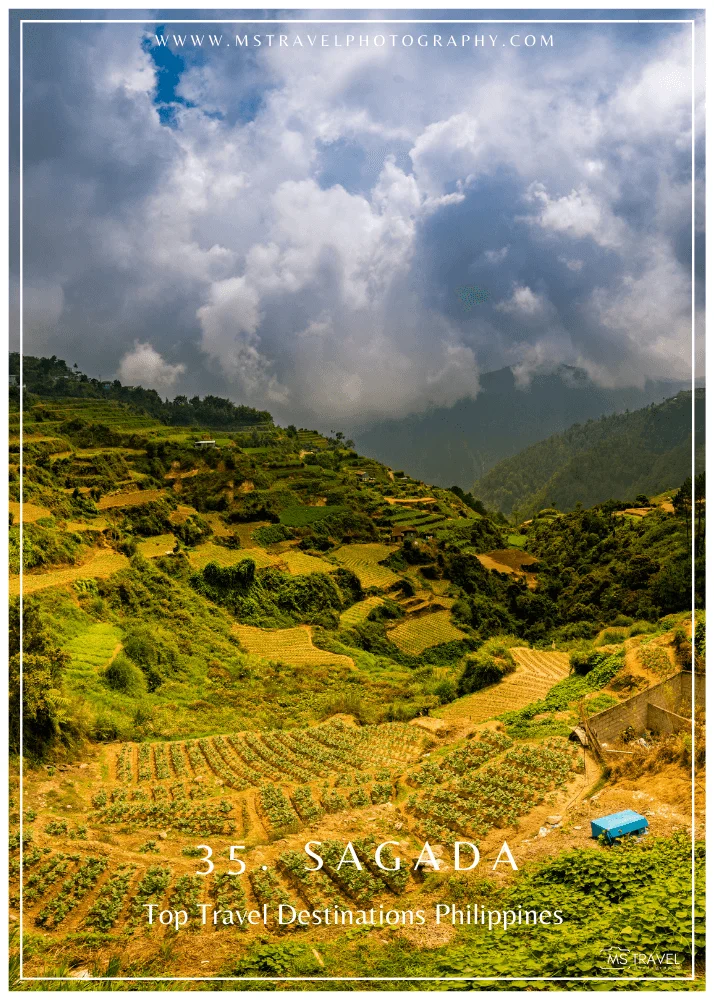
36. Kalanggaman Island
Kalanggaman Island, known for its extensive stretches of fine white sandbar, is a tropical haven with calm beaches, pristine seas, and an abundant undersea habitat that is ideal for snorkeling.
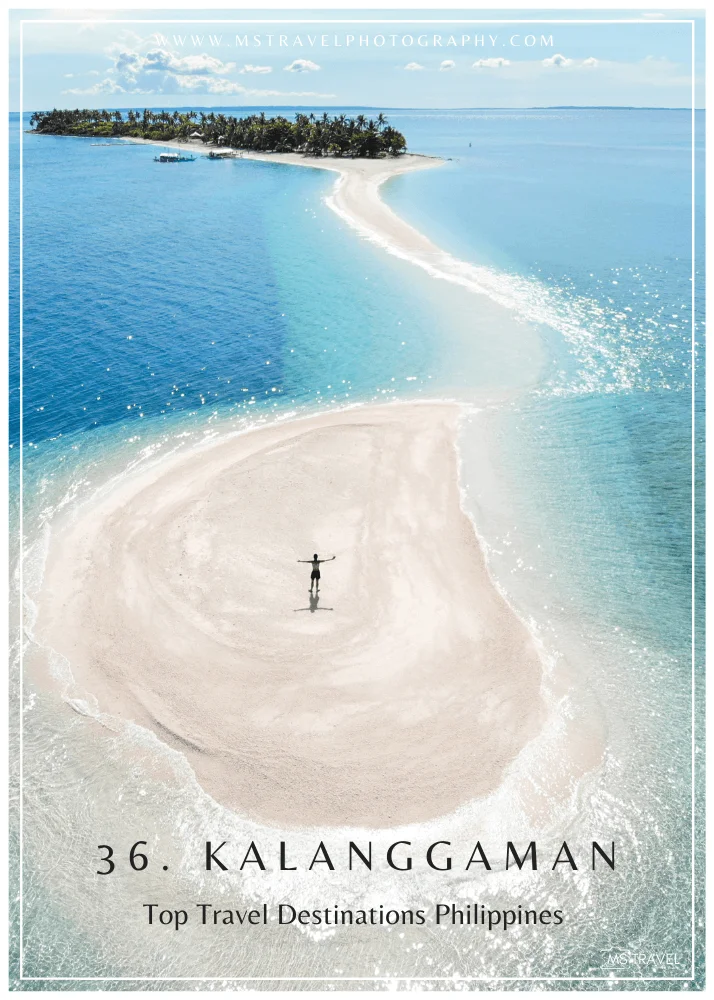
37. Romblon
There are unspoiled marine reserves and immaculate beaches in this region of archipelago. Renowned for its marble industry, tourists may see artists create elaborate masterpieces. Romblon is a peaceful beach location because to the sandbar at Bonbon Beach and the seclusion of Cresta de Gallo.
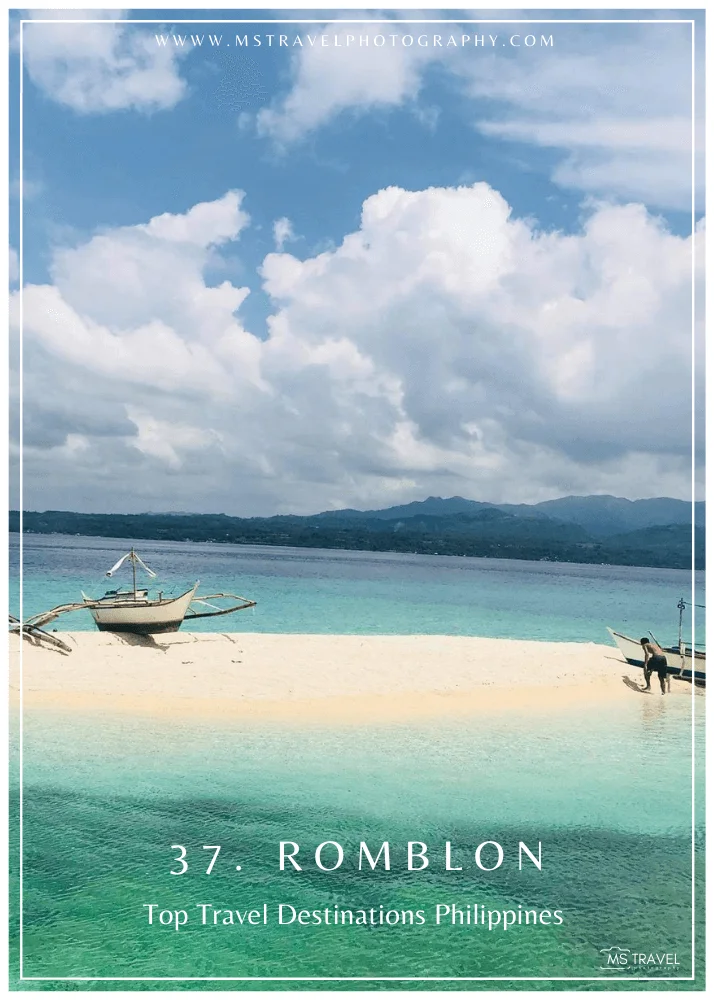
38. Ticao Island
A section of the Burias-Ticao Pass Ticao Island, a protected seascape, is well-known for the Manta Bowl, a diving location where manta rays congregate. The island is also home to calm beaches, natural settings, and a diverse marine ecology.
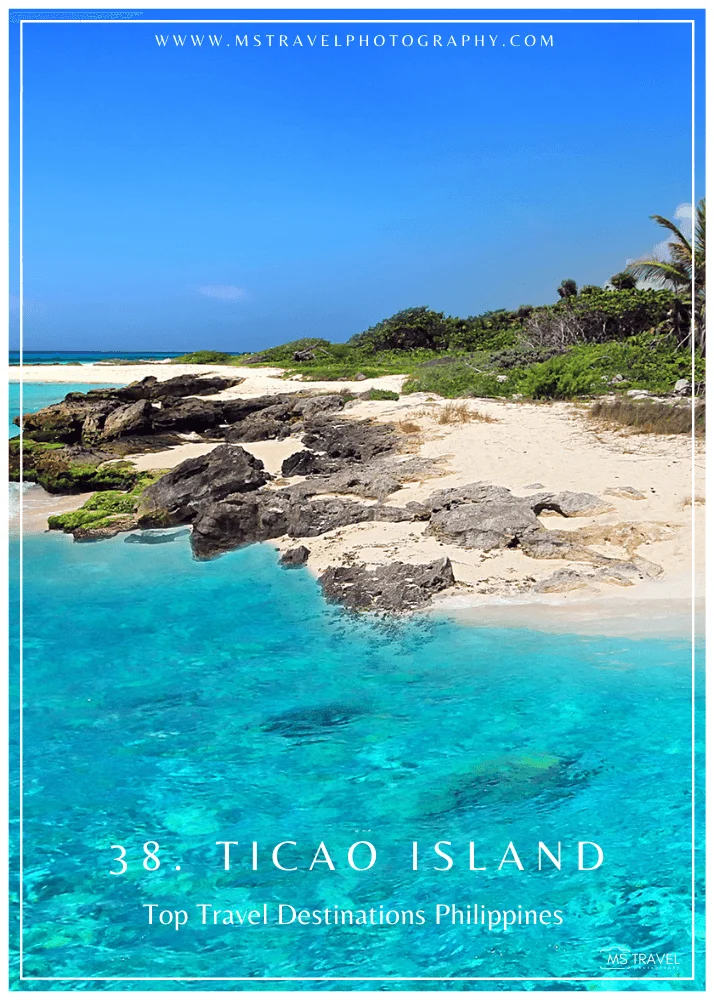
39. Malapascua Island
Malapascua, a tiny island north of Cebu, is a popular diving location because of reports of sightings of thresher sharks, particularly around Monad Shoal. The island has lively marine species, white sand beaches, and a relaxed vibe.
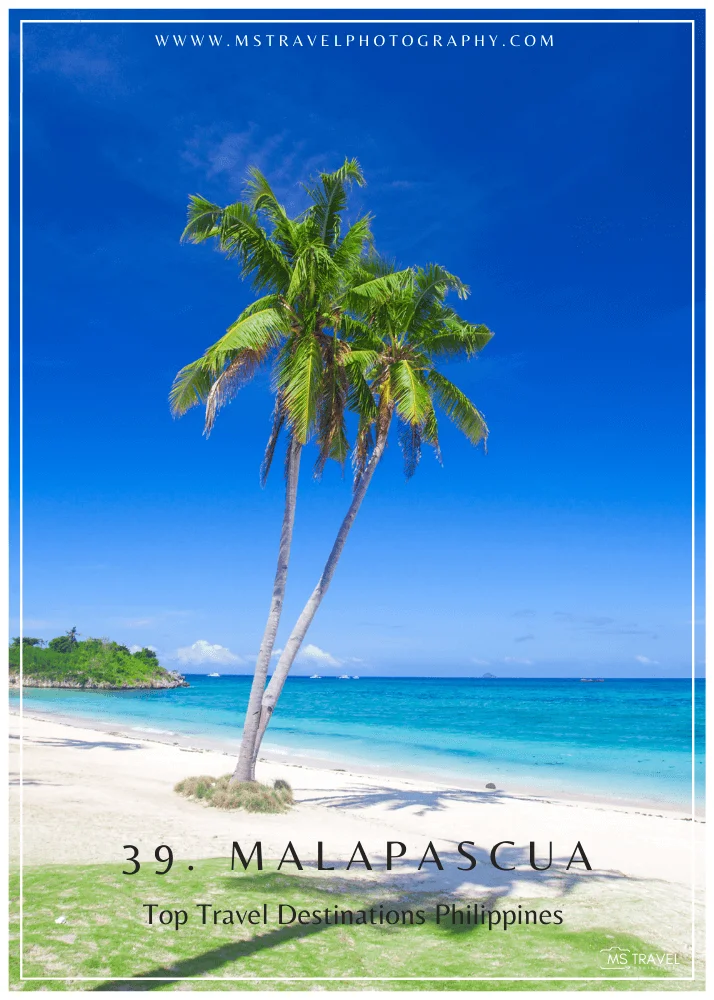
40. Guimaras
Guimaras is an island province in the Philippines that is well-known for its sweet mangoes. It has calm beaches like Alubihod and Nagarao, as well as tourist sites like the Smallest Plaza and the Trappist Monastery. Its famed crop is celebrated annually with the Mango Festival.
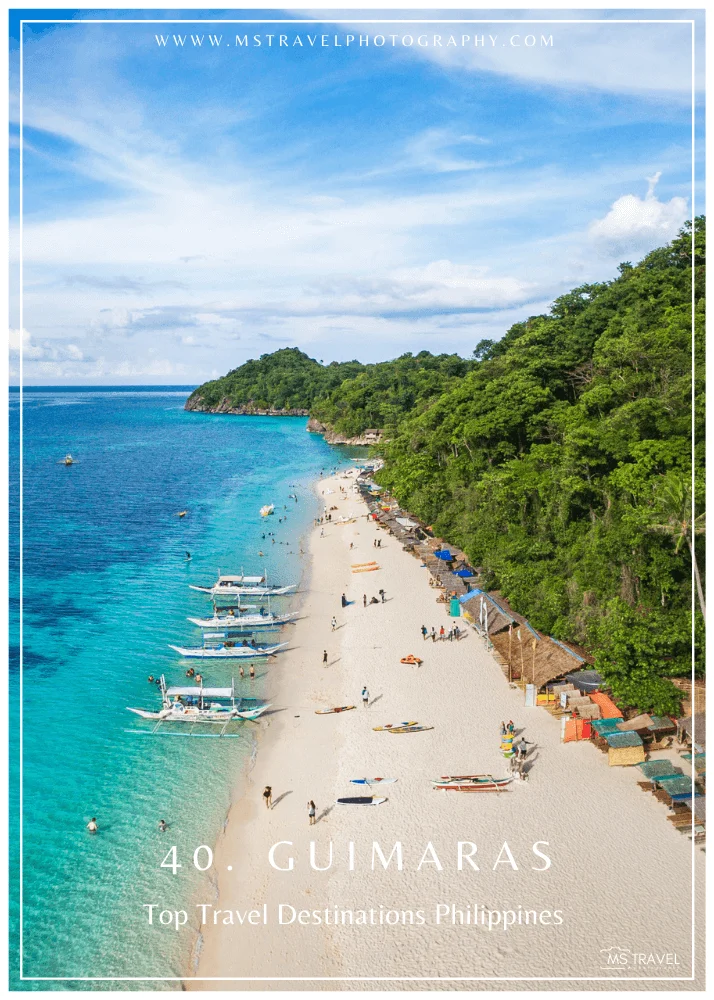
41. Capiz
Capiz, known as the “Seafood Capital of the Philippines,” is a seafood lover’s paradise. The province has an abundance of recently caught marine life, particularly in its capital city of Roxas City. The province is home to ancient churches like the Panay Church and natural wonders like the Suhot Cave and Spring, in addition to its gastronomic pleasures.
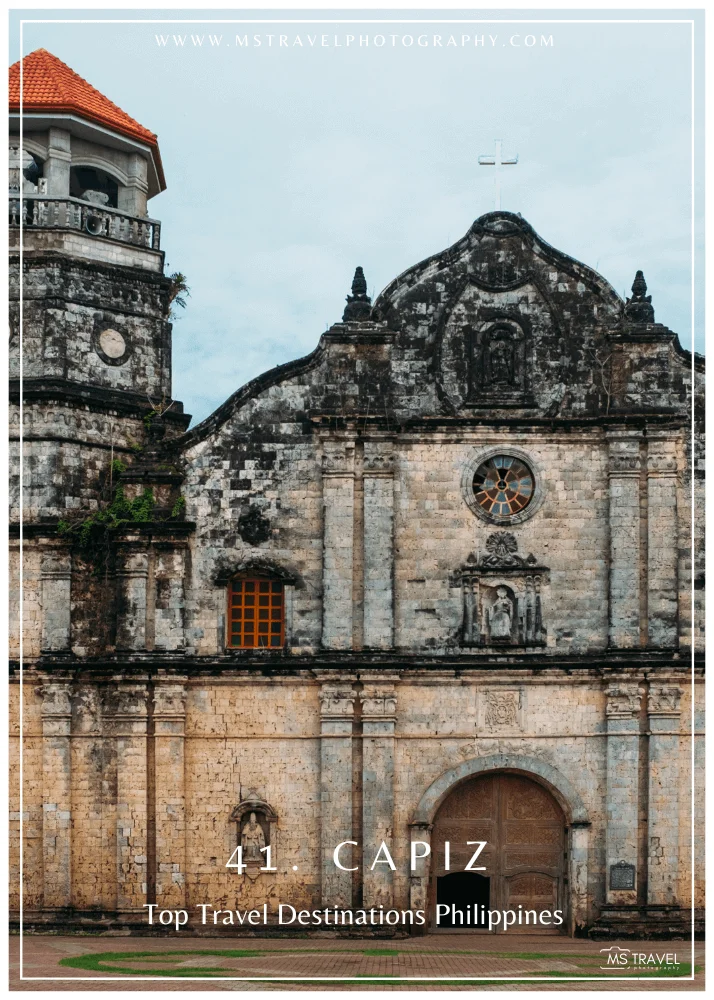
42. Lake Sebu
Lake Sebu, a natural lake in South Cotabato, is well-known for its seven waterfalls, tranquil settings, and the T’boli tribe, who are well-known for their weaving and the famous T’nalak fabric. Paddle boating and zip line experiences are available at the lake, and both give amazing views of the waterfalls.
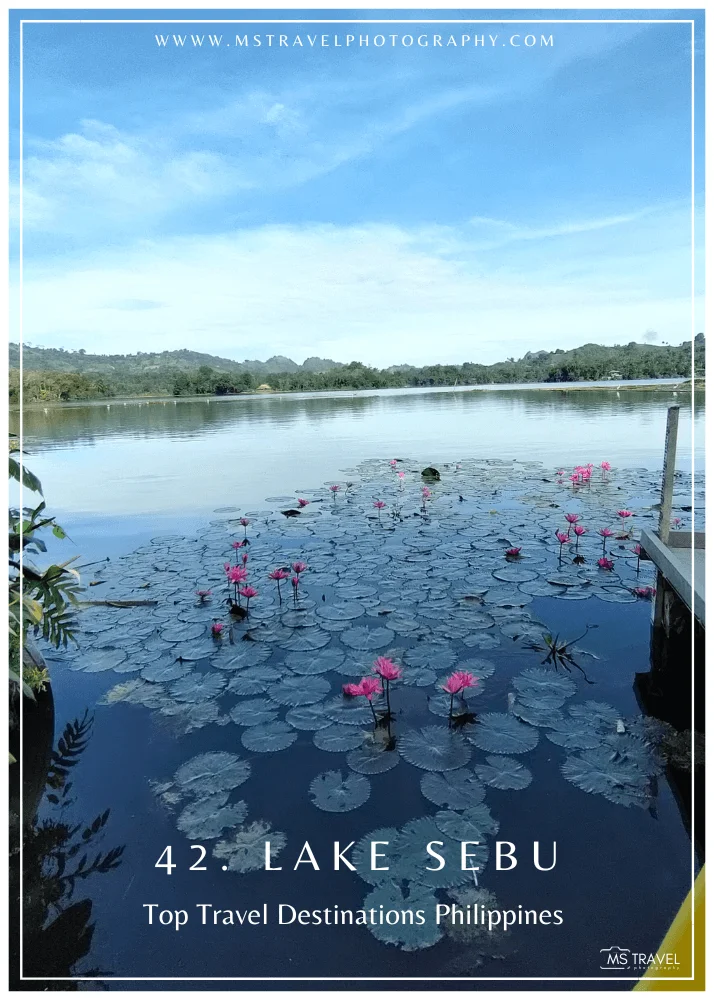
43. Cambugahay Falls
One of the most popular attractions on the enigmatic island of Siquijor is this multi-tiered waterfall. Both residents and visitors love it for a cool plunge because of its enticing blue waters and rope swing activity.
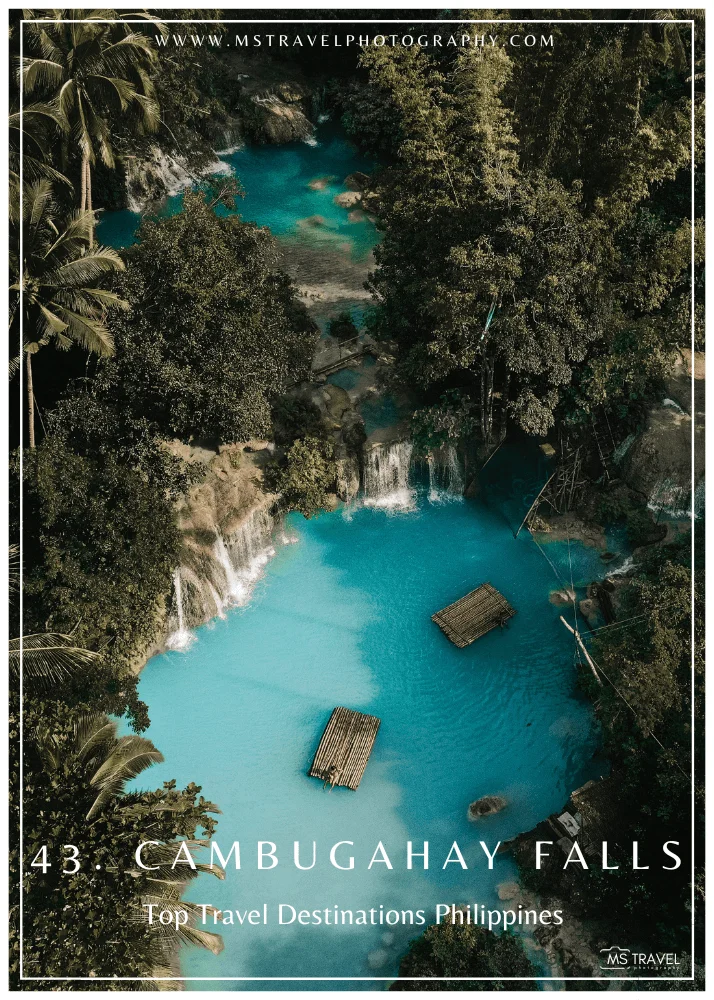
44. Puerto Galera
Puerto Galera, a beach resort a short distance from Manila, is well-known for its colorful marine life, which makes it a popular place for diving and snorkeling. The beaches that are most visited include White Beach and Sabang Beach.
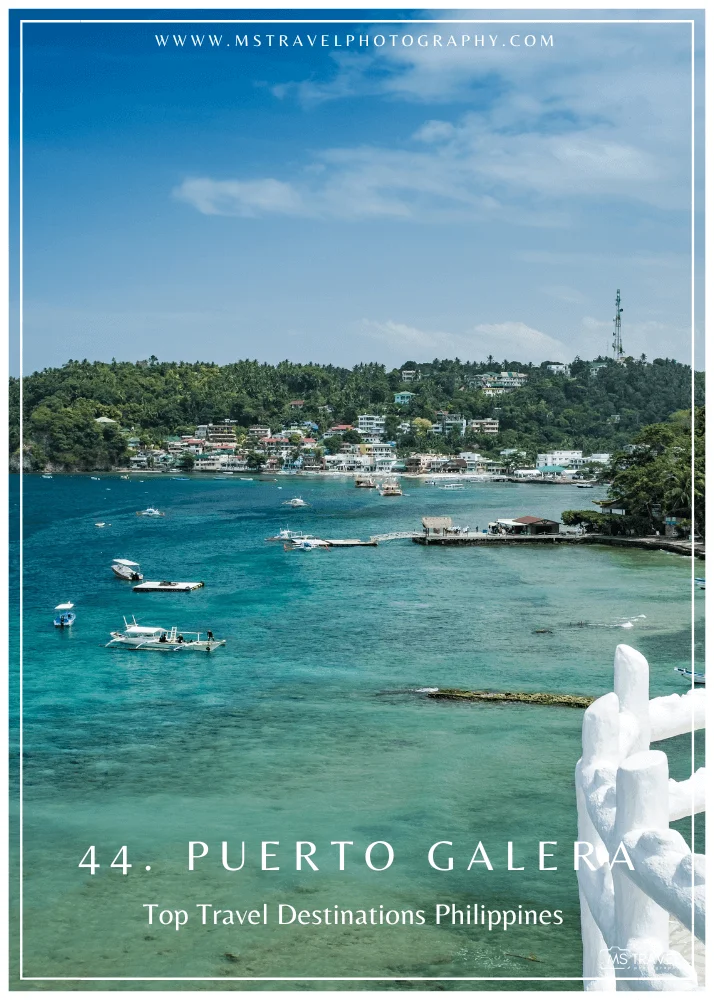
45. Abra
Abra, a province in the Cordillera, offers a variety of historical and natural landmarks. Among its features are the Tayum Church and the Kaparkan Terraces. Because fewer visitors visit it, it’s a refuge for adventure seekers looking for undiscovered adventures.
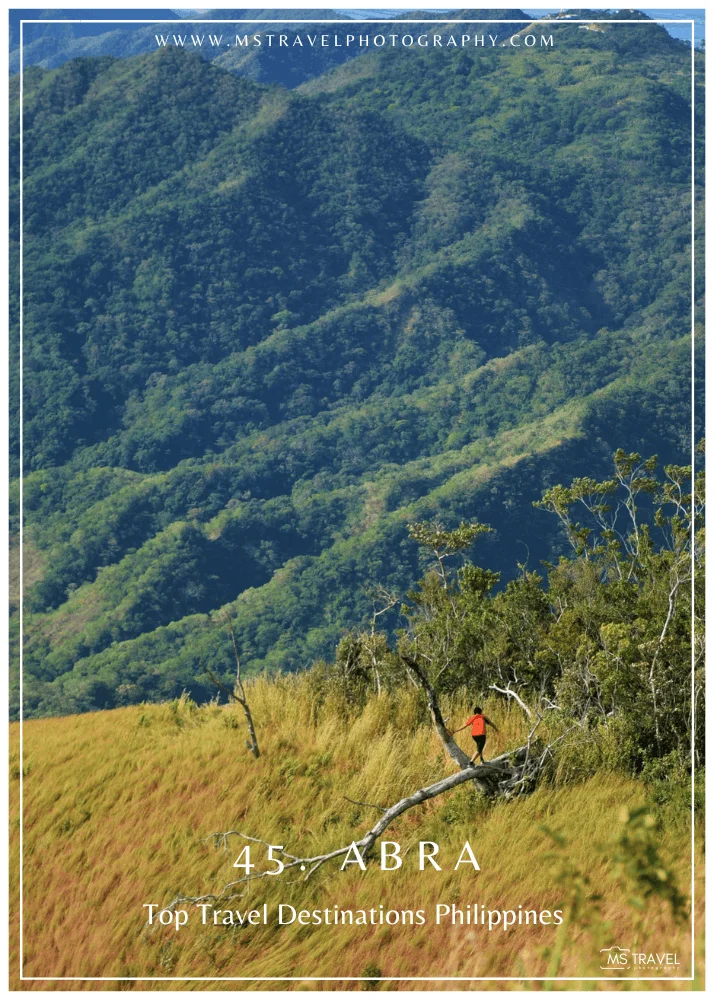
46. Balabac
At the southernmost point of Palawan, the unspoiled paradise of Balabac is made up of many islands with beautiful beaches, crystal-clear seas, and an abundance of marine life. Among its must-see locations are Candaraman Island and Onuk Island.
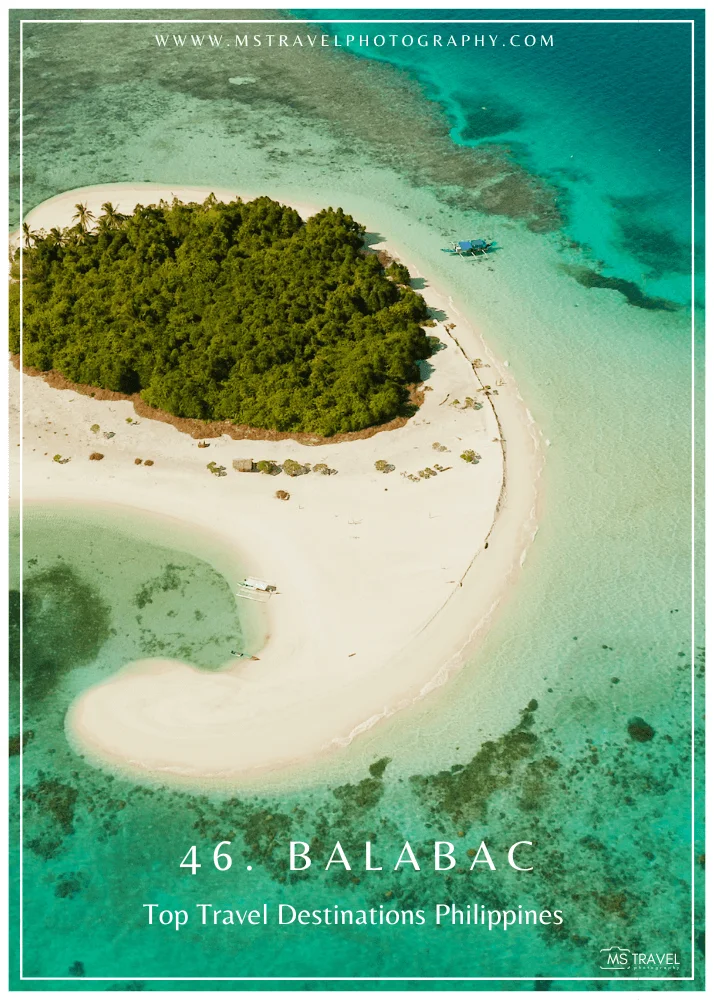
47. Danjugan Island
There are five lagoons, abundant coral reefs, and a wide variety of bird species in this marine reserve and wildlife sanctuary. Danjugan Island is a destination for ecotourism that places a strong emphasis on sustainability and conservation.
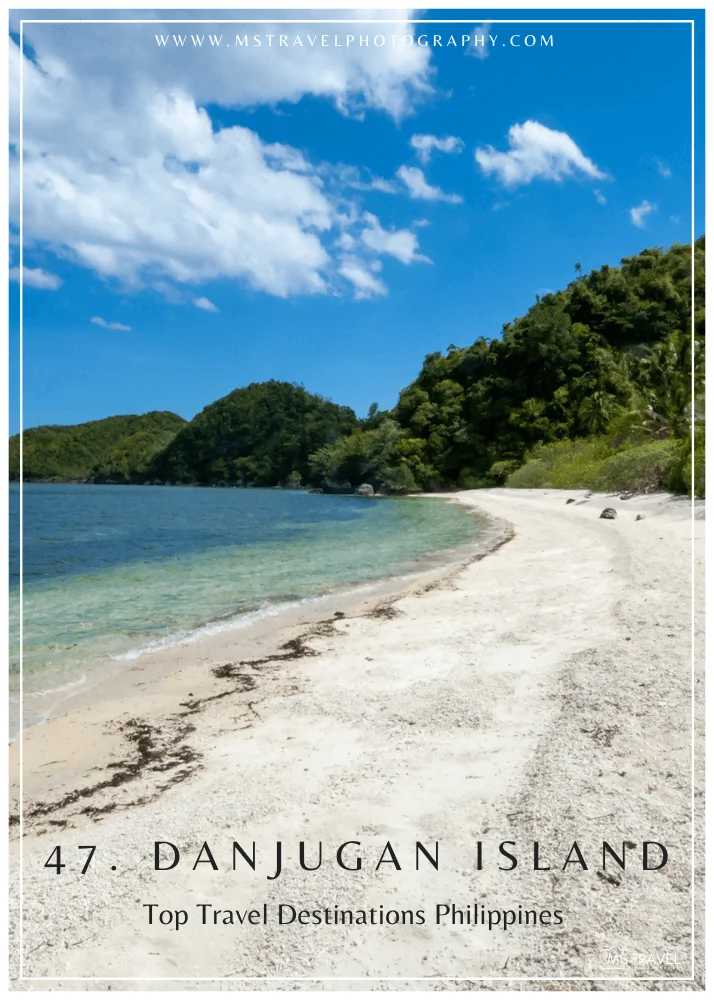
48. Marinduque
Marinduque, which is rich in culture, is notably during the Moriones Festival. Known as the “Heart of the Philippines” because of its geographic form and position. In addition to its cultural attractions, the island is known for its immaculate beaches and Bathala Cave.
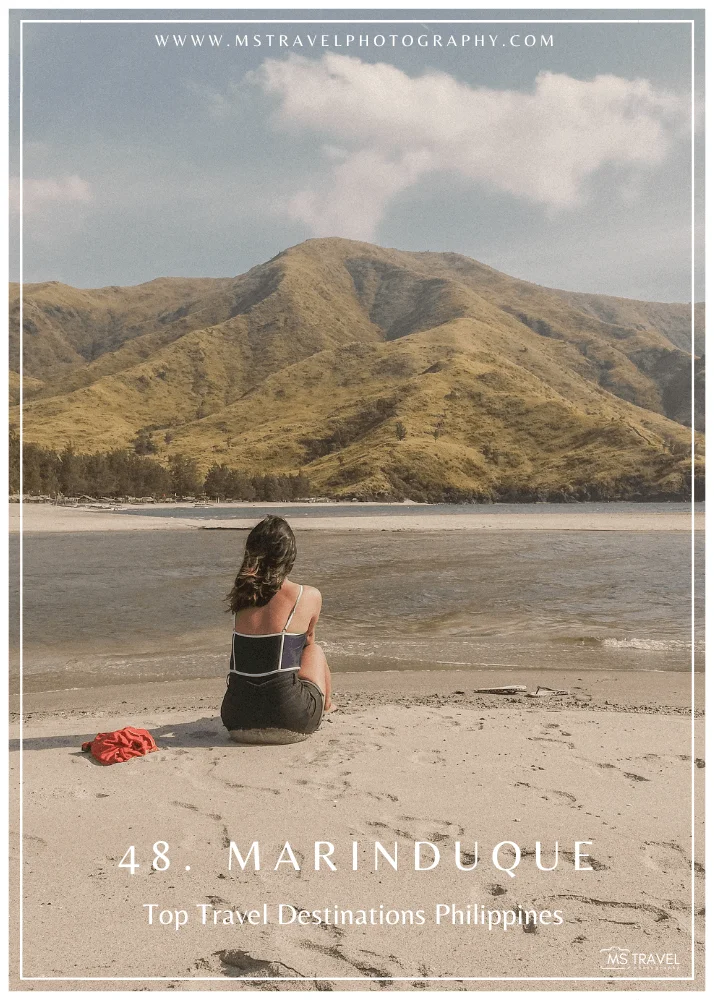
49. Tablas Island
Tablas, the biggest island in the Romblon group, with a combination of beaches, waterfalls, and mountains. Snorkelers love Looc Bay Marine Sanctuary, and the sunset at Binucot Beach is breathtaking.
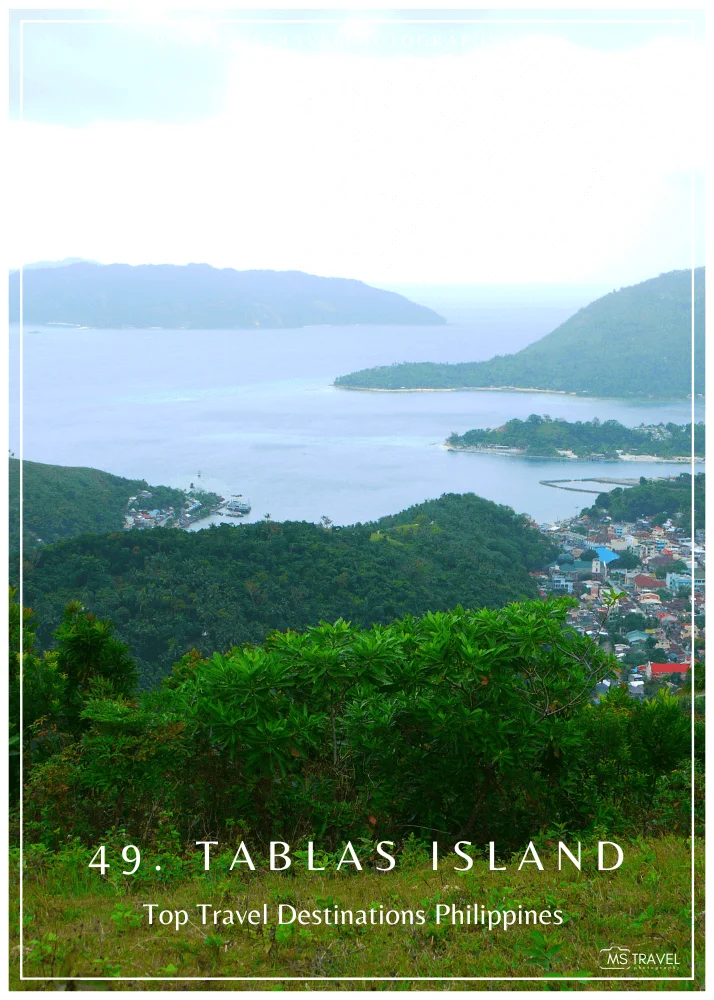
50. Apo Reef
The second-largest contiguous coral reef in the world, Apo Reef Natural Park is recognized as a UNESCO World Heritage site. It is a diver’s paradise with its abundant marine life, crystal-clear blue seas, and colorful coral gardens.
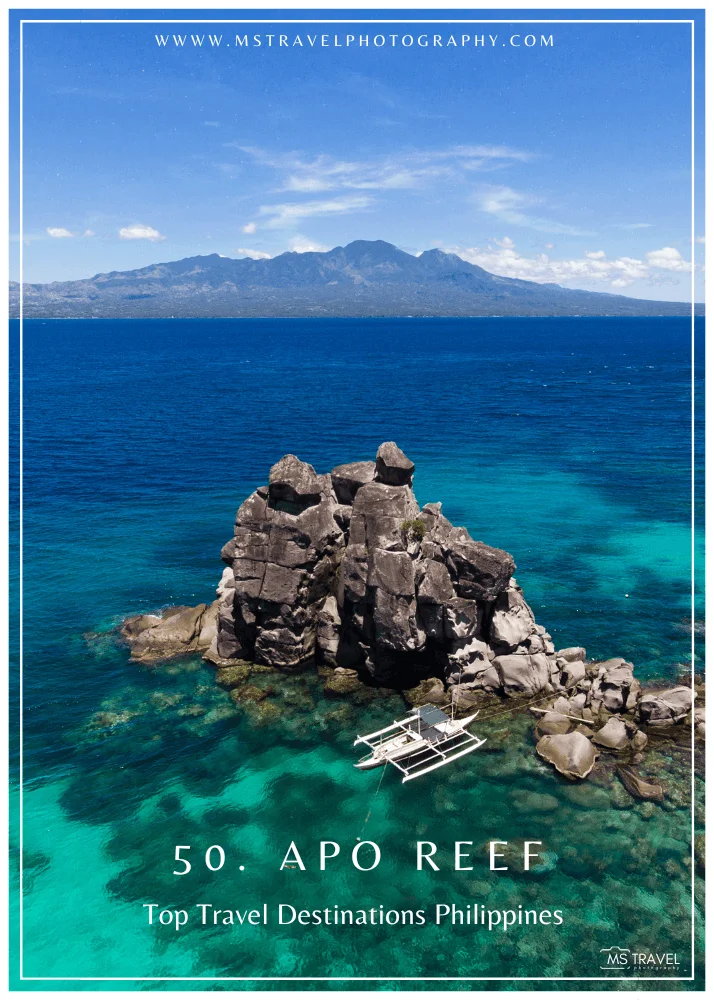
51. Quirino
Quirino, a landlocked province in the Cagayan Valley, is a paradise for those who enjoy the outdoors and outdoor activities. Among its many natural beauties that provide caving, trekking, and river experiences are the Aglipay Caves, Nagbukel Mountain, and the Governor’s Rapids.
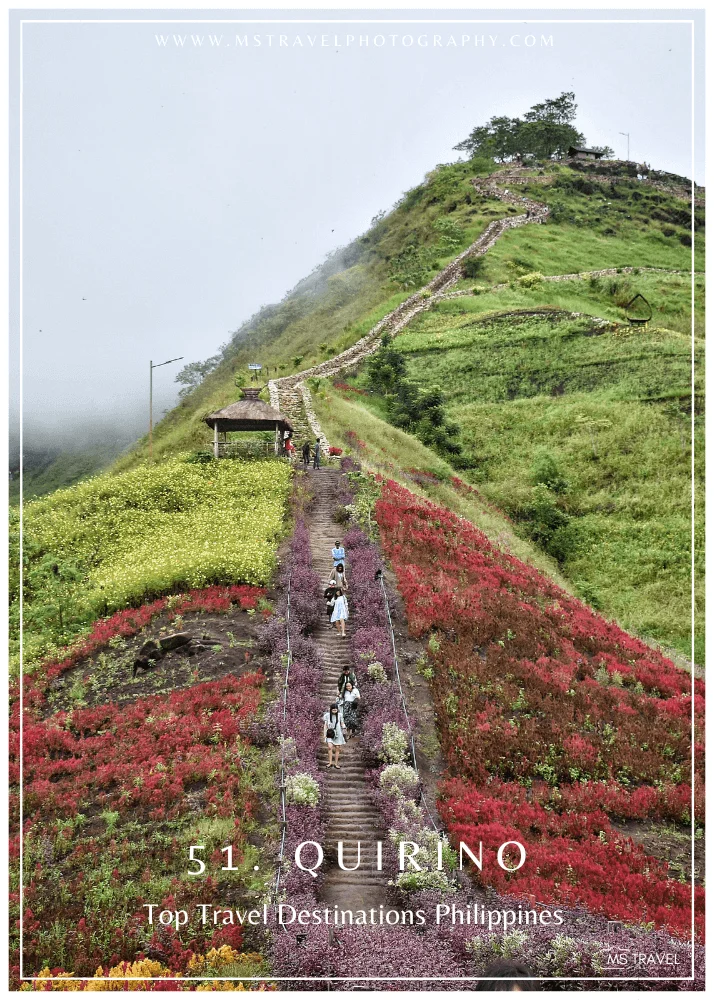
52. Siayan Island
This island, a lesser-known jewel, offers nearly unspoiled beaches, clear waters, and a peaceful atmosphere to those seeking peace and unadulterated beauty.
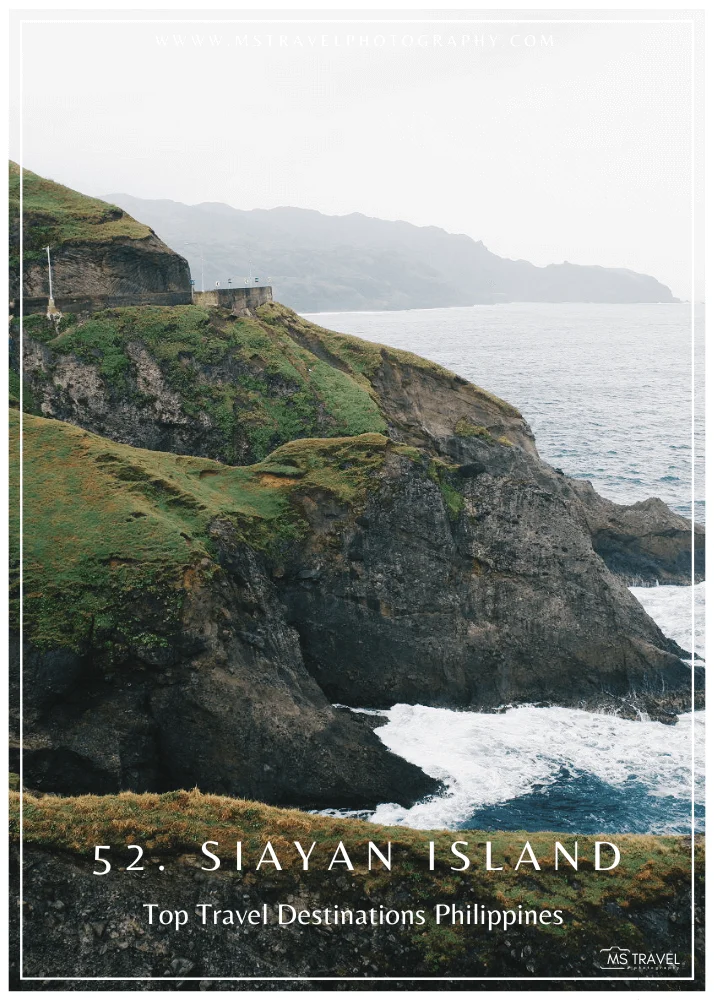
53. Camiguin
Dubbed the “Island Born of Fire,” Camiguin is well-known for its submerged cemetery, hot springs, waterfalls, and volcanic beginnings. In this charming island region, there are cool sites like the White Island sandbar and the cold springs.
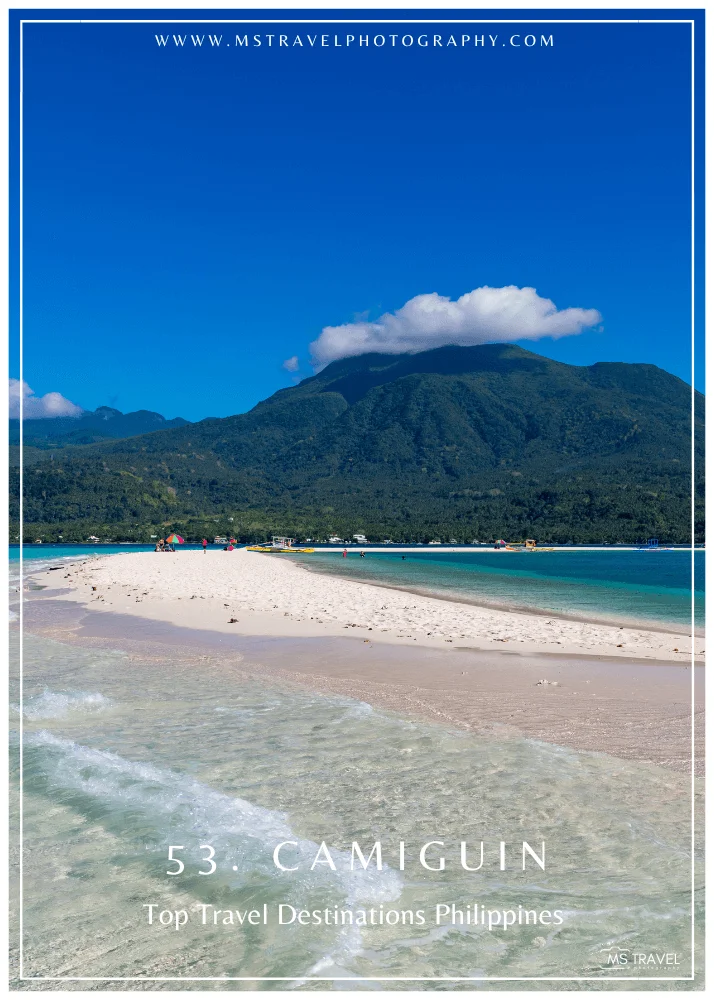
54. San Juan, La Union
Known as the “Surfing Capital of the North,” San Juan in La Union is a popular destination for both novice and expert surfers. Beyond surfing, it’s a well-liked hangout because of the relaxed atmosphere and restaurants beside the shore.
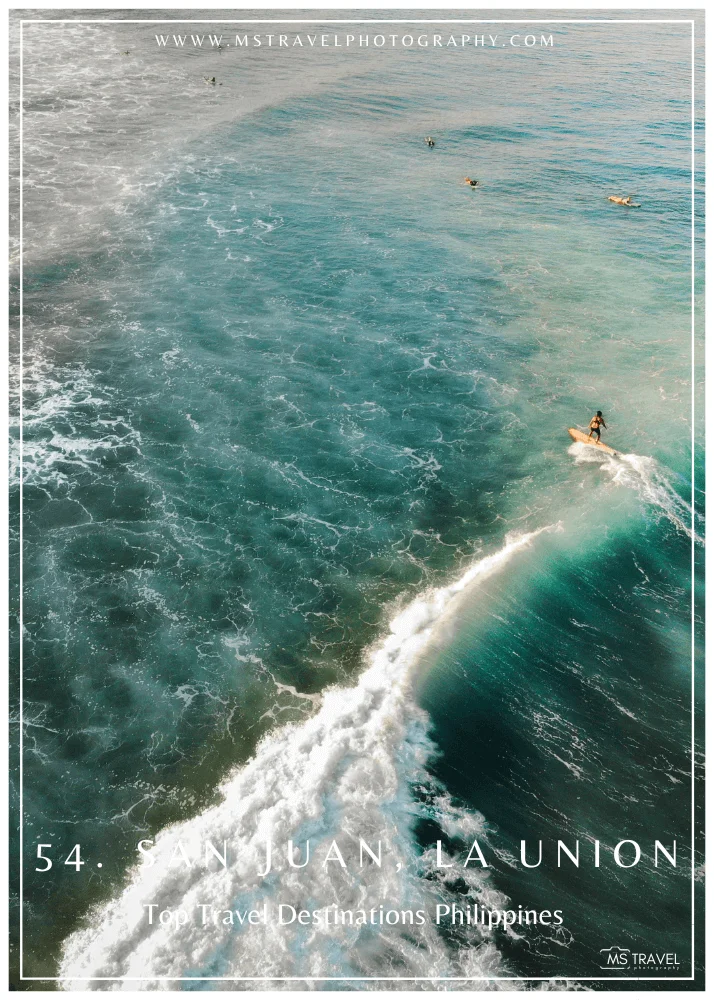
55. Tawi-Tawi
Tawi-Tawi, the southernmost province in the Philippines, is made up of several islands with breathtaking beaches, an abundance of colorful marine life, and a distinctive fusion of Sama, Badjao, and Tausug cultures. One of the highlights is the expansive vista from the holy peak, Bud Bongao.
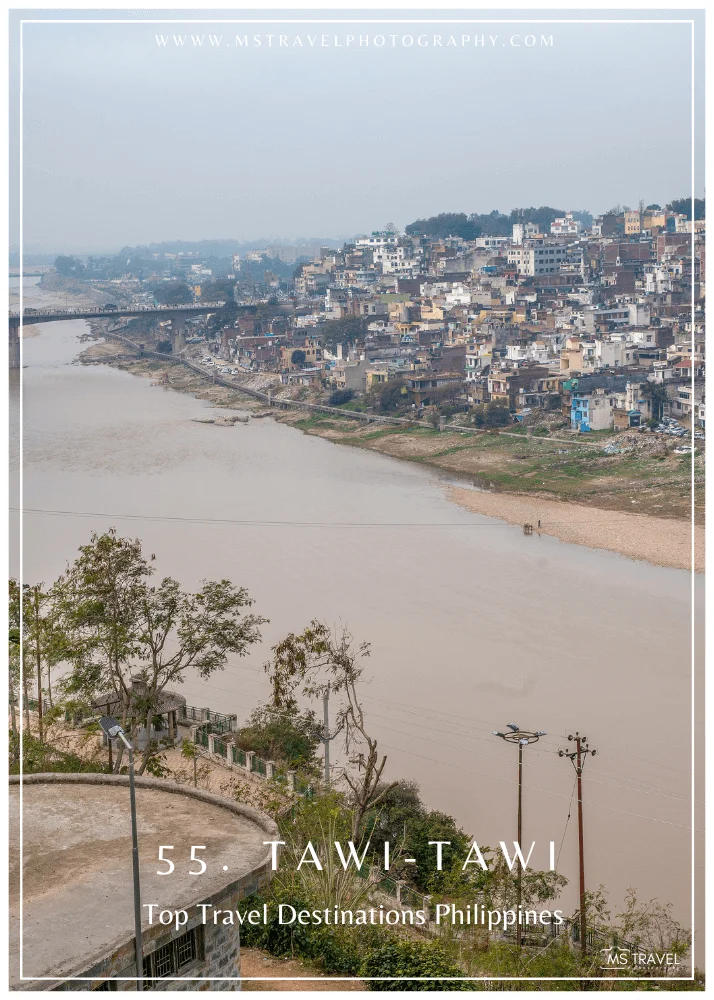
56. Buscalan Village
Renowned for its customary body art, Buscalan is the place where the renowned Whang-Od, regarded as the final traditional Kalinga tattoo artist, resides. The town provides a peek into the rich customs of the Cordillera area as well as a singular cultural immersion experience.
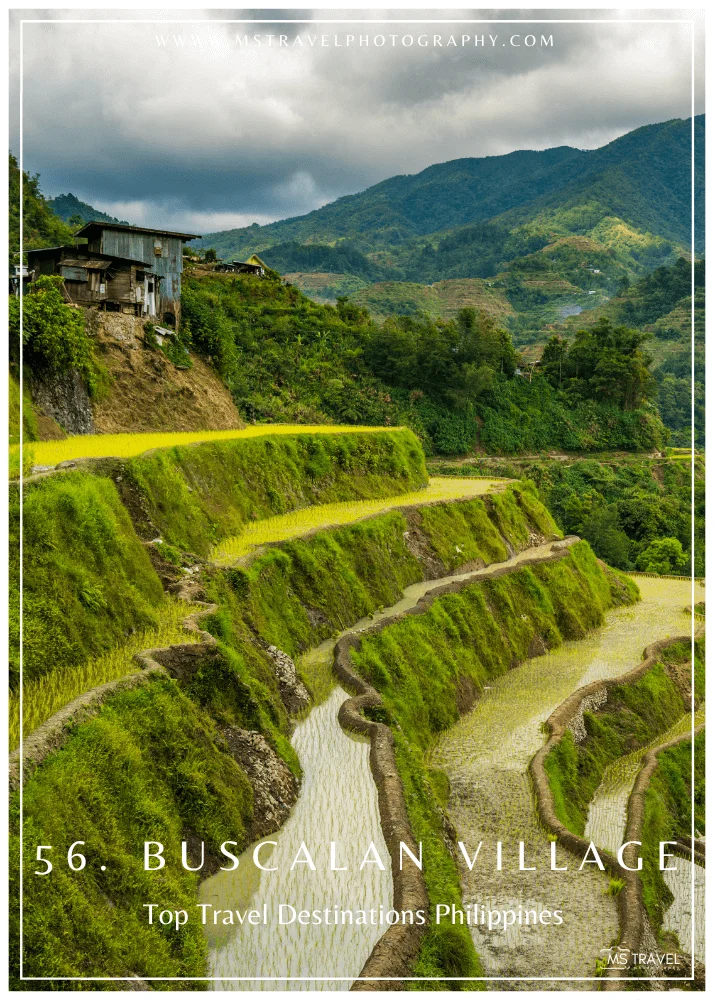
57. Sohoton Caves
The Sohoton Caves in Samar, which are not to be mistaken with the Sohoton Cove in Surigao, provide an exhilarating journey through limestone caverns, underground rivers, and stunning formations, exhibiting the province’s natural beauties.
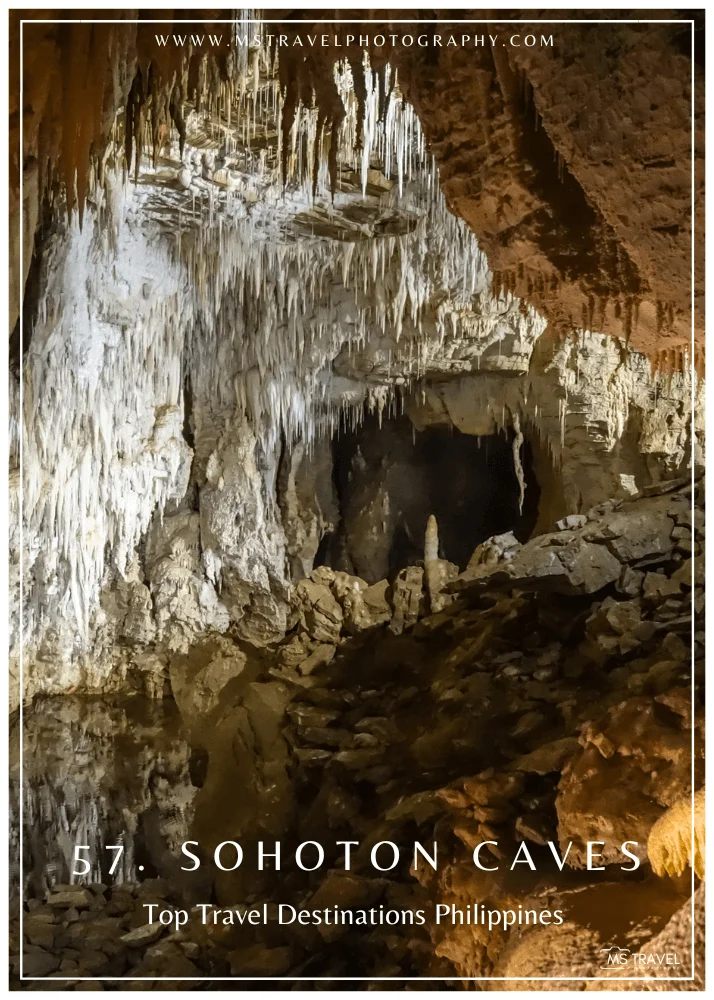
58. Palaui Island
Palaui Island, a natural beauty, has a variety of scenery, including grassy slopes, coral gardens, and volcanic cliffs. Situated atop a hill, the Cape Engaño Lighthouse offers an expansive vista of the Pacific Ocean and the Babuyan Channel.
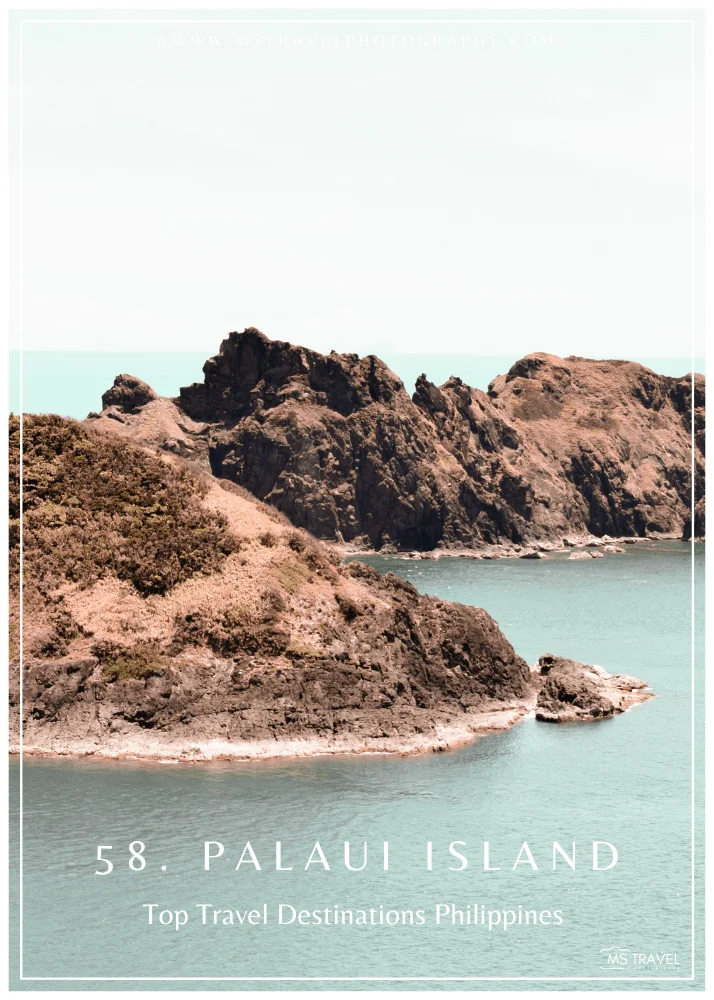
59. San Vicente, Palawan
San Vicente, which has the longest white beach in the Philippines, is a more sedate option than the busy parts of Palawan. Its long beach, tranquil surroundings, and the burgeoning Port Barton tourism town make it a desirable travel destination.
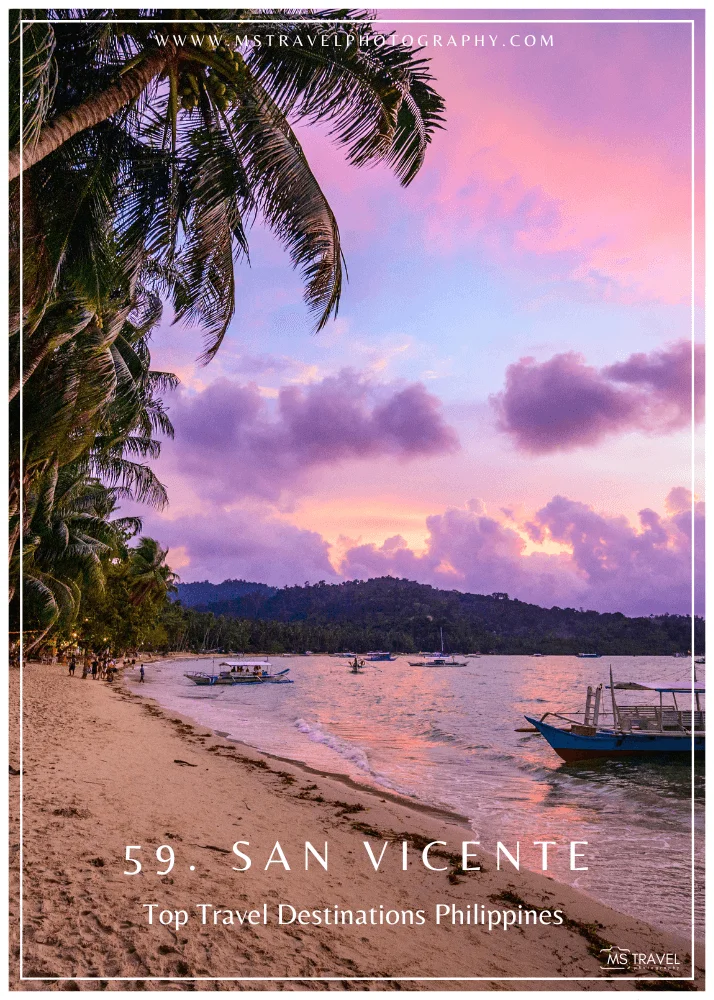
60. Manjuyod Sandbar, Negros Oriental
Known as the “Maldives of the Philippines,” this white sandbar appears at low tide and provides a distinct tropical experience amidst pristine seas.
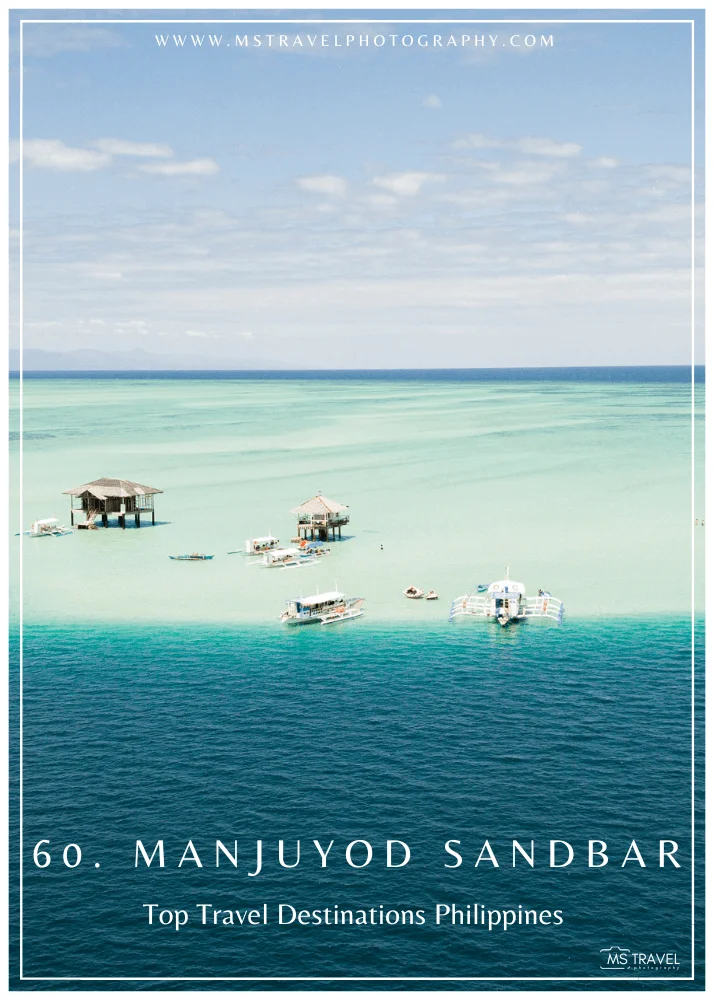
61. Jomalig Island, Quezon
Jomalig is a remote paradise with golden dunes, glistening lakes, and agoho trees that resemble pines. If you want to get away from the usual tourist routes and experience a more laid-back island lifestyle, this is the place to go.
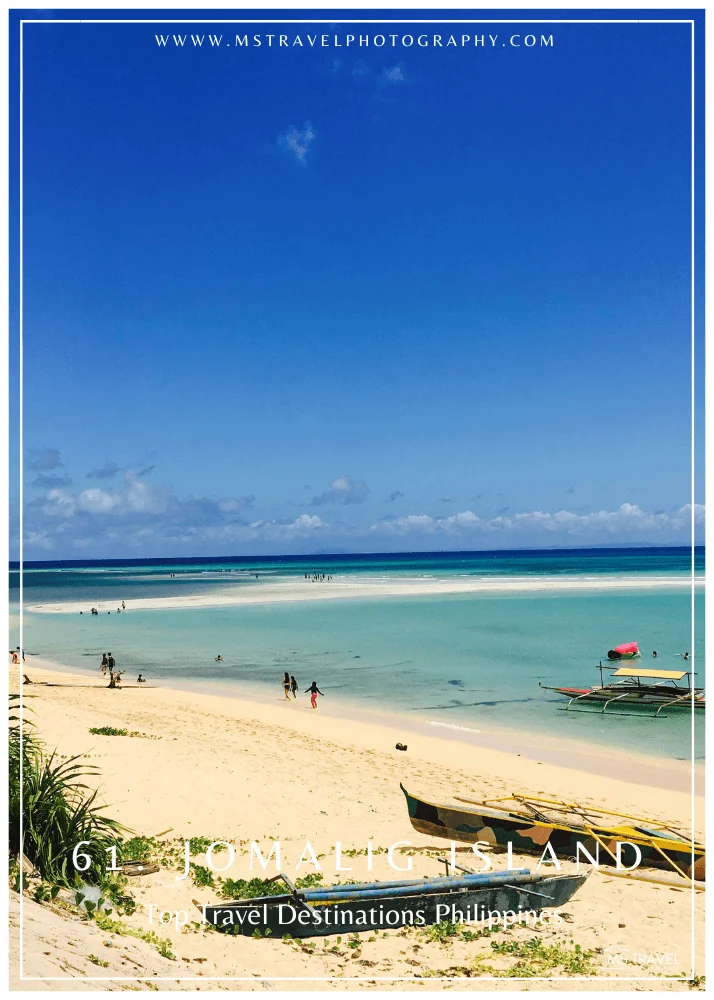
62. Biri Island
Biri Island is renowned for its amazing granite formations that have been fashioned over millennia by the sea and wind, exhibiting a raw, rough beauty. The island has gained popularity among landscape photographers due to its distinctive seascape.
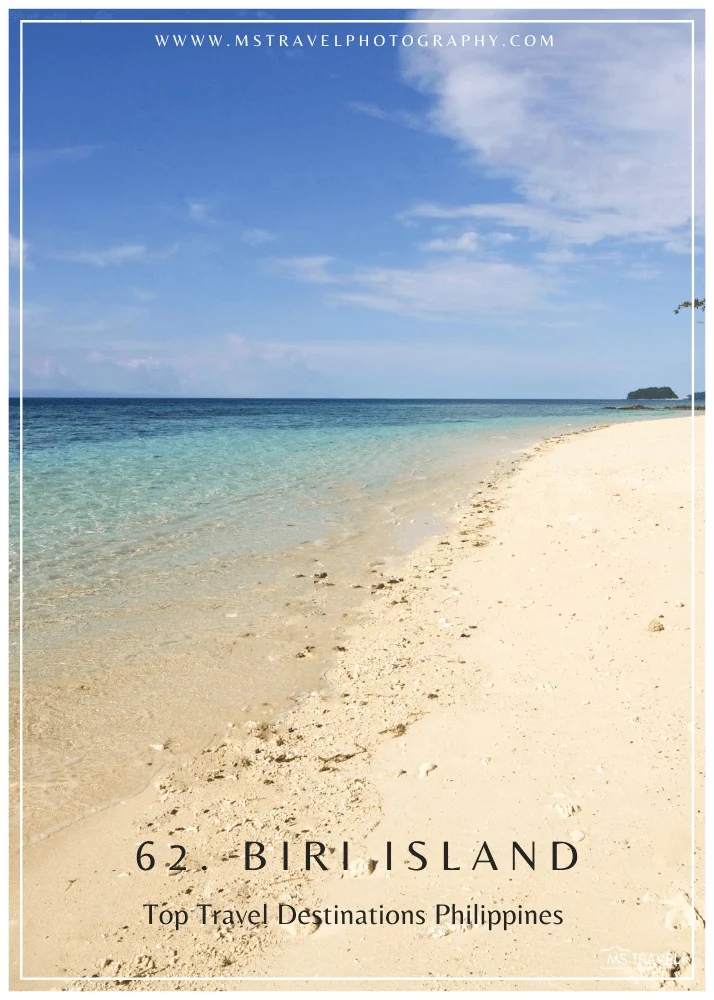
63. Mount Samat
Mount Samat in Bataan is home to the historically significant Dambana ng Kagitingan (Shrine of Valor), a museum and memorial cross honoring the valiant American and Filipino soldiers of World War II. It provides a broad perspective of the Manila Bay region and Bataan.
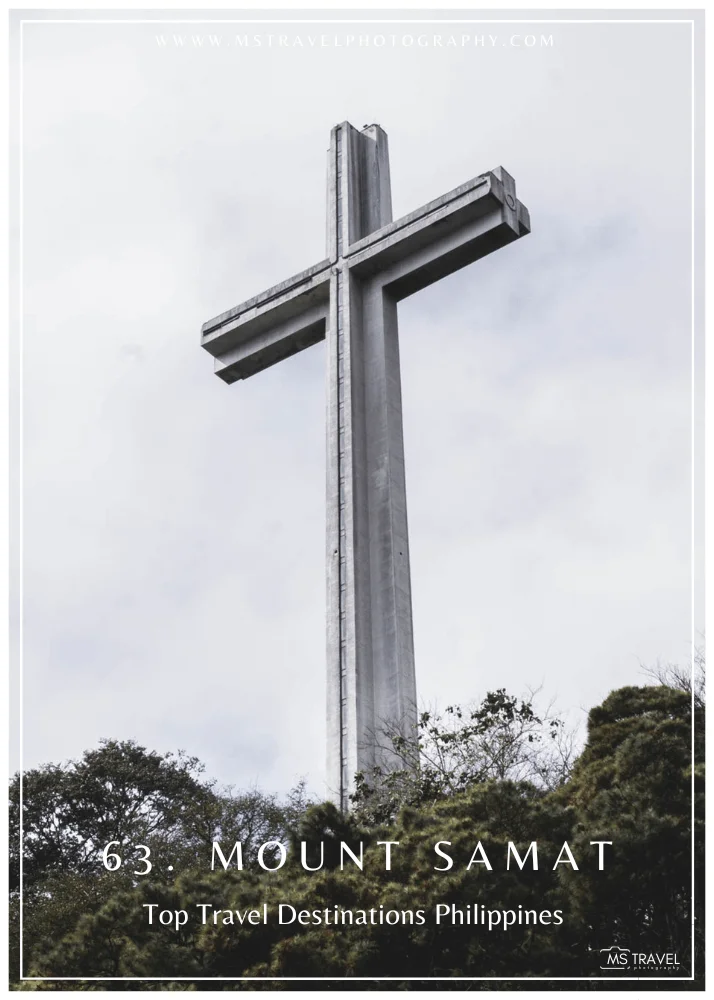
64. Dingalan, Aurora
Dingalan, also referred to as the “Batanes of the East,” offers breathtaking views of the sea and mountains, especially from the Dingalan Lighthouse. For those looking for a more relaxed, off-the-beaten-path experience, it’s a sanctuary.
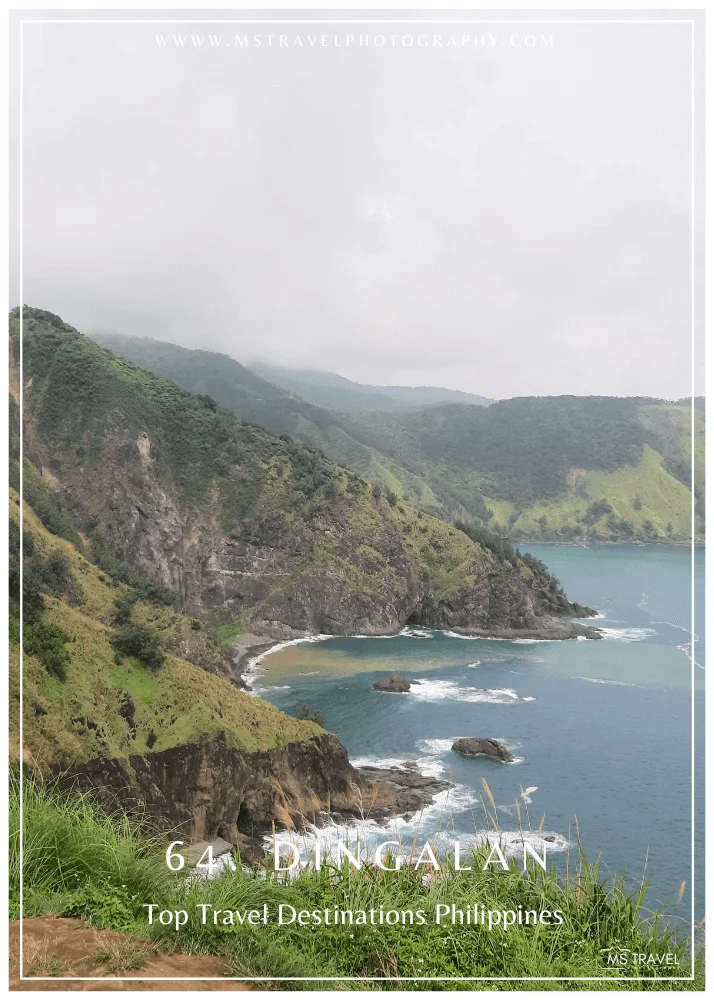
65. Limasawa Island, Southern Leyte
Limasawa Island holds historical significance being the location of the first recorded Christian service in the Philippines. Clear waterways, a thriving marine life, and expansive vistas from its hilltops are just a few of its many natural beauties.
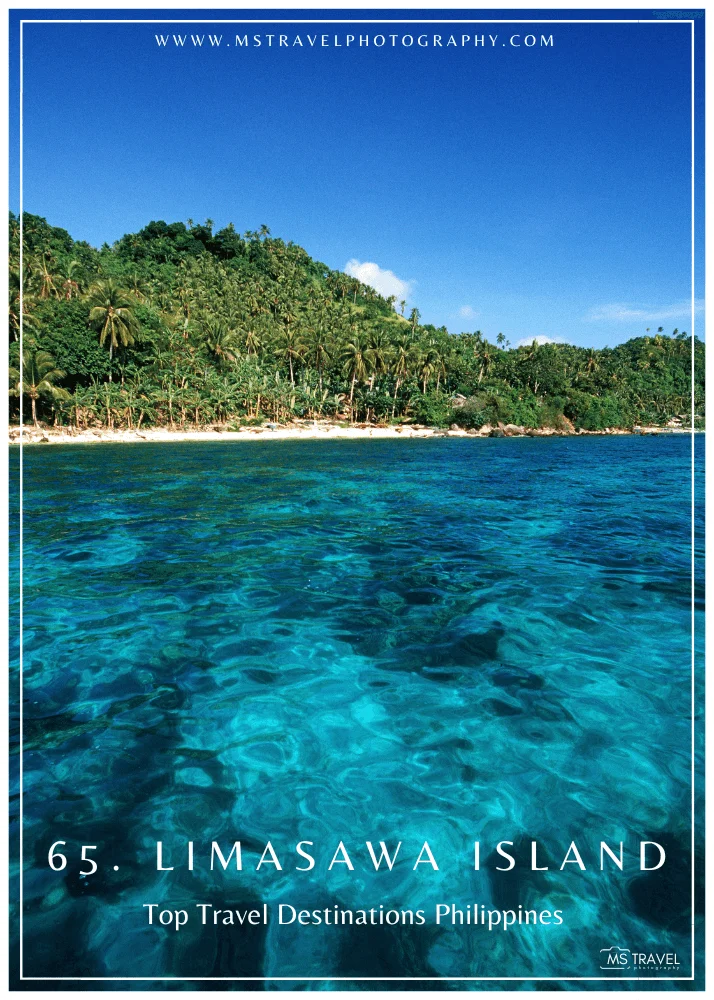
66. Maria Cristina Falls
Maria Cristina Falls is a double waterfall system that is both magnificent and essential to the energy of the area, providing most of Mindanao’s power.
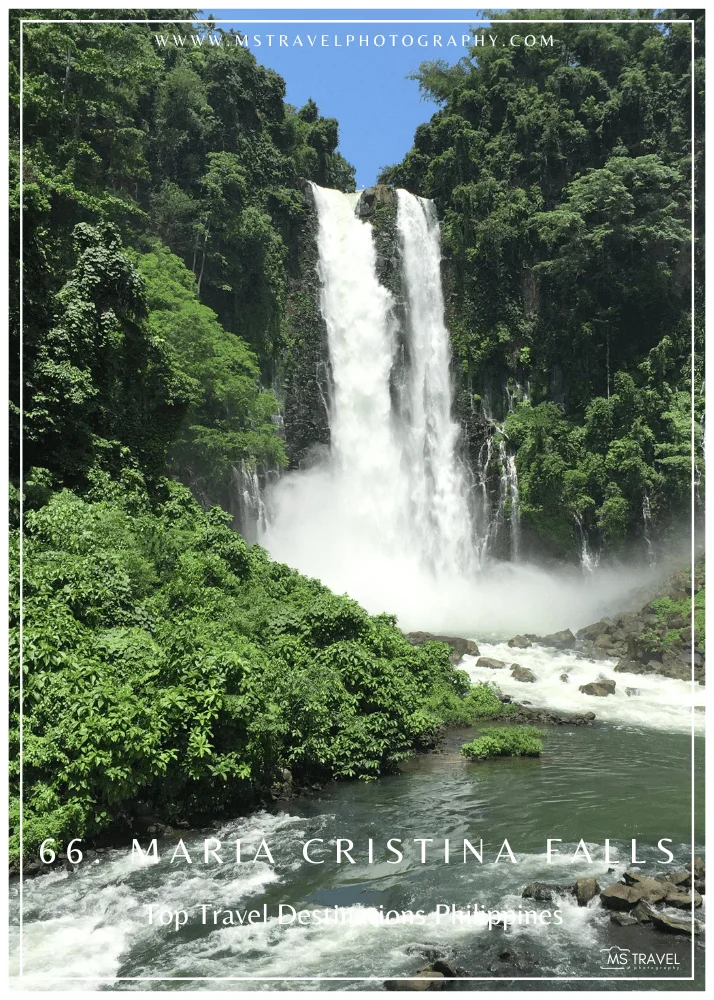
67. Panglao Island
Panglao Island is a beach paradise, but Bohol is known for its tarsiers and Chocolate Hills. Popular for diving and leisure, it has turquoise seas and pure white dunes.
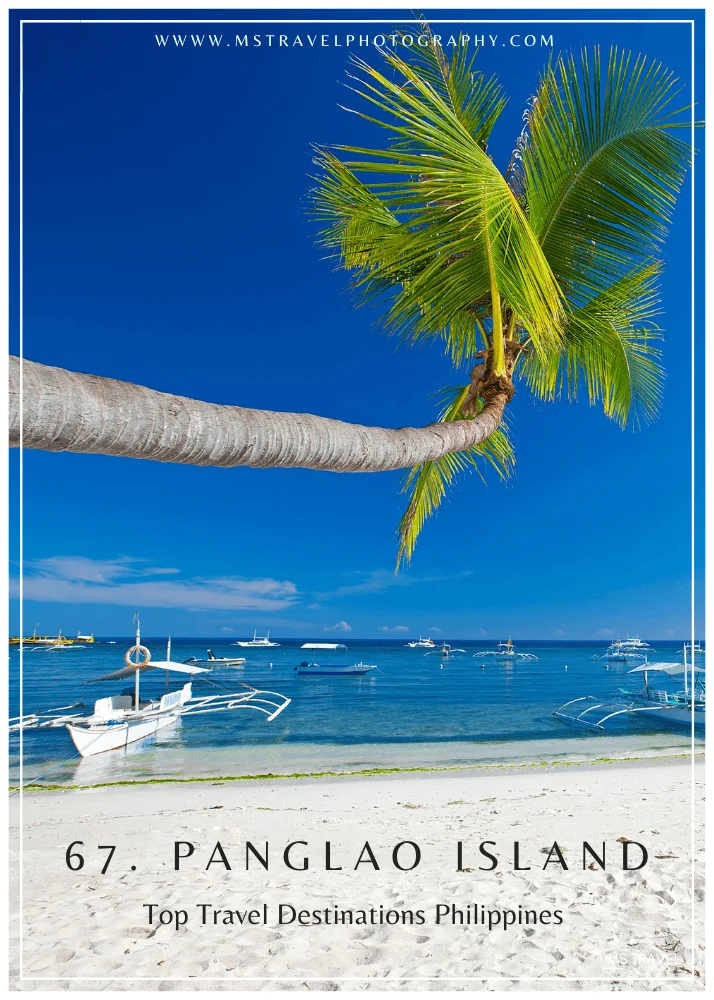
68. Calaguas Islands, Camarines Norte
Calaguas, with its fine white sand, is frequently likened to the well-known beaches of Boracay, although it has a more unspoiled and peaceful atmosphere. Its crystal-clear seas are ideal for beach camping, swimming, and snorkeling.
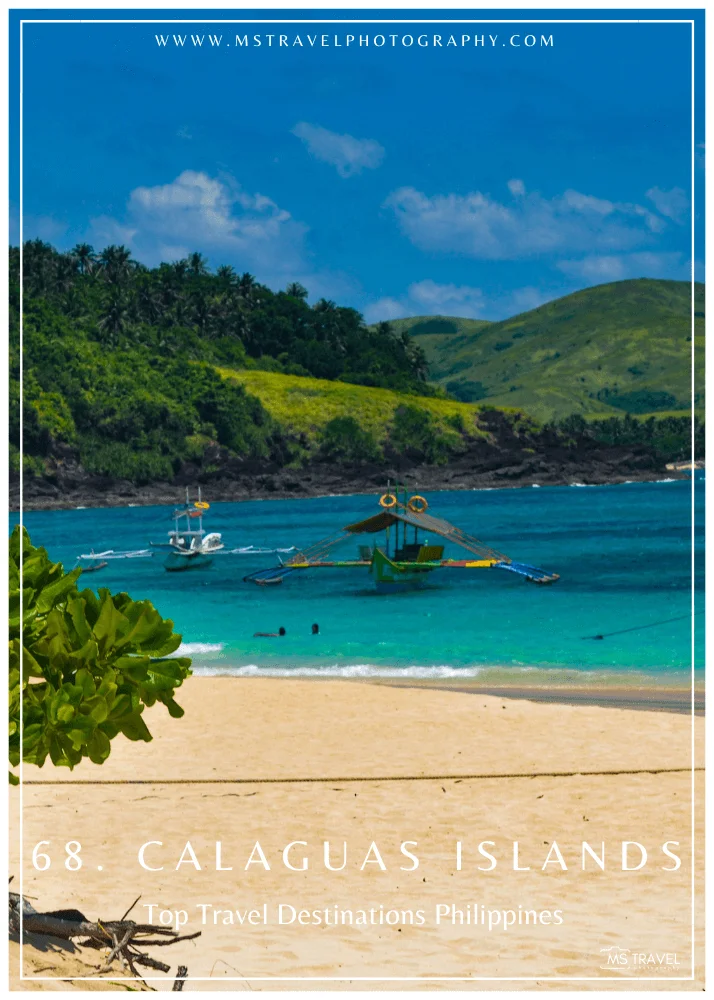
69. Mt Mayon’s Lava Trail, Albay
Although the magnificent Mayon Volcano is renowned for having a flawless cone shape, a thrilling hike may be found along the lava path left behind by previous eruptions. In sharp contrast to the rest of the province’s flora are the dark, rocky trails.
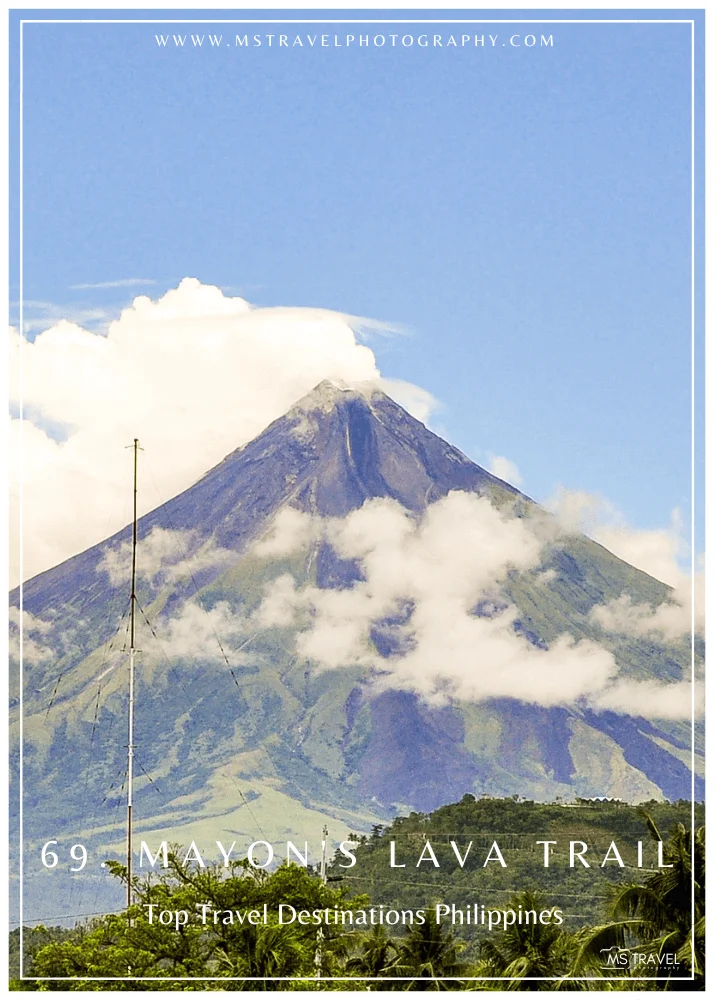
70. Cape San Agustin
Cape San Agustin, the easternmost extremity of the Philippines, has Parola Beach, rock formations, and a lighthouse. It offers a glimpse of the Pacific Ocean and an experience away from the grid.
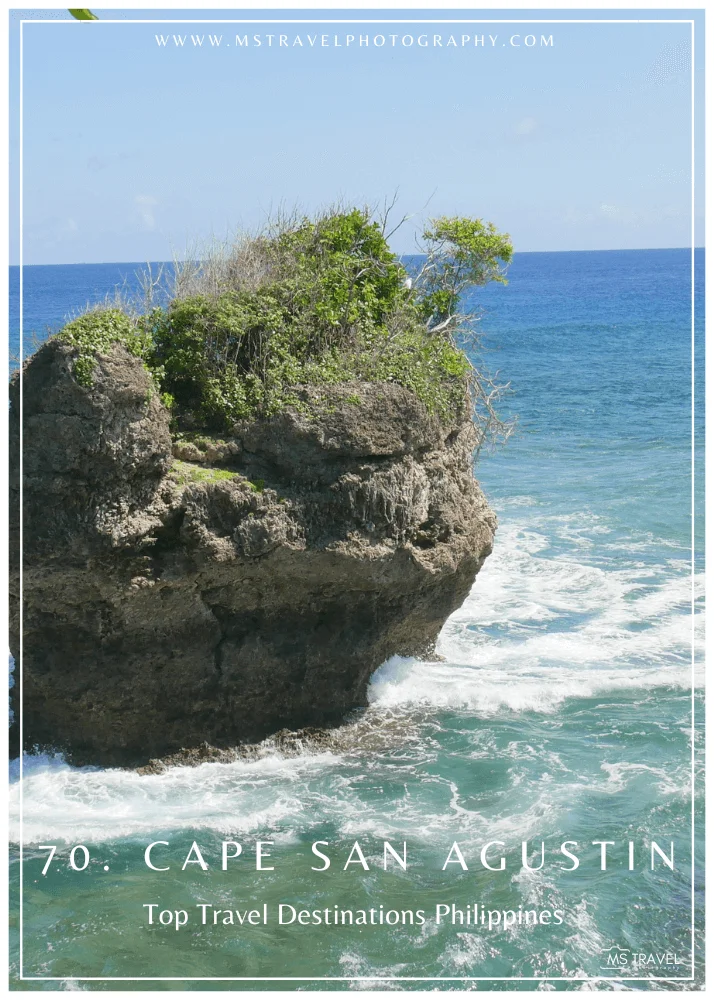
71. Pagudpud
Pagudpud, also referred to as the “Boracay of the North,” is well-known for Saud Beach and other white sand beaches. The region’s allure is enhanced by sights outside its borders, such as the Kapurpurawan Rock Formation and the Bangui Windmills.
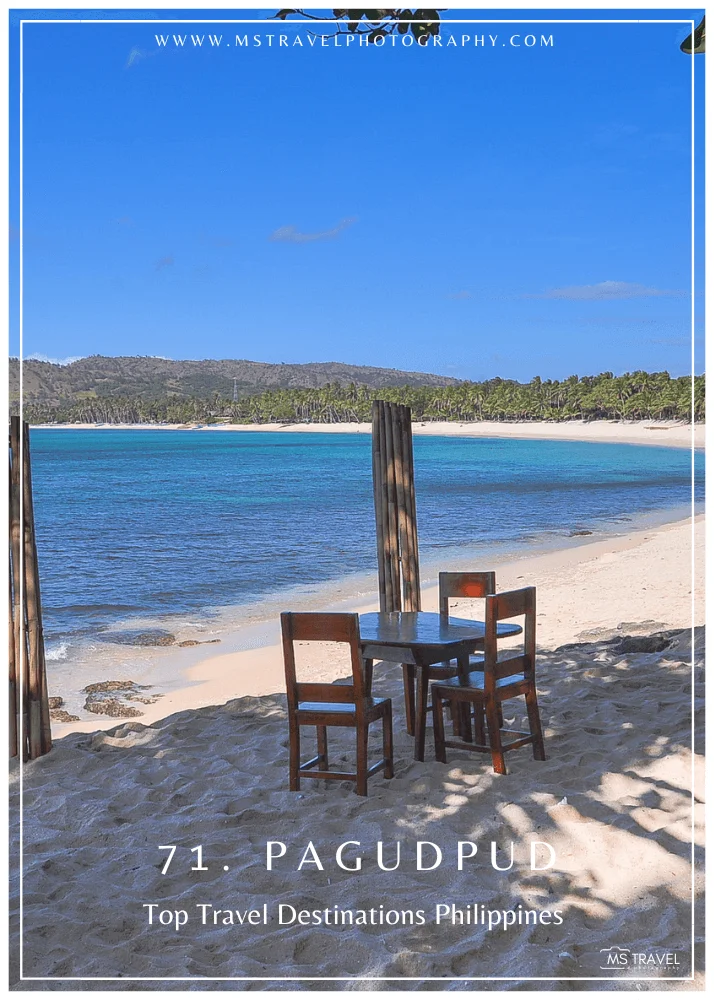
72. Dinagat Islands
The Dinagat Islands, however sometimes eclipsed by nearby Siargao, provide a special combination of ethereal scenery, crystalline seas, and mythical stories. The collection of islands offers a remote haven for those looking for hidden gems.
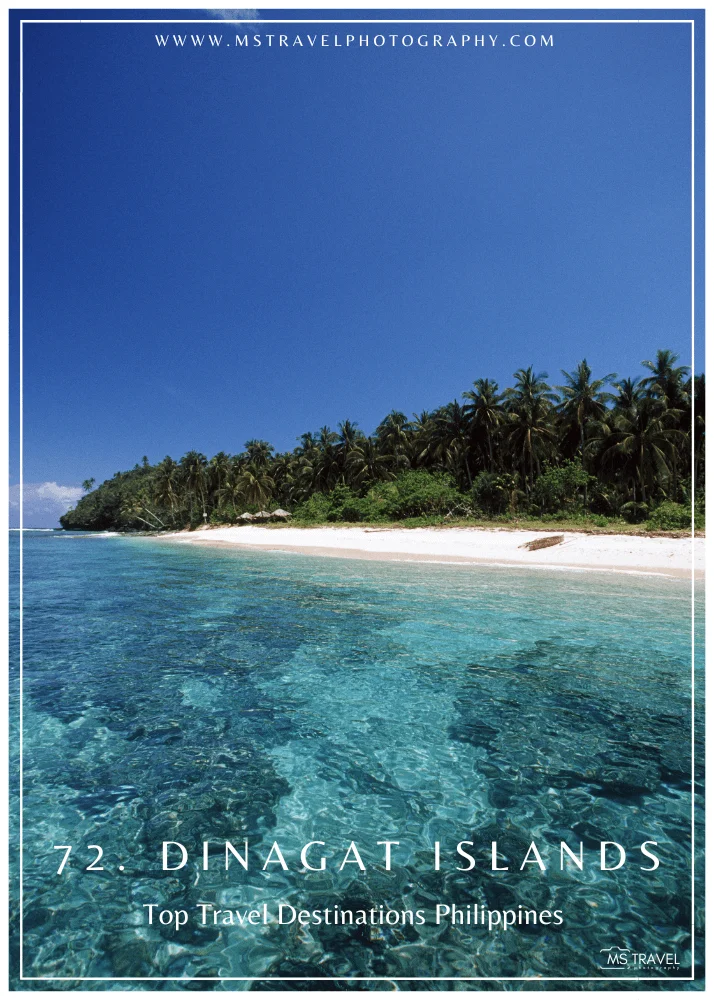
73. Sarangani
Sarangani, which is located at the southernmost point of Mindanao, is home to beautiful beaches like Gumasa Beach and provides a variety of cultural experiences with the local Blaan and T’boli tribes. The Sarbay Festival, an annual beach celebration honoring the abundant marine life in the area, is another well-known event.
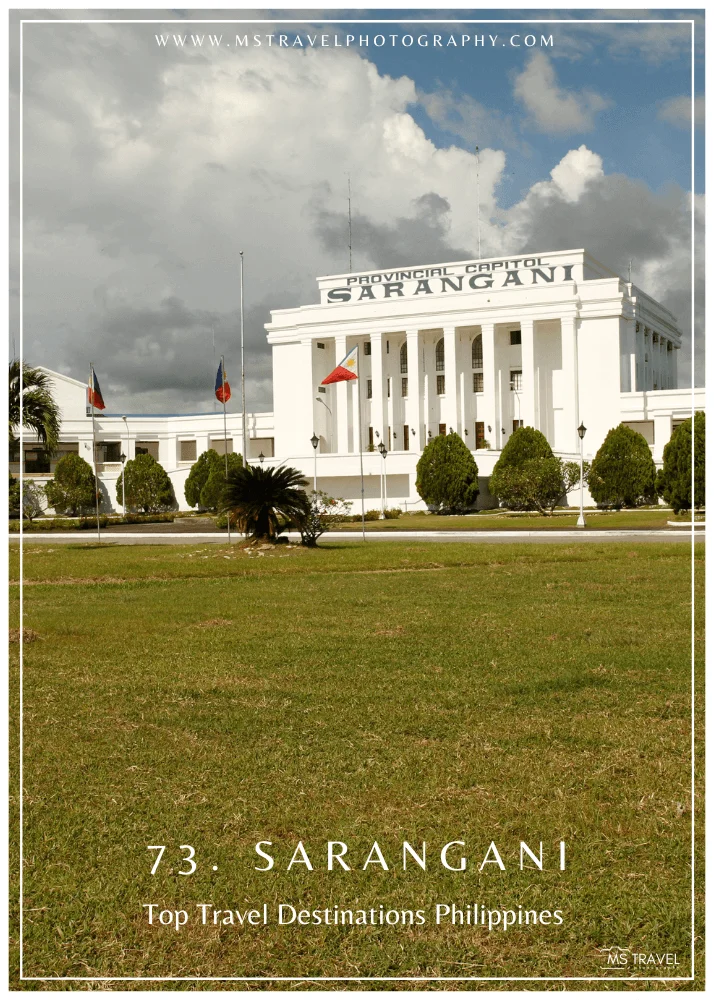
74. Masungi Georeserve
This conservation area, which is situated in Baras, provides a special fusion of adventure and environmental preservation. The Georeserve is a unique location for ecotourism because of its limestone landscapes, abundant vegetation, and canopy hikes.
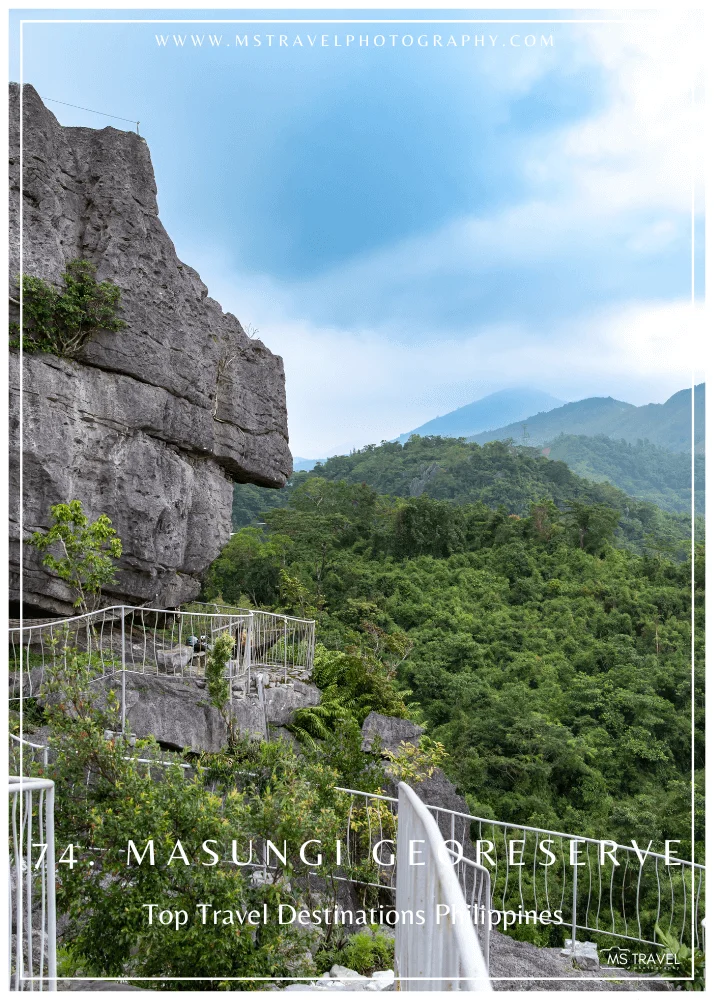
75. Anawangin Cove and Nagsasa Cove
Due to a volcanic explosion from Mount Pinatubo, these coves were originally desolate but have since been turned into breathtaking sceneries with ash-colored sands, clean waterways, and a lovely backdrop of pine trees.
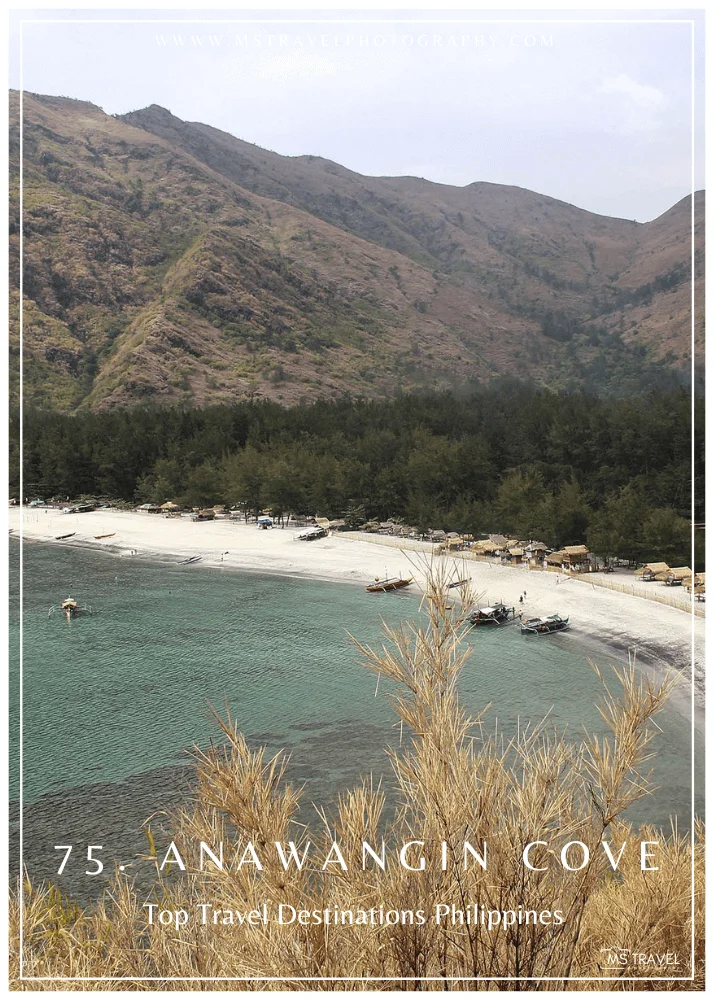
76. Sambawan Island, Biliran
This island has a distinctive topography with turquoise oceans in the background and undulating hills and rock formations. With a diversity of marine animals living in its waters, it’s also a great place to dive.
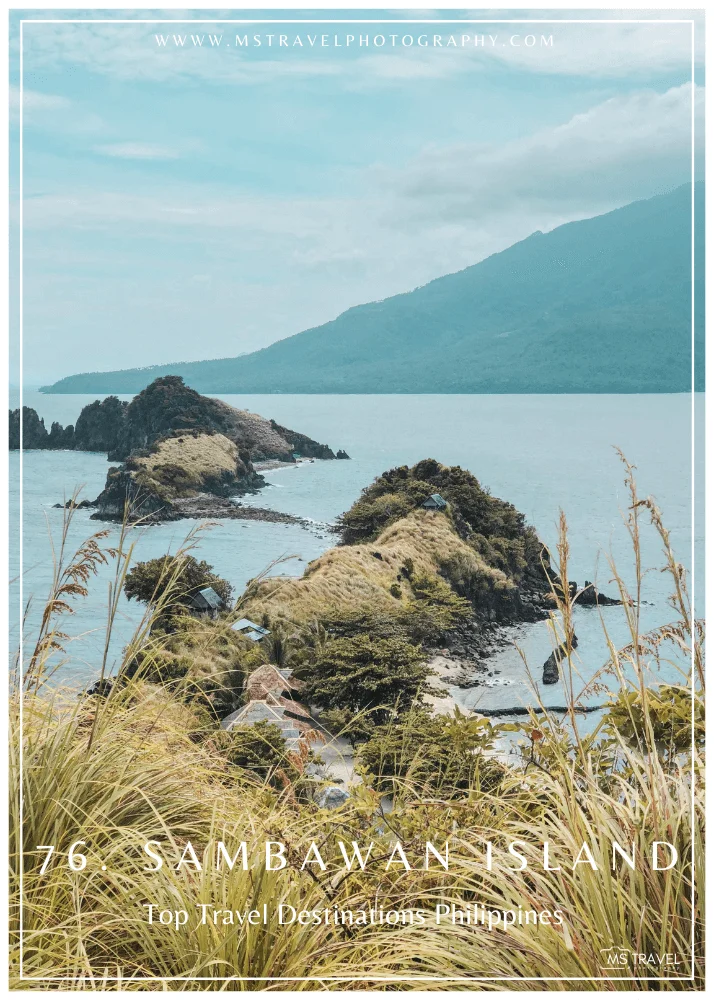
77. Britania Group of Islands
This collection of islands provides beach lovers with an exquisite environment with its 24 islets and islands with fine white sands and pristine seas. Places like Naked Island and Hagonoy are well-liked.
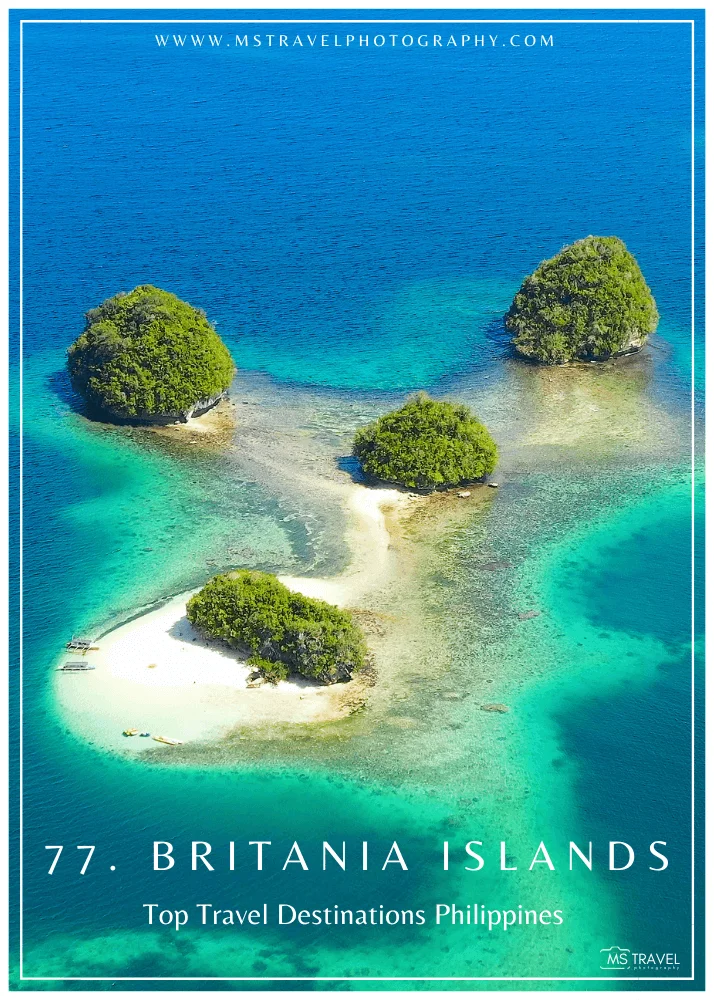
78. Islas de Gigantes
Islas de Gigantes, a chain of islands that are a part of the Panay group, are well-known for its karst landforms, turquoise seas, and delectable seafood—especially the enormous scallops.
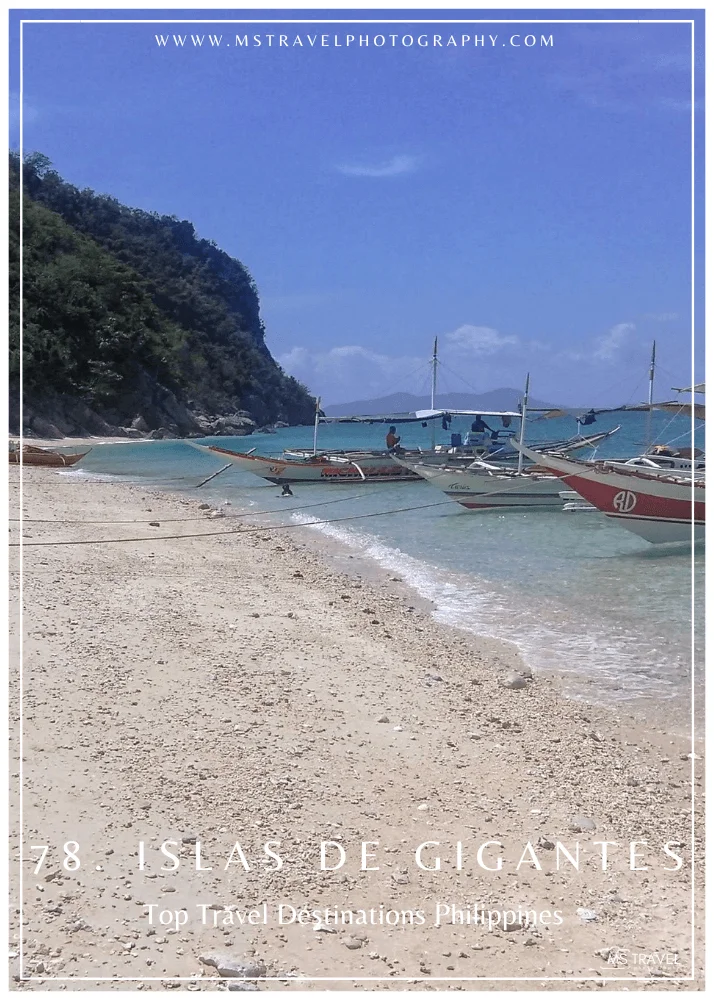
79. Sipalay
Sipalay, known as the “Jewel of the Sugar Island,” is home to gorgeous beaches including Punta Ballo and Sugar Beach. Its easygoing atmosphere and gorgeous sunsets make it a popular spot.
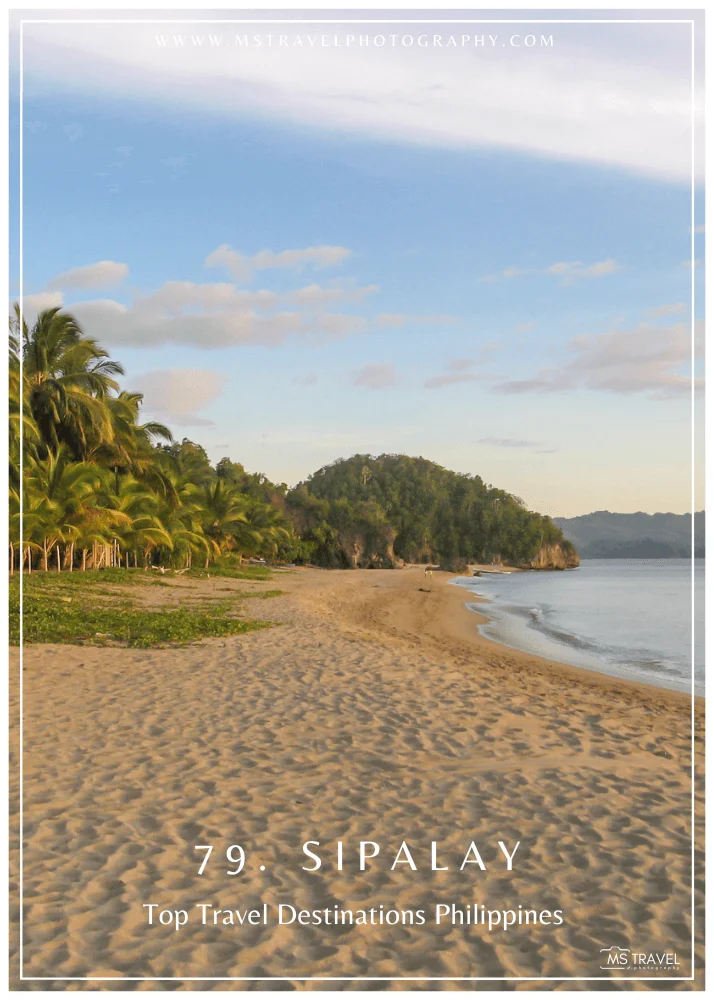
80. Bulalacao, Oriental Mindoro
This municipality has a number of undeveloped islands and beaches. Bulalacao’s tranquil surroundings are ideal for anybody seeking a peaceful seaside getaway.
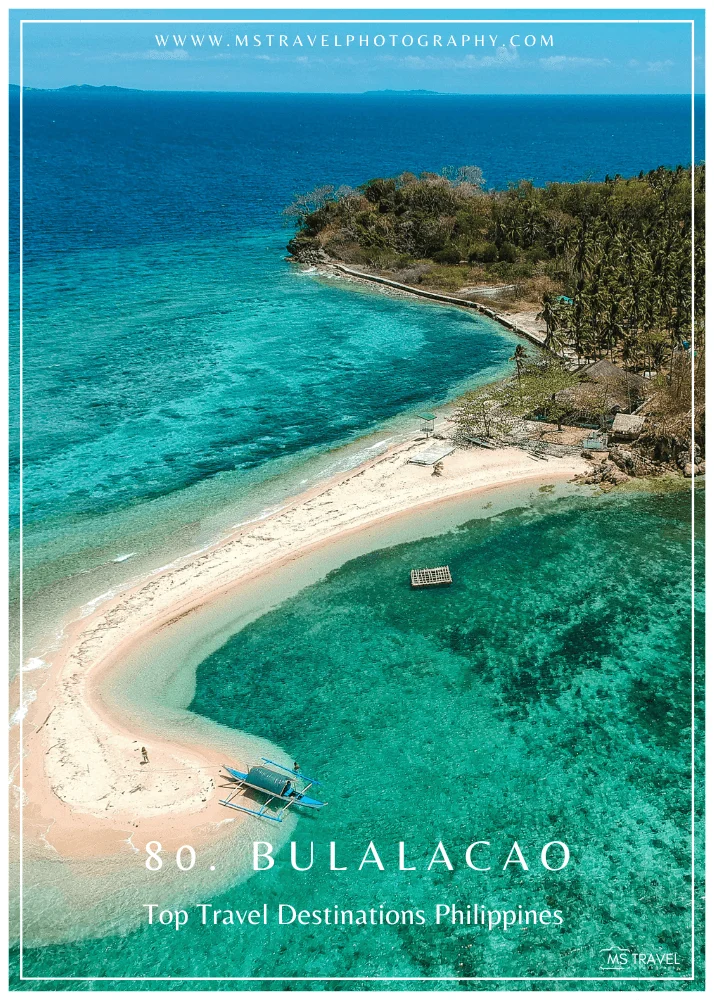
81. Tabuk, Kalinga
While Tabuk provides tranquil scenery like the Chico River, which is ideal for white-water rafting, and the Mabilong Weaver’s Village, where one can observe traditional weaving, Kalinga is more commonly known for its tattooed tribal inhabitants.
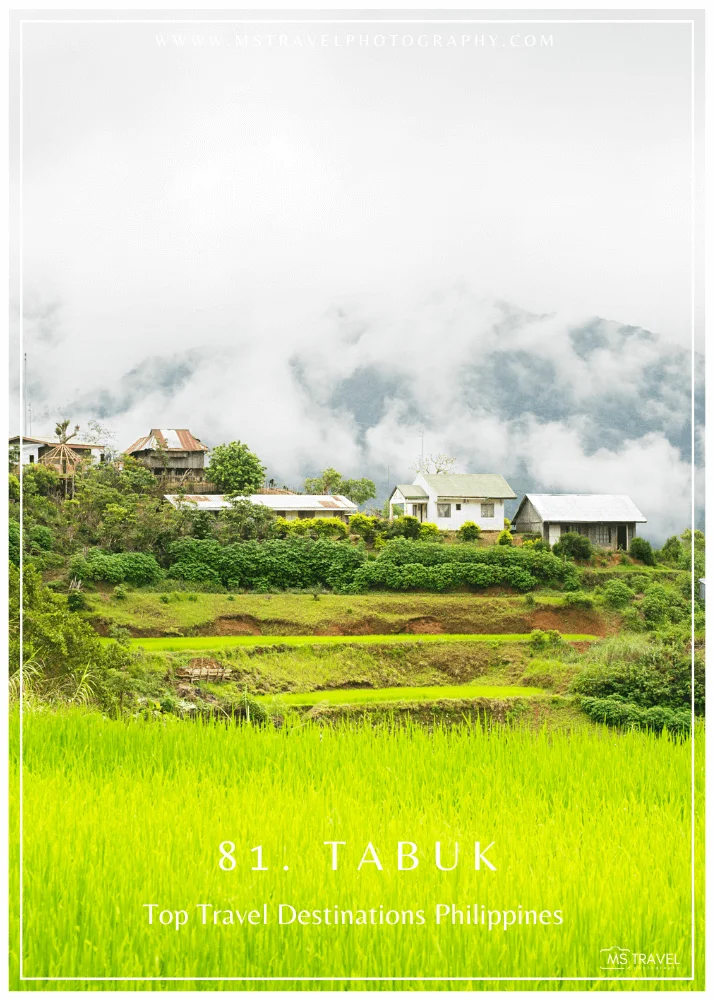
82. Bantayan Island, Cebu
Bantayan, renowned for its breathtaking beaches and relaxed atmosphere, also has historical landmarks, such as churches that date back centuries. In addition, it’s a dried fish center that draws both residents and visitors.
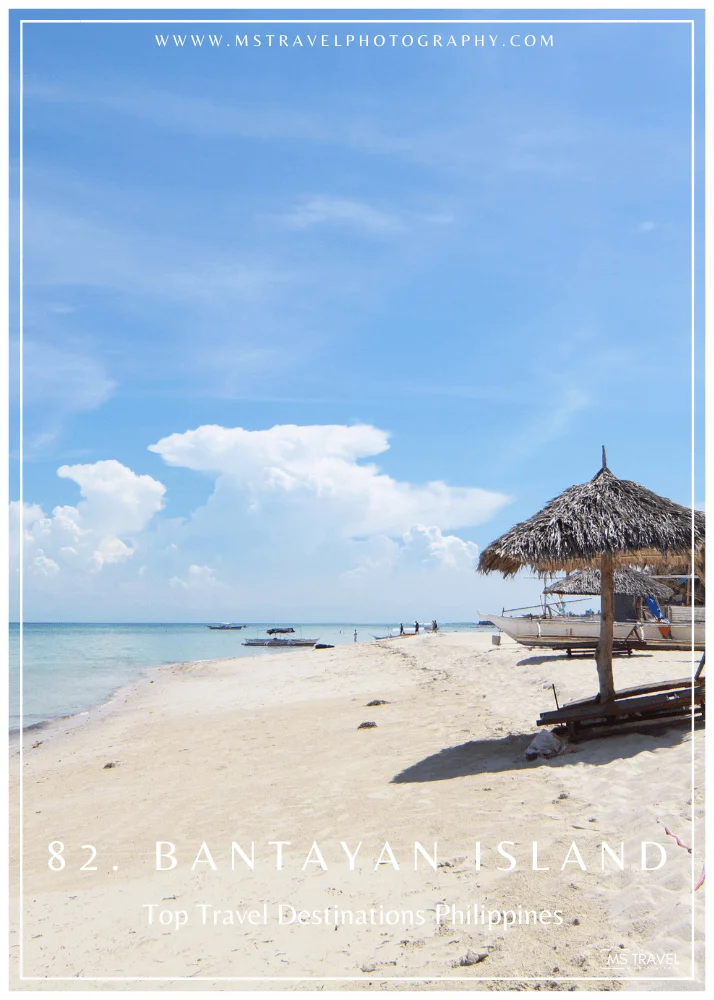
83. Mati, Davao Oriental
Mati, home of the well-known Dahican Beach, is a surfer’s and skimboarder’s paradise. Additionally, the city provides a breathtaking vista from a roadside overlook of Sleeping Dinosaur Island.
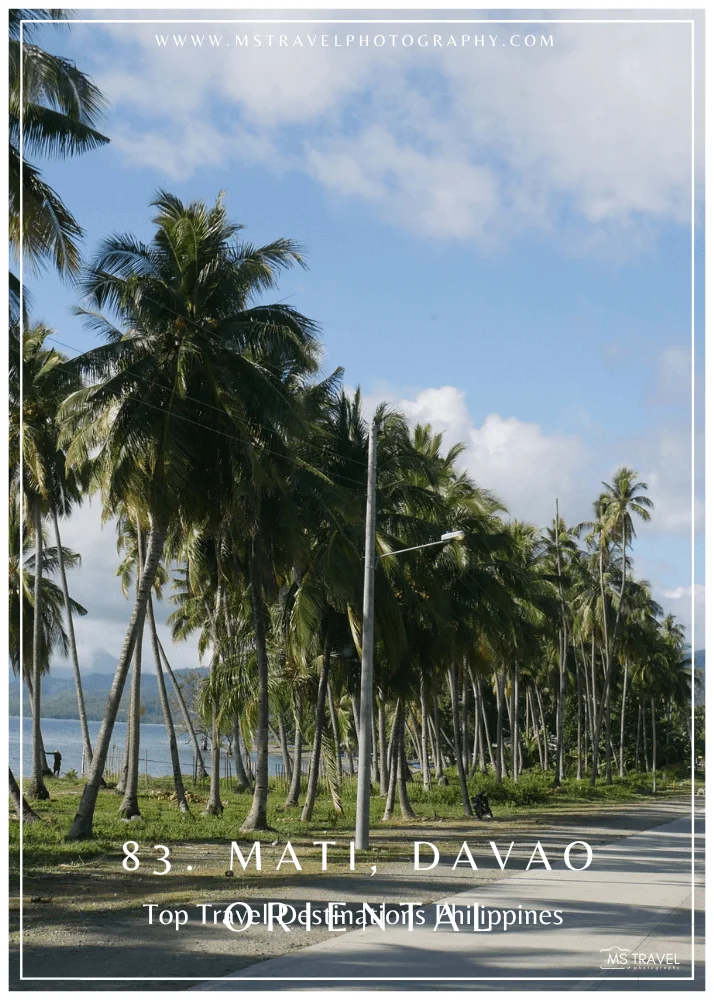
84.Coron and Busuanga, Palawan
Though they are frequently discussed as a group, they provide distinct experiences. Coron is well-known for its lakes and underwater wrecks, while Busuanga boasts immaculate beaches and is an excellent place to go island hopping.
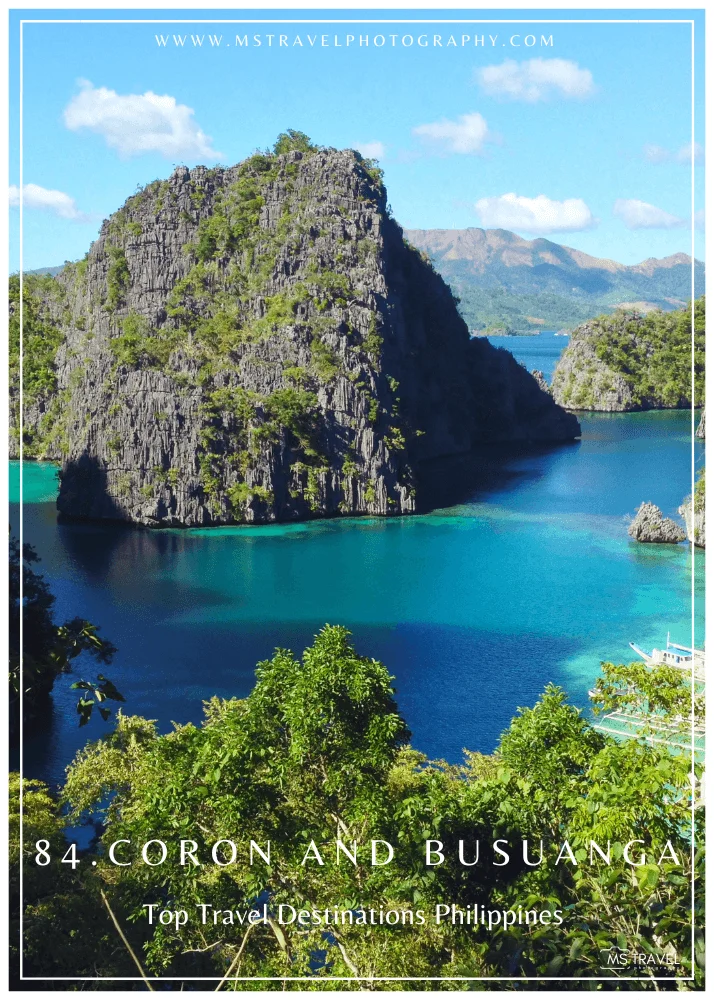
85. Echo Valley
In addition to its well-known hanging coffins, Sagada’s Echo Valley boasts breathtaking scenery, unique limestone formations, and trekking paths that give adventure and a greater comprehension of native burial customs.
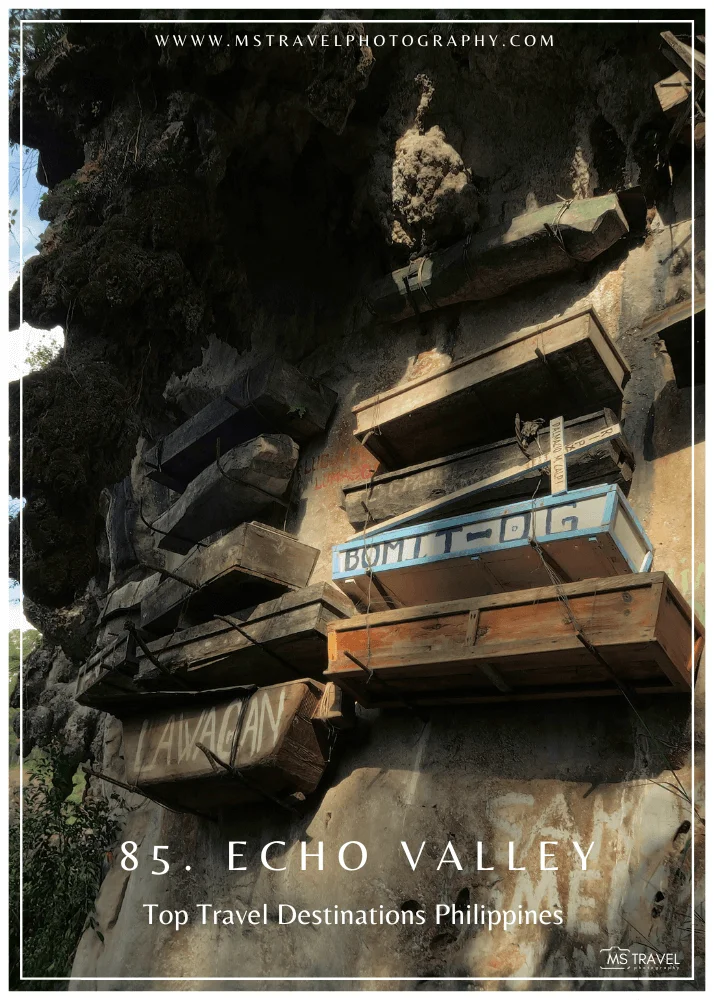
86. Anilao, Batangas
A popular destination for diving and snorkeling, Anilao is dubbed the “Nudibranch Capital of the World”. There are many different types of fish, corals, and nudibranchs in this varied marine environment.
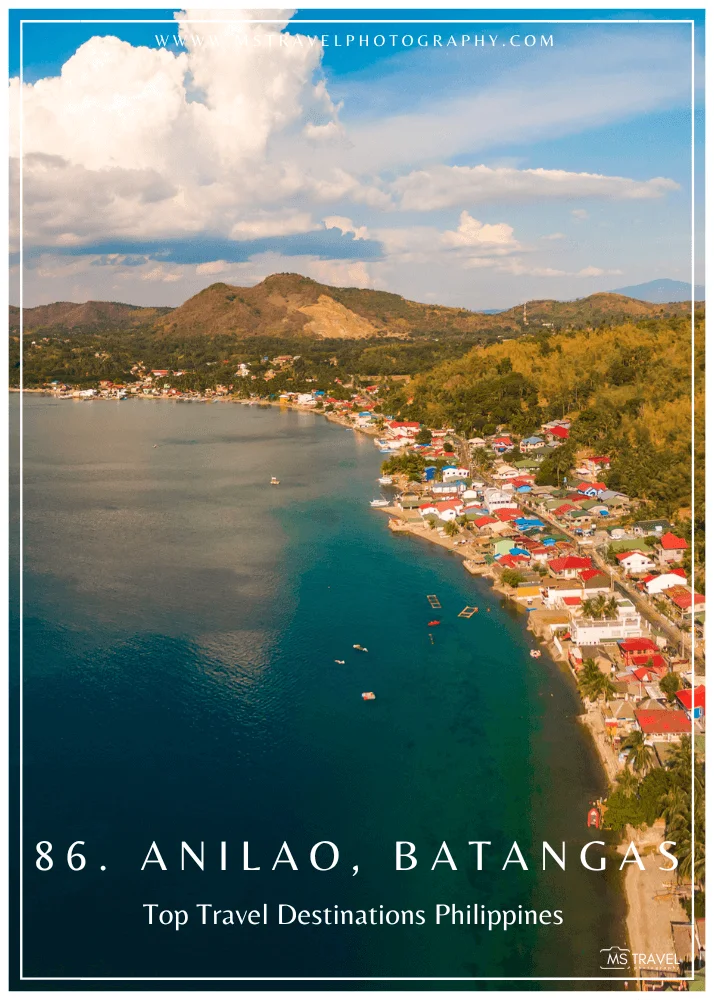
87. Capones Island, Zambales
This rocky island is well-known for its antique lighthouse and its coves; beach camping and photography are popular activities on it.
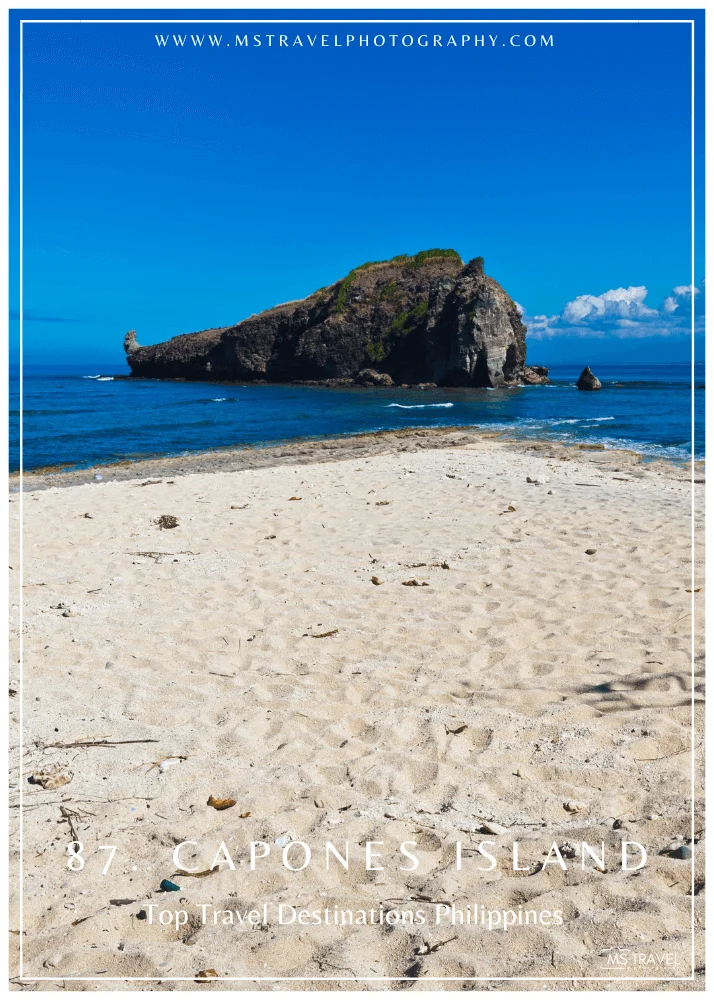
88. Taal Volcano
It is one of the world’s smallest active volcanoes and is special since it has a lake inside a larger volcano.
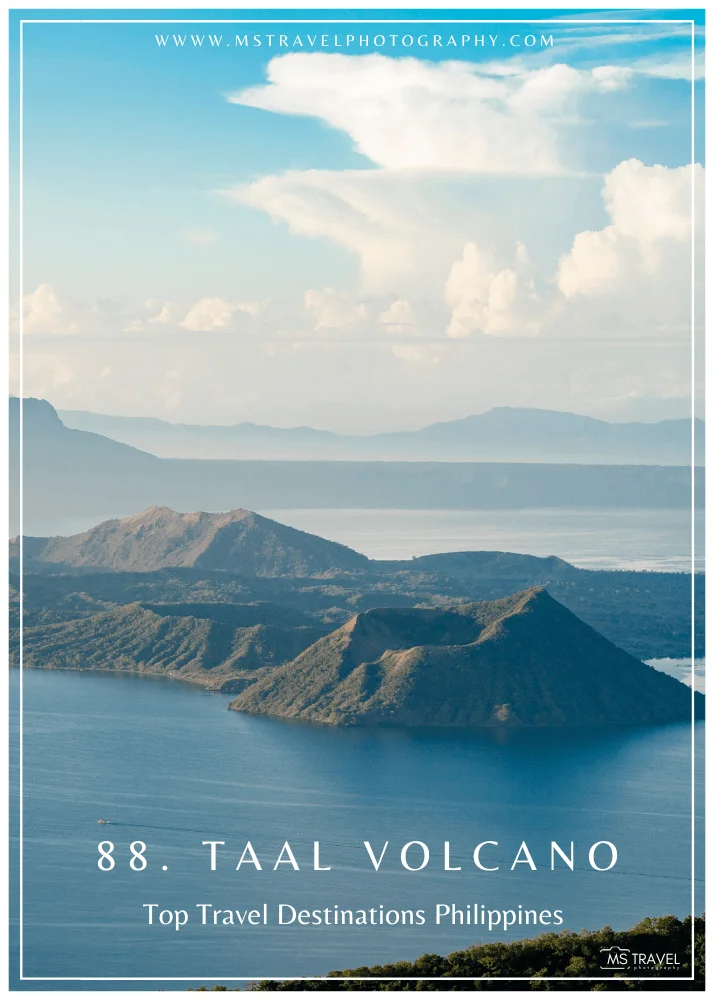
89. Samal Island
Samal Island, well-known for its resorts, is a tropical paradise with clean, white sand beaches, crystal-clear seas, and sights like the world’s biggest fruit bat colony in the Monfort Bat Cave and Hagimit Falls.
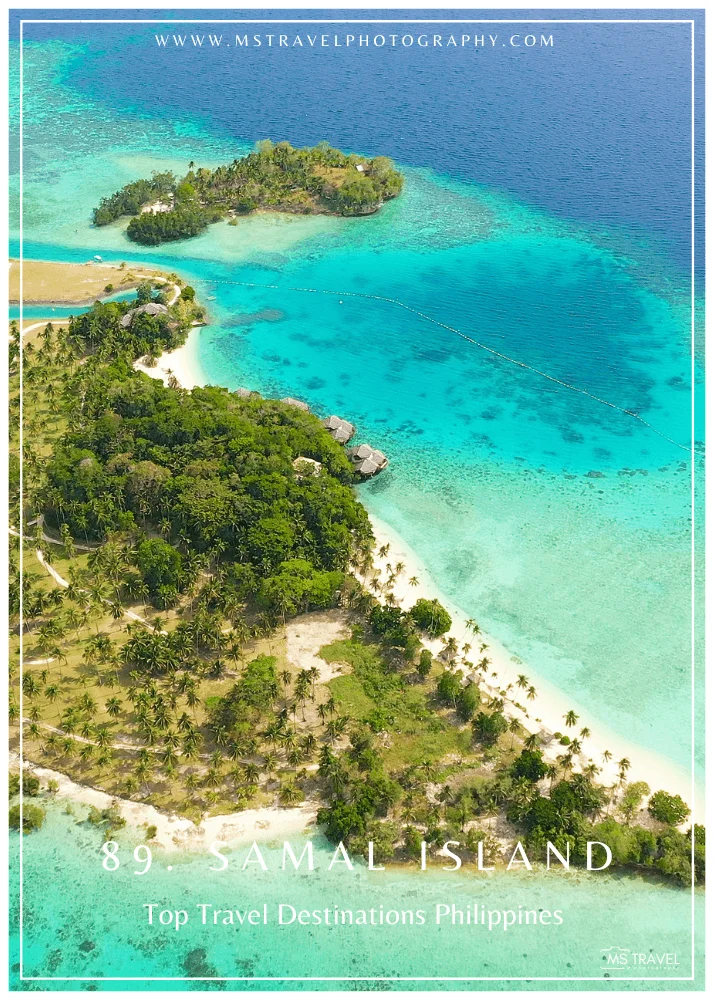
90. Tinuy-an Falls
Tinuy-an Falls, a magnificent three-tiered waterfall in Burboanan, Bislig City, Surigao del Sur, is sometimes referred to as the “Niagara Falls of the Philippines”. It is one of the widest waterfalls in the nation, measuring 95 meters in width and rising to a maximum height of 55 meters. As such, visitors from all over the world enjoy visiting this renowned destination in addition to residents. A captivating curtain of white foam is created by the flowing waves, and it contrasts exquisitely with the verdant surroundings.
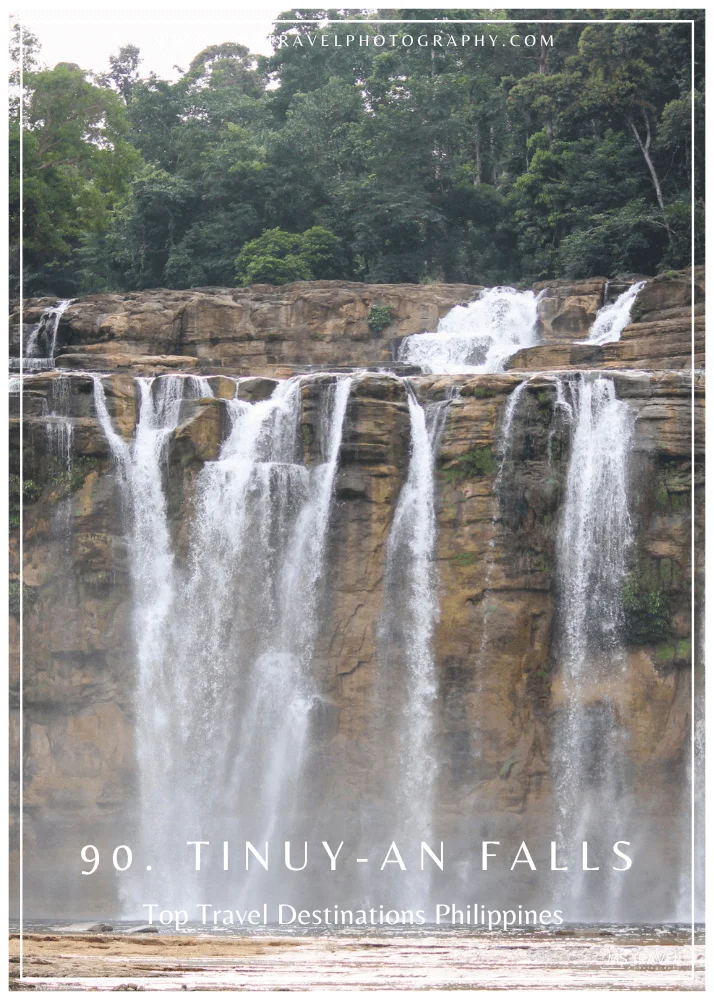
91. Enchanted River
A saltwater river that empties into the Philippine Sea, the Enchanted River is well-known for its deep blue waters and enigmatic depths. Because of its unknown depths and the diverse range of colorful fish that arrive during feeding season, the locals think it’s magical.
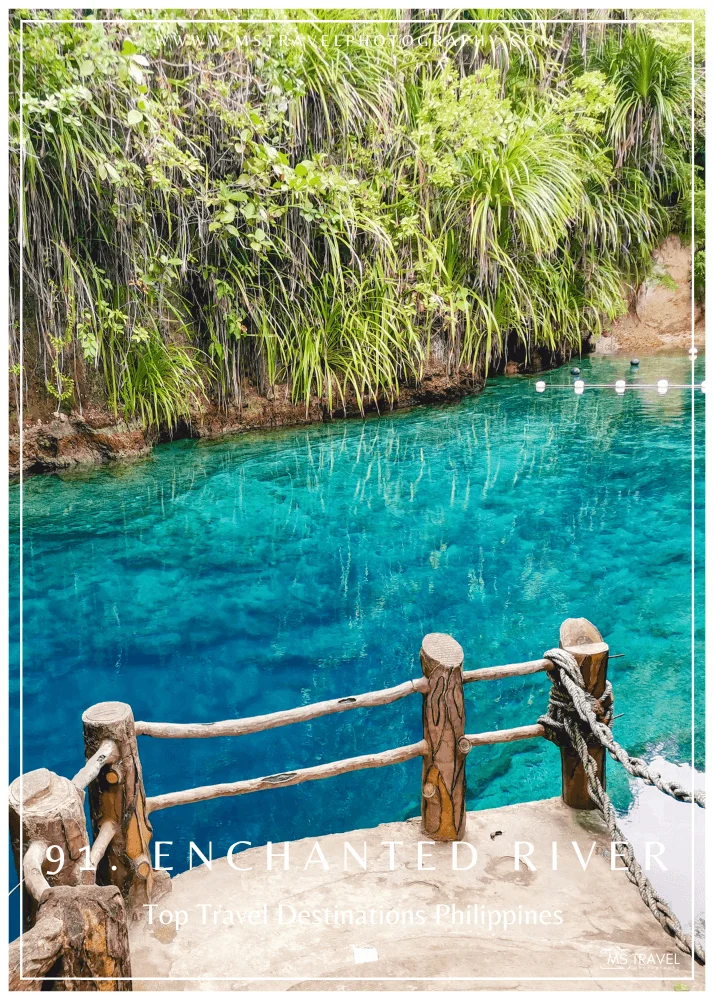
92. Mount Apo
Davao del Sur and North Cotabato are separated by Mount Apo, the Philippines’ highest mountain, which is 2,954 meters above sea level. This biodiverse mountain is home to the endangered Philippine eagle. Hikers will have an amazing time there, with a range of landscapes including rainforests and volcanic peaks. It is strongly embedded in the culture and is respected by the Lumad and local Muslim groups.
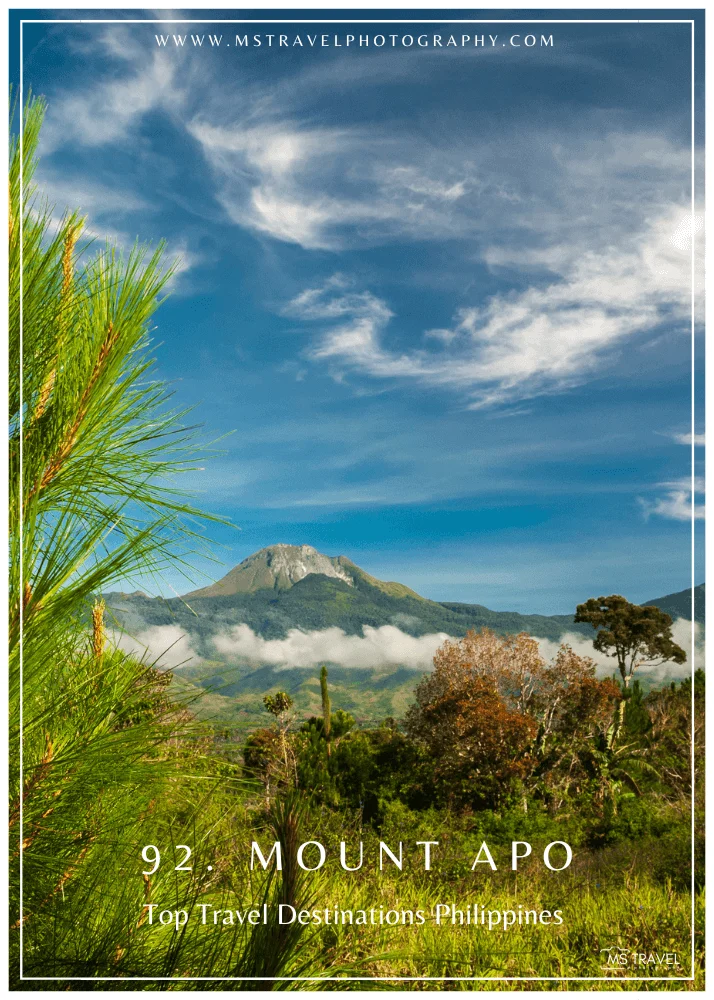
93. Sorsogon
Southeast Luzon’s Sorsogon province is well known for its wealth of scenic natural areas and rich cultural heritage. There are also serene lakes, spotless beaches, and fascinating tunnels throughout the province. Sorsogon captivates visitors with its captivating historical landmarks and vibrant local festivals, providing a unique blend of culture and environment.
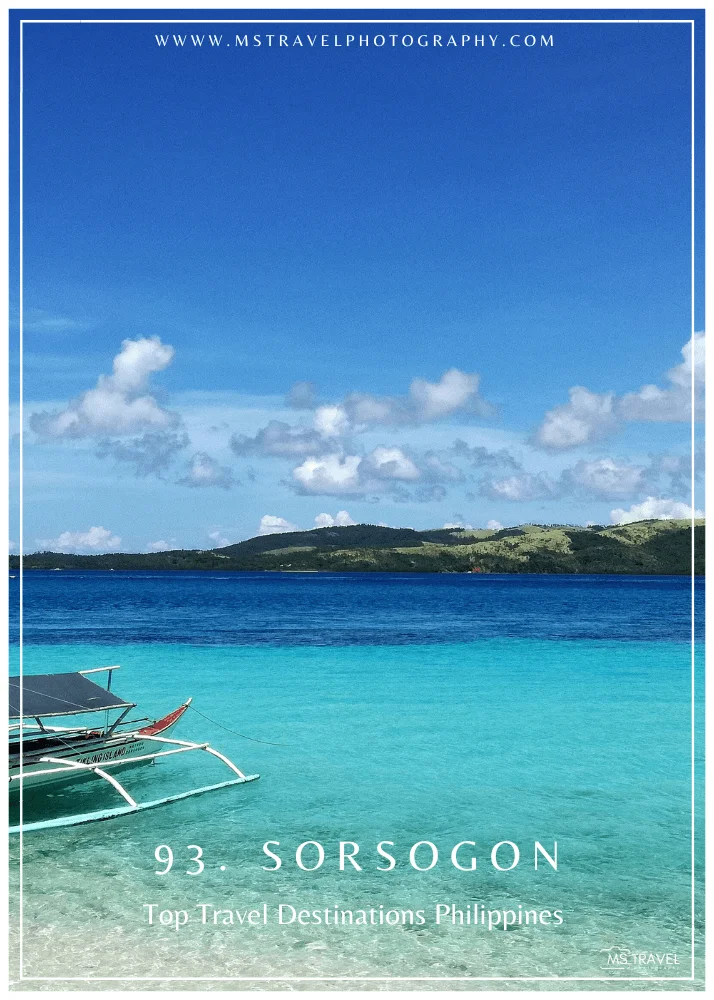
94. Bolinao, Pangasinan
Known for its breathtaking beaches like Patar White Beach, Bolinao is a coastal jewel tucked away on Pangasinan’s western edge. Offering expansive views of the West Philippine Sea, the Cape Bolinao Lighthouse is among the highest in the Philippines. Among its freshwater features are Bolinao Falls and Enchanted Cave, which provide cool getaways. The town is proud of its rich underwater ecology and flourishing coral gardens, in addition to its abundance of marine wildlife.
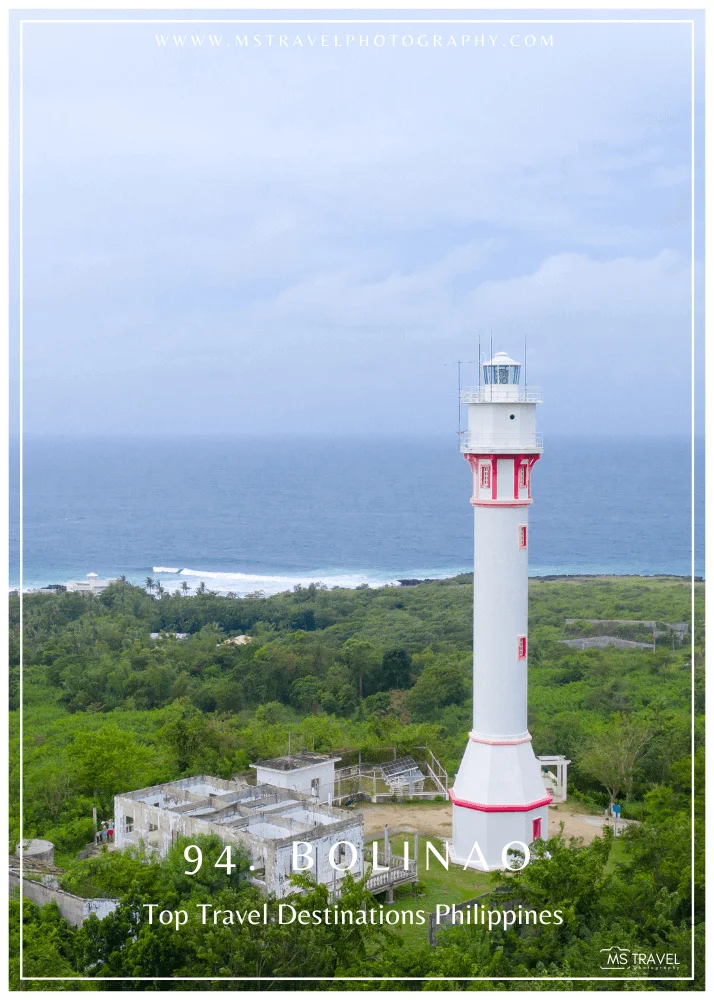
95. Sulu
Over 400 volcanic islands and islets make up the archipelago province of Sulu, which is located in the Sulu Sea in the southern Philippines. Sulu has a rich cultural legacy, mostly from the Tausug people, who are well-known for their traditional dance, the Pangalay, despite its reputation for security issues. Numerous old mosques may be found across the province, such as the Mauboh Mosque, which is well-known for its white pillars. The islands’ azure seas are teeming with a variety of marine life, providing unexplored opportunities for diving and snorkeling.
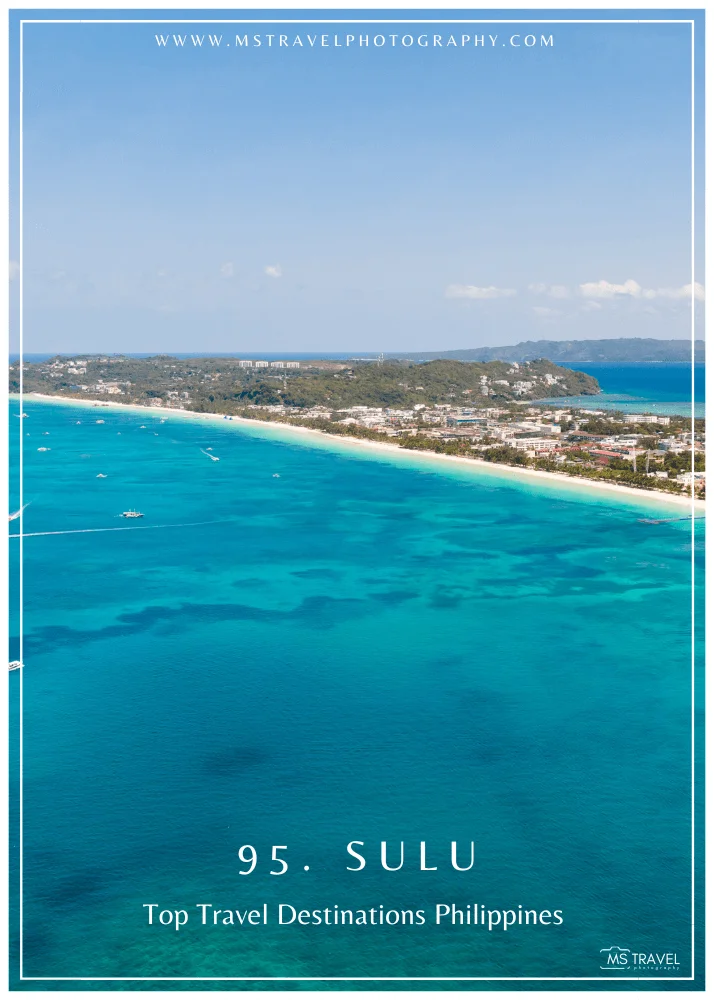
96. Zamboanga
Zamboanga City, sometimes called the “City of Flowers,” is a thriving city in Mindanao’s southwest. The city, which is well-known for its distinctive fusion of Spanish and indigenous traditions, is home to the ancient Fort Pilar and the vibrant vinta boats that adorn its waters. The Yakan Village is a display for the Yakan people’s extensive weaving customs. Great Santa Cruz Island is a must-see beach location in the area because of its gorgeous pink sands.
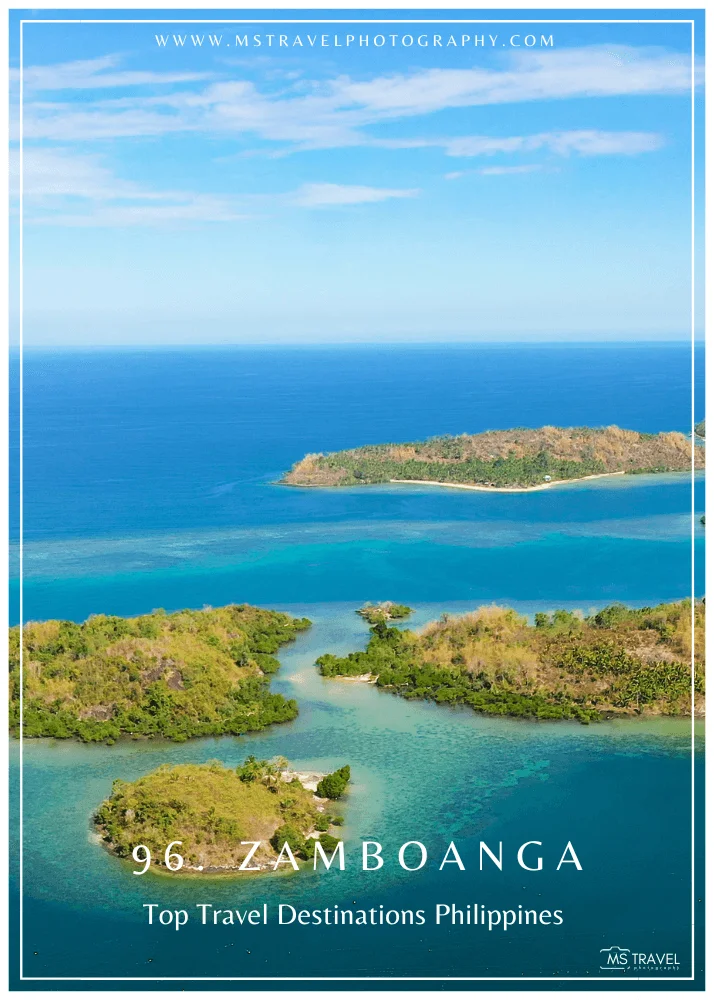
97. Calauit, Palawan
Calauit Island, which lies off the northwest coast of Palawan, is most recognized for its unique conservation project, Safari Park, which was started in the 1970s with the goal of providing a haven for African species. In this tropical paradise, unique Philippine animals like the Calamian deer live alongside giraffes, zebras, and many types of antelope. The island is home to peaceful beaches, coral reefs, and mangrove forests in addition to its unique wildlife. Calauit is an example of how ecotourism and conservation initiatives have coexisted in the nation.
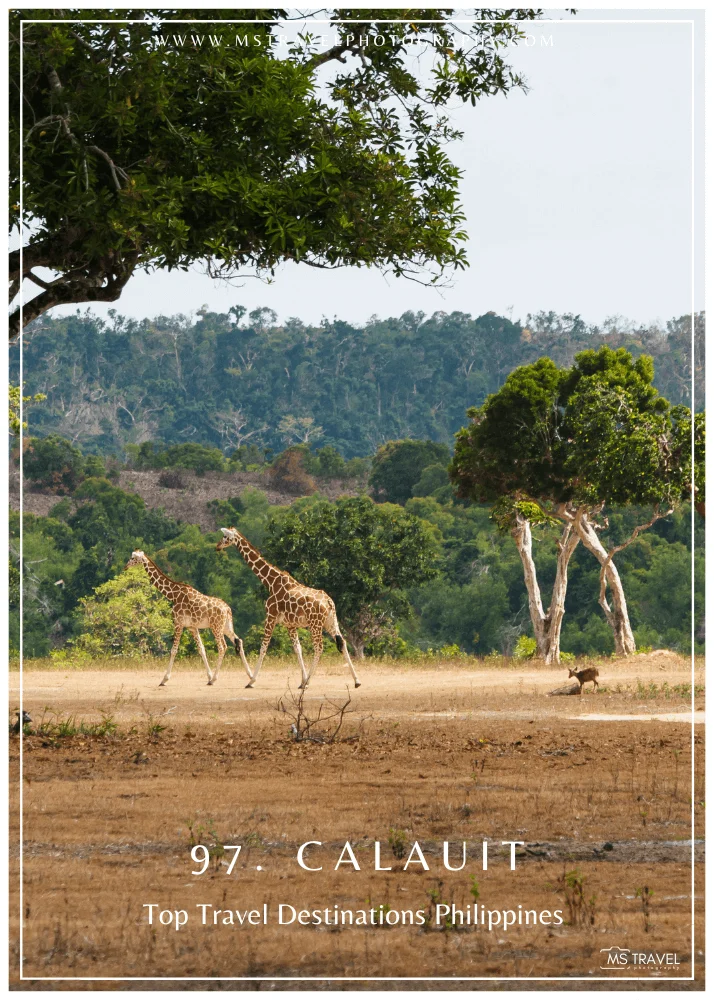
98. Cagsawa Ruins
The Cagsawa Ruins, evocative remains of a Mayon Volcano eruption in 1814, are situated in Daraga, Albay. The famous bell tower, which protrudes from the earth and serves as a mute reminder of the might of nature, is all that’s left of the once-grand Cagsawa Church. One of the most photographed locations in the Philippines is this historical landmark, which is framed by the nearly flawless cone of the Mayon Volcano. The ruins are not only hauntingly beautiful, but they also serve as a sobering reminder of how vulnerable populations living close to active volcanoes are.
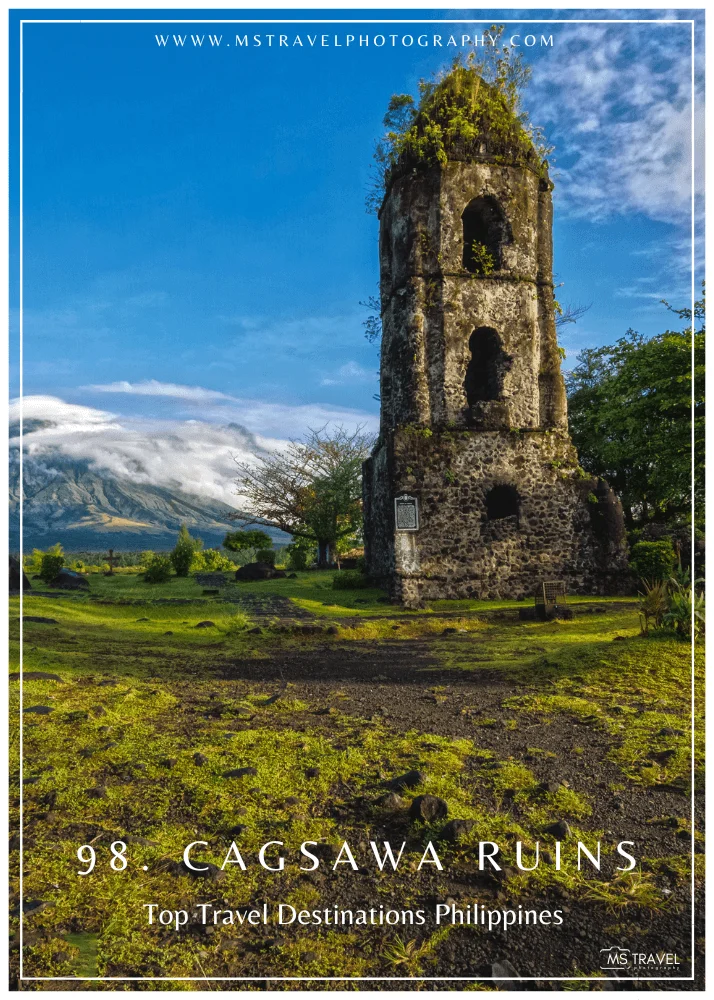
99. Cagayan River
The longest and one of the most important rivers in the Philippines, the Cagayan River flows through the Cagayan Valley Region in northern Luzon. It is more than 500 kilometers long and provides most of the water needed for agriculture as well as supporting a variety of habitats. The river’s basin is rich in natural resources and is home to a wide variety of plants and animals. In addition to its natural value, the Cagayan River attracts adventurers from all over the world with its exhilarating white-water rafting excursions. The Callao Cave, which is located nearby and is home to the earliest known human bones in the Philippines, highlights the area’s rich history and cultural significance.
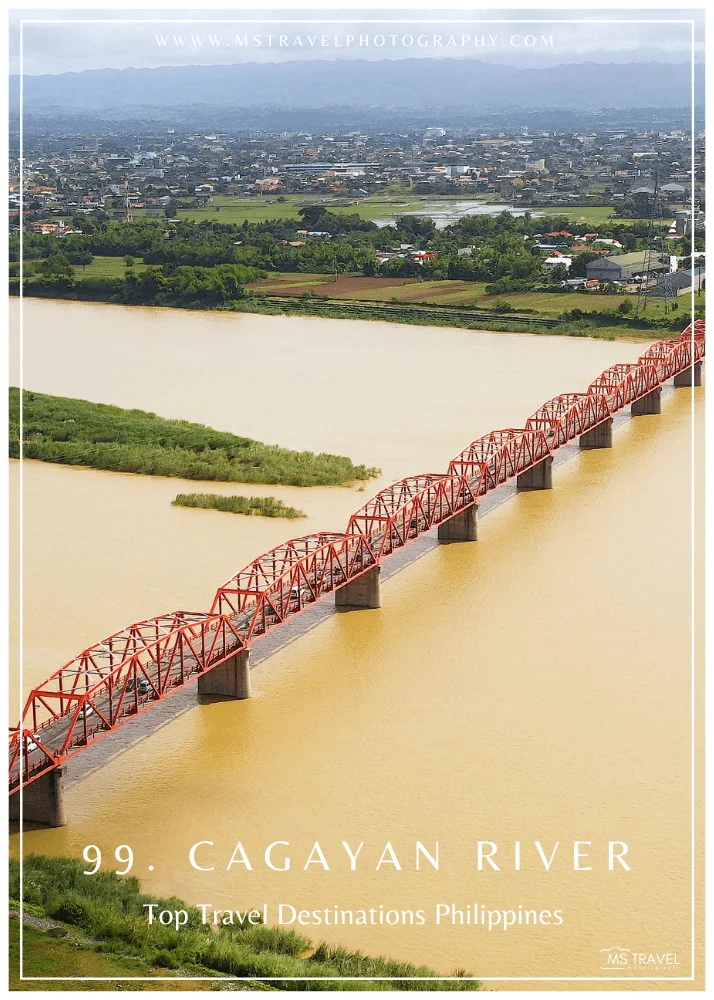
100. Asik-Asik Falls, Cotabato
Tucked up in the isolated slopes of Alamada, Cotabato, the Asik-Asik Falls is a captivating waterfall that swells straight out of the lush rock face. With its over 140-meter width, the tumbling waters resemble many threads, producing an ethereal sight. “Asik-Asik,” the name of the falls, is derived from the Hiligaynon word for “sprinkle,” which perfectly describes its exquisite cascade. For those looking to discover the Philippines’ undiscovered natural treasures, Asik-Asik Falls has become a must-see destination because of its pristine beauty and the mystery surrounding its origin.
